|
|

|
Day 13, Friday 10 May
B2 update…….. After being quite satisfied with the accommodation at B2 in Lampang, I had assumed that the rooms at B2 Airport Hotel here in Chiang Mai would be of the same standard but yesterday we were obliged to change rooms; the air-conditioning was not operating to sufficiently cool the room. A couple of minor issues concerning water pressure and toilet flush with the second room and poor workmanship here has lowered my rating for this hotel. It’s also near a busy main road and with no catering onsite we have an unnecessary walk to find even the basics. With one more night here we will adjust but cosy it’s just not.
Slow progress…….. Any thoughts I had that I could effortlessly just sail through my site list I prepared on the first day are disappearing rapidly. There are many reasons. I just cannot be brief when I write up my blog; there is so much information about the sites I visit and the interest therein. The early morning starts I desperately need, just doesn’t happen. So far I have covered the historical sites in and around the city but Chiang Mai is not at all conducive to access to these precious sites in a large city environment. Parking is a nightmare and it may well be that using songtheaws and tuk tuks as most tourists do, is a more efficient way to get around. The result of all this is that today is bound to be another day of sufferance in busy streets. A further reason is my obligation to allow Katoon to meet her spiritual needs which are far from brief and often doubles the amount of time I feel I need on temple visits.
B2 update…….. After being quite satisfied with the accommodation at B2 in Lampang, I had assumed that the rooms at B2 Airport Hotel here in Chiang Mai would be of the same standard but yesterday we were obliged to change rooms; the air-conditioning was not operating to sufficiently cool the room. A couple of minor issues concerning water pressure and toilet flush with the second room and poor workmanship here has lowered my rating for this hotel. It’s also near a busy main road and with no catering onsite we have an unnecessary walk to find even the basics. With one more night here we will adjust but cosy it’s just not.
Slow progress…….. Any thoughts I had that I could effortlessly just sail through my site list I prepared on the first day are disappearing rapidly. There are many reasons. I just cannot be brief when I write up my blog; there is so much information about the sites I visit and the interest therein. The early morning starts I desperately need, just doesn’t happen. So far I have covered the historical sites in and around the city but Chiang Mai is not at all conducive to access to these precious sites in a large city environment. Parking is a nightmare and it may well be that using songtheaws and tuk tuks as most tourists do, is a more efficient way to get around. The result of all this is that today is bound to be another day of sufferance in busy streets. A further reason is my obligation to allow Katoon to meet her spiritual needs which are far from brief and often doubles the amount of time I feel I need on temple visits.
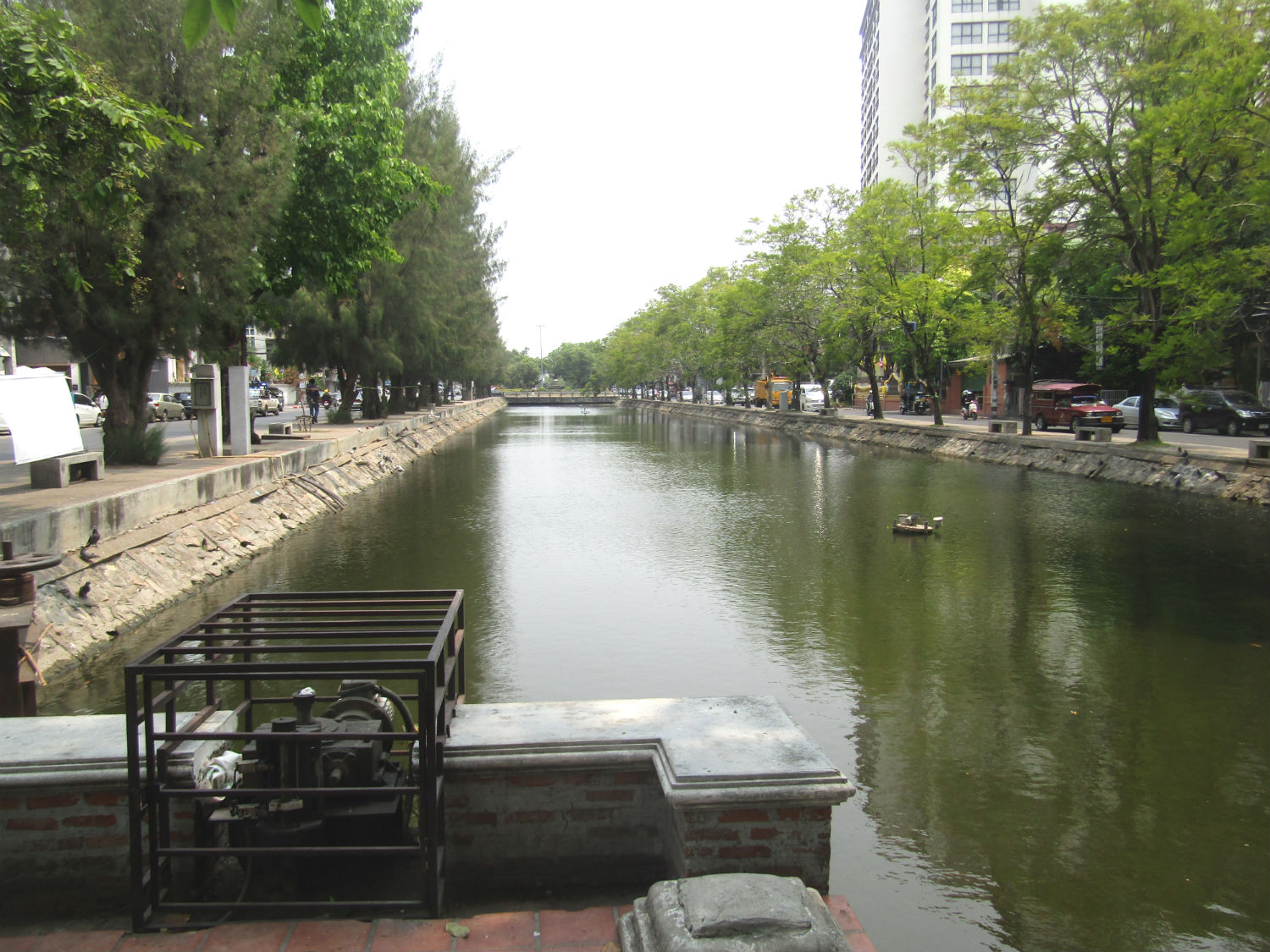
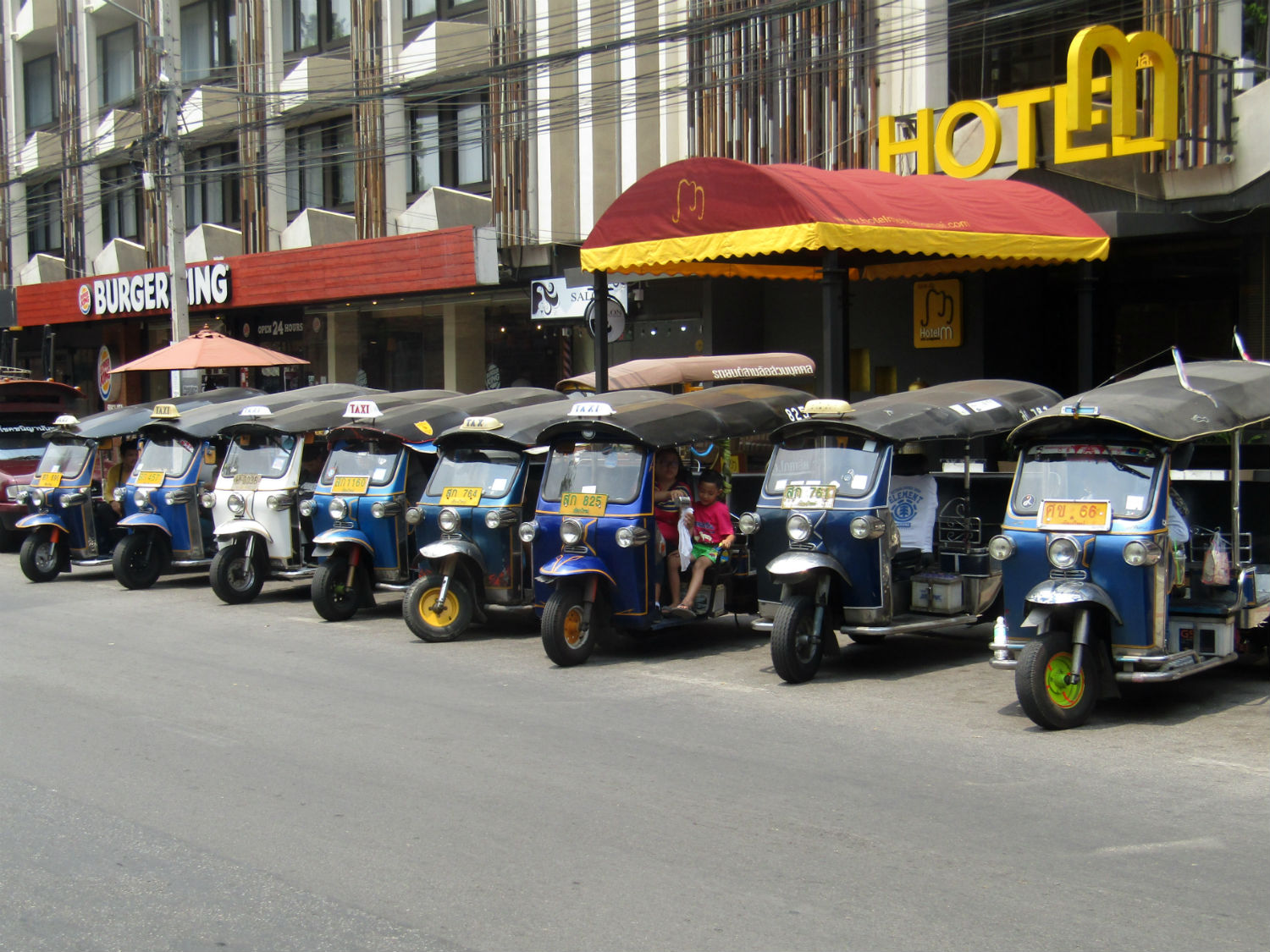
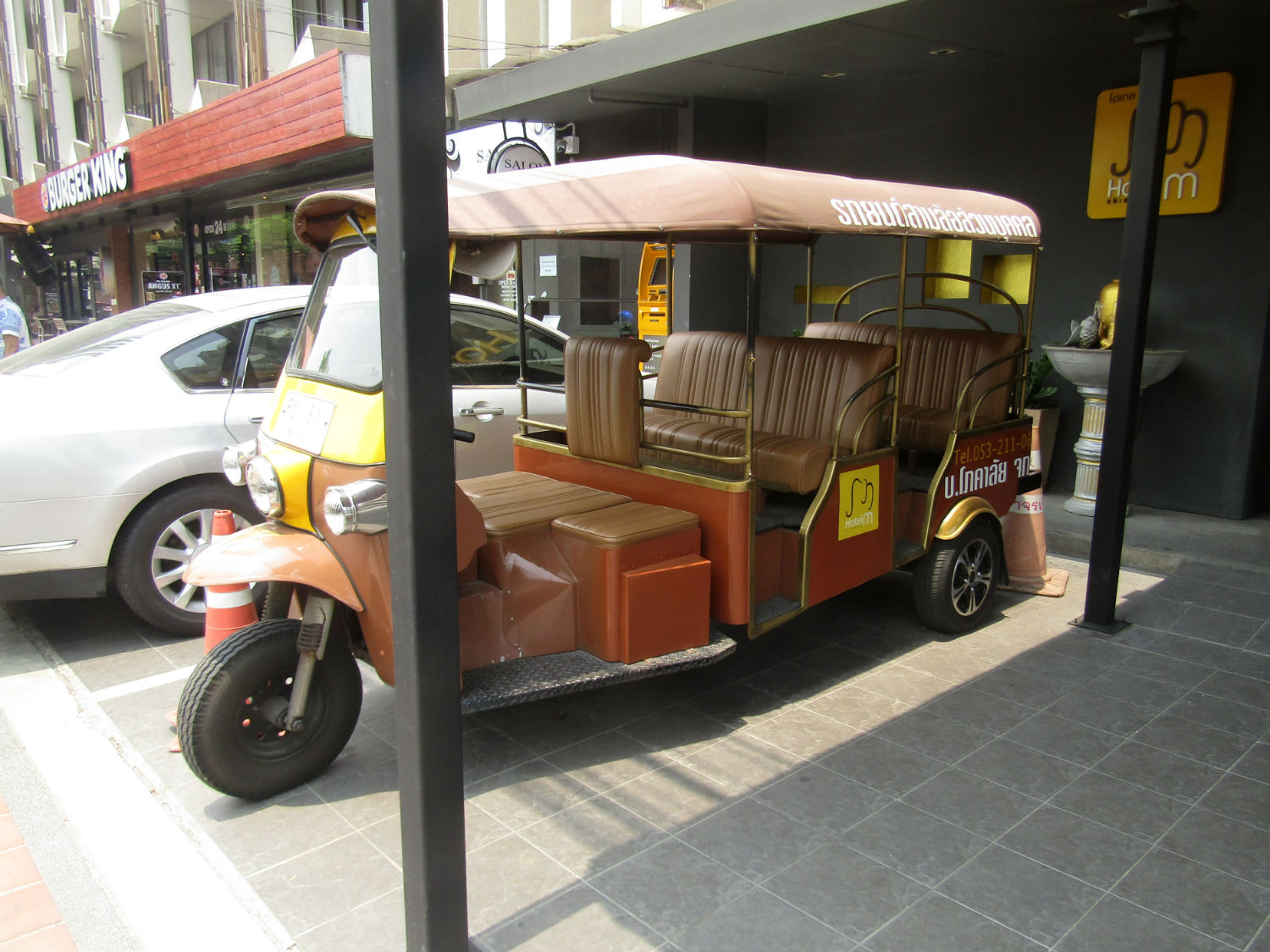 A section of the Moat and an example of City Transport, Chiang Mai
A section of the Moat and an example of City Transport, Chiang Mai
Chiang Mai City Wall……..
The ancient city wall, while being a major obstacle for traffic, is an amazing example of medieval fortifications around a city. The city of Chiang Mai was founded by King Mangrai in 1296. It’s town plan was square in shape (1,550 metres wide and 1600 metres long), enclosed by an earthen embankment. The city walls of Chiang Mai were rebuilt twice during the times of Phra Muang Kaew in 1519 and King Kawila in 1796. The walls had five gates: Tha Phae Gate on the east side (originally named Chiang Chueak Gate, but later over confusion of names called Tha Phae which was the name of the gate in the outer wall near the Ping River’s pier, Chiang Mai Gate and Suan Prung Gate on the south side, Suan Dok Gate on the west side and Chang Phuak Gate on the north side. The bastions at the four corners are all called ‘jaeng’, (a local term for corner).
As mentioned the best way to view the wall is to walk from a convenient location and use the local transport which is in abundance and stops nearly everywhere. Arriving at the southern wall Katoon does manage to park the car and I’m able to take shots of both the Chiang Mai Gate and Jaeng Katam, the southern corner bastion.
From there we follow the eastern wall leading to the Tha Prae Gate. This gate, so important in ancient times, is today the best preserved and most visited section of the wall. Katoon, using her usual charm, manages to find somewhere to park and we’re able to do what so many tourists do, just wander around taking selfies. It’s worth noting that along the eastern wall is where many of the stops, restaurants and accommodation and other services are for tourists. On top of that it is the location of the night market just alongside the gate. Well, we only have 10 minutes or so and that’s the way it is. We can now move out of the city, this time to the north.
As mentioned the best way to view the wall is to walk from a convenient location and use the local transport which is in abundance and stops nearly everywhere. Arriving at the southern wall Katoon does manage to park the car and I’m able to take shots of both the Chiang Mai Gate and Jaeng Katam, the southern corner bastion.
From there we follow the eastern wall leading to the Tha Prae Gate. This gate, so important in ancient times, is today the best preserved and most visited section of the wall. Katoon, using her usual charm, manages to find somewhere to park and we’re able to do what so many tourists do, just wander around taking selfies. It’s worth noting that along the eastern wall is where many of the stops, restaurants and accommodation and other services are for tourists. On top of that it is the location of the night market just alongside the gate. Well, we only have 10 minutes or so and that’s the way it is. We can now move out of the city, this time to the north.
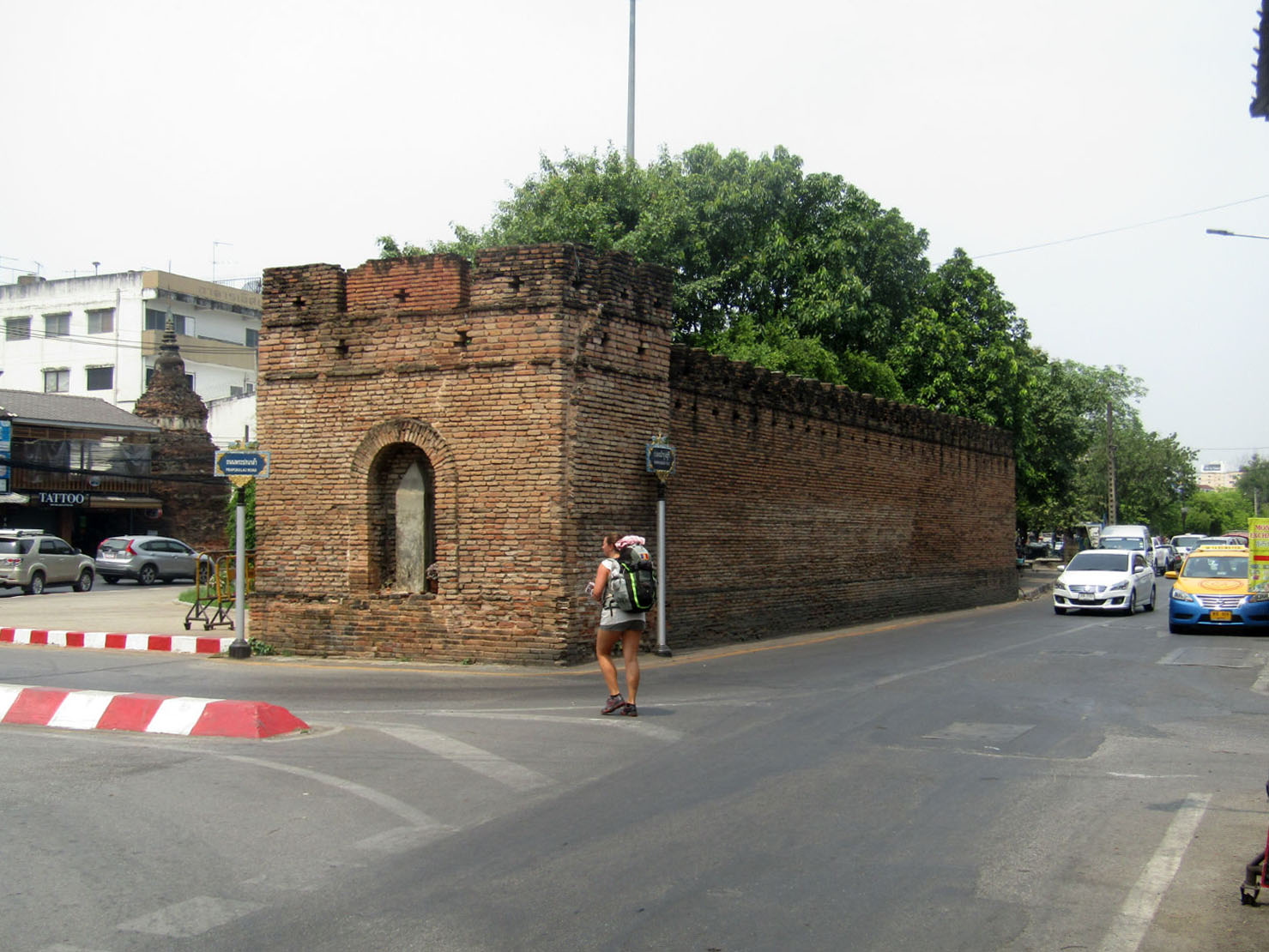


Pratu Chiang Mai and Southern Wall, Chiang Mai

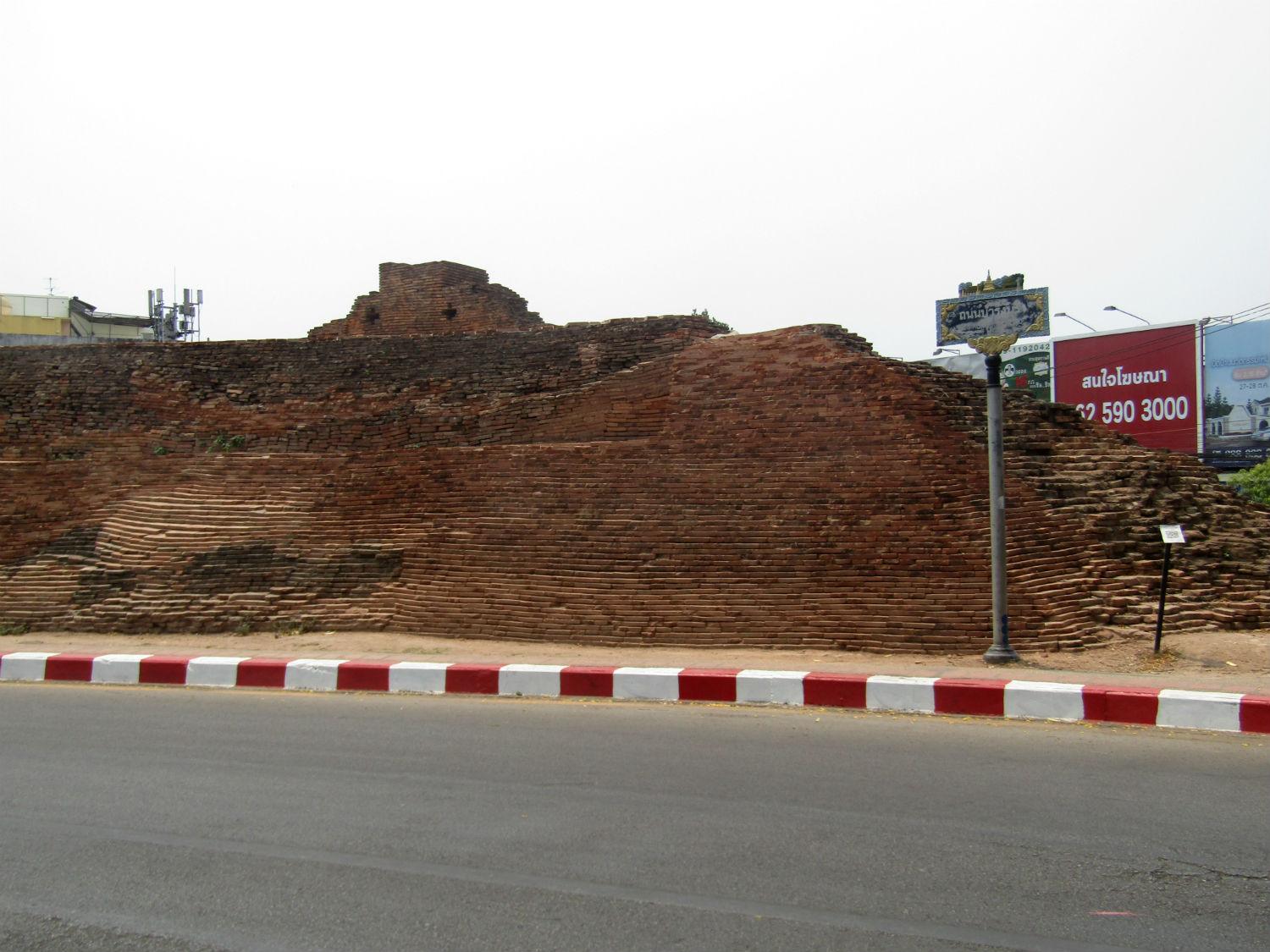
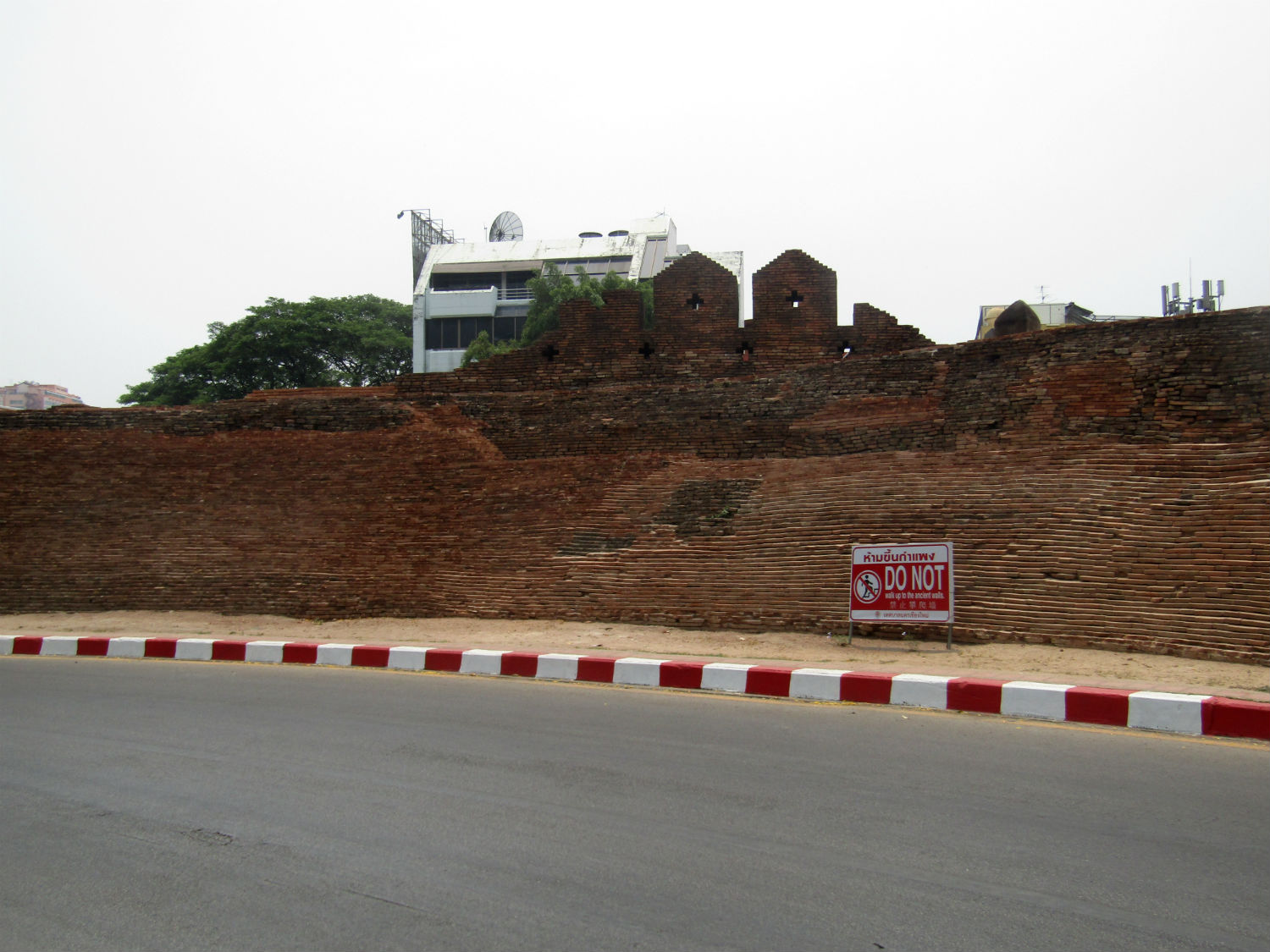
Ka-than Fort, Chiang Mai

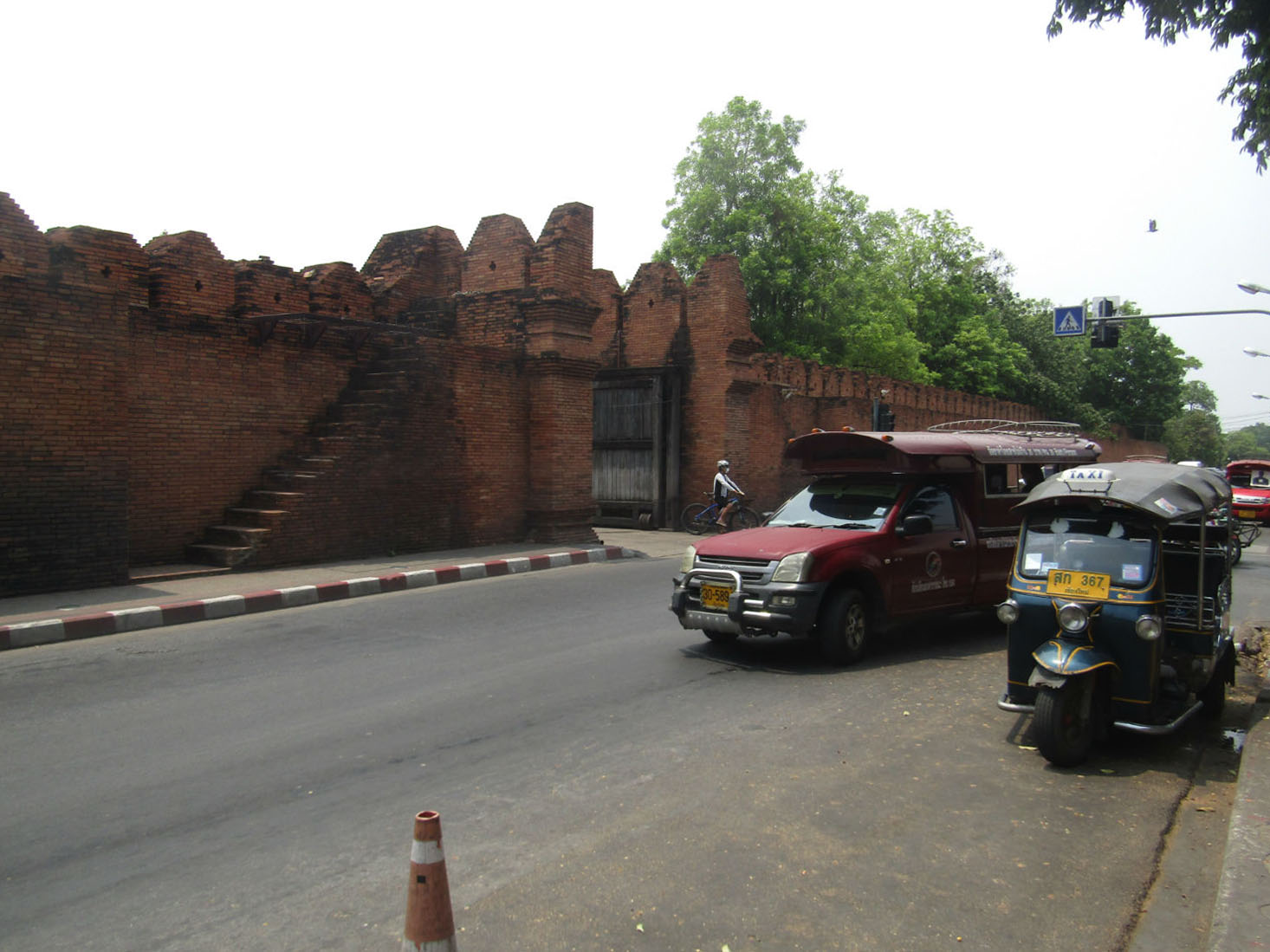
 Tha Phae Gate (Eastern Gate), Chiang Mai
Tha Phae Gate (Eastern Gate), Chiang Mai
Wat Jed Yot……..
Literally translated, Wat Jed Yot means temple of seven peaks or spires. Arriving here I soon realise that unlike previous temples I’ve visited in the city it differs in that it mainly consists of ancient monuments.
The Wat Jed Yod is an attractive Lanna era temple complex on the outskirts of Chiang Mai that contains some unique architecture. Unfortunately it is one the the least visited.
The temple is also known as Wat Chet Yot and Wat Photharam Maha Vihara, a Royal temple dating back to the 15th century. Its architectural style shows Lanna, Rattanakosin, Lao, Chinese and Indian influence. The temple was built during the reign of King Tilokkarat, King of the Lanna Kingdom from 1441 until 1487. The King’s ashes are enshrined in a chedi in the temple grounds.
In 1477 the 8th World Buddhist Council was held here to discuss the texts of the Tripitaka, the scriptures containing the Buddhist teachings.
Before moving on to the next site not far away, it’s a bowl of noodles for lunch.
The Wat Jed Yod is an attractive Lanna era temple complex on the outskirts of Chiang Mai that contains some unique architecture. Unfortunately it is one the the least visited.
The temple is also known as Wat Chet Yot and Wat Photharam Maha Vihara, a Royal temple dating back to the 15th century. Its architectural style shows Lanna, Rattanakosin, Lao, Chinese and Indian influence. The temple was built during the reign of King Tilokkarat, King of the Lanna Kingdom from 1441 until 1487. The King’s ashes are enshrined in a chedi in the temple grounds.
In 1477 the 8th World Buddhist Council was held here to discuss the texts of the Tripitaka, the scriptures containing the Buddhist teachings.
Before moving on to the next site not far away, it’s a bowl of noodles for lunch.
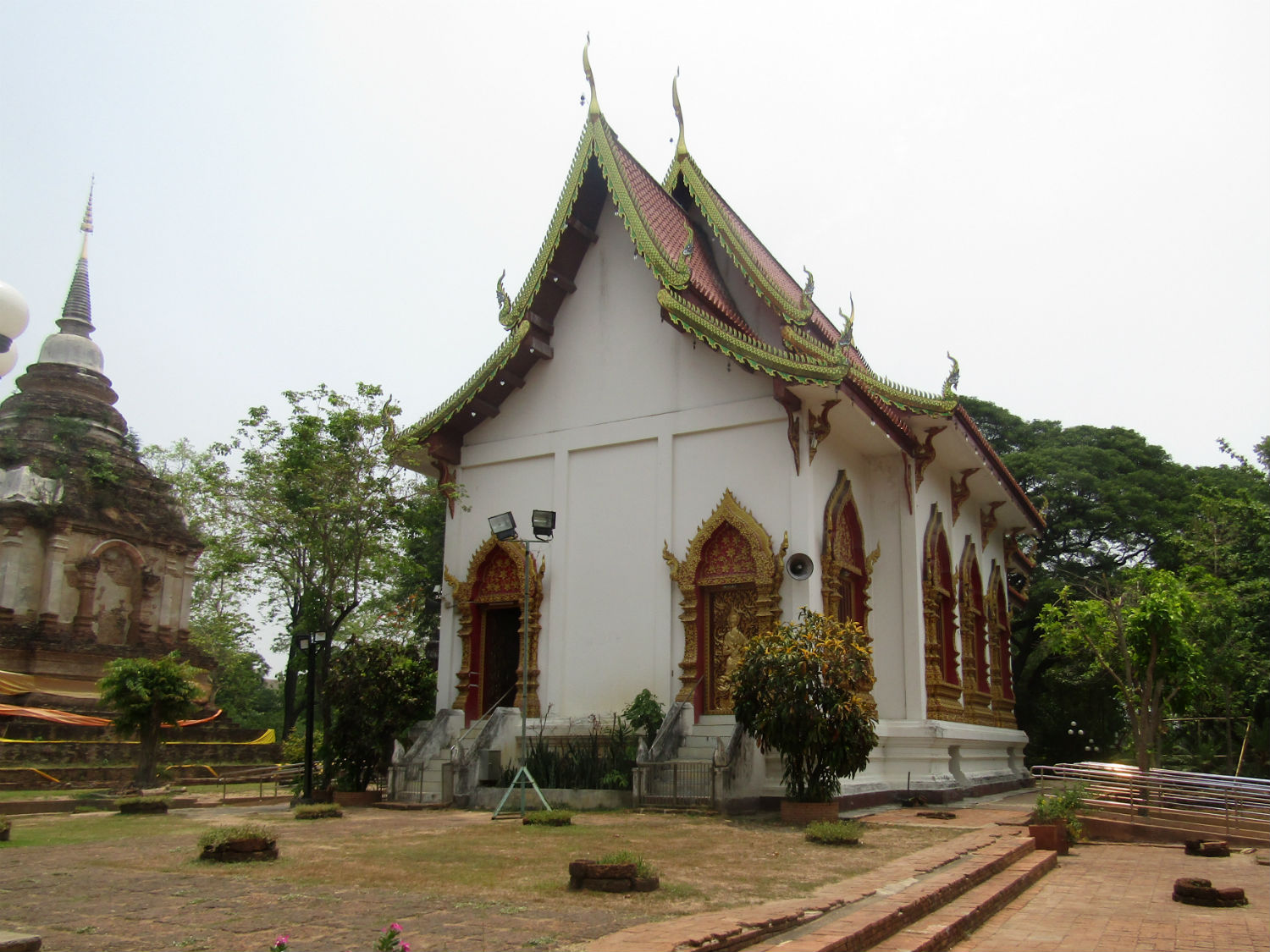
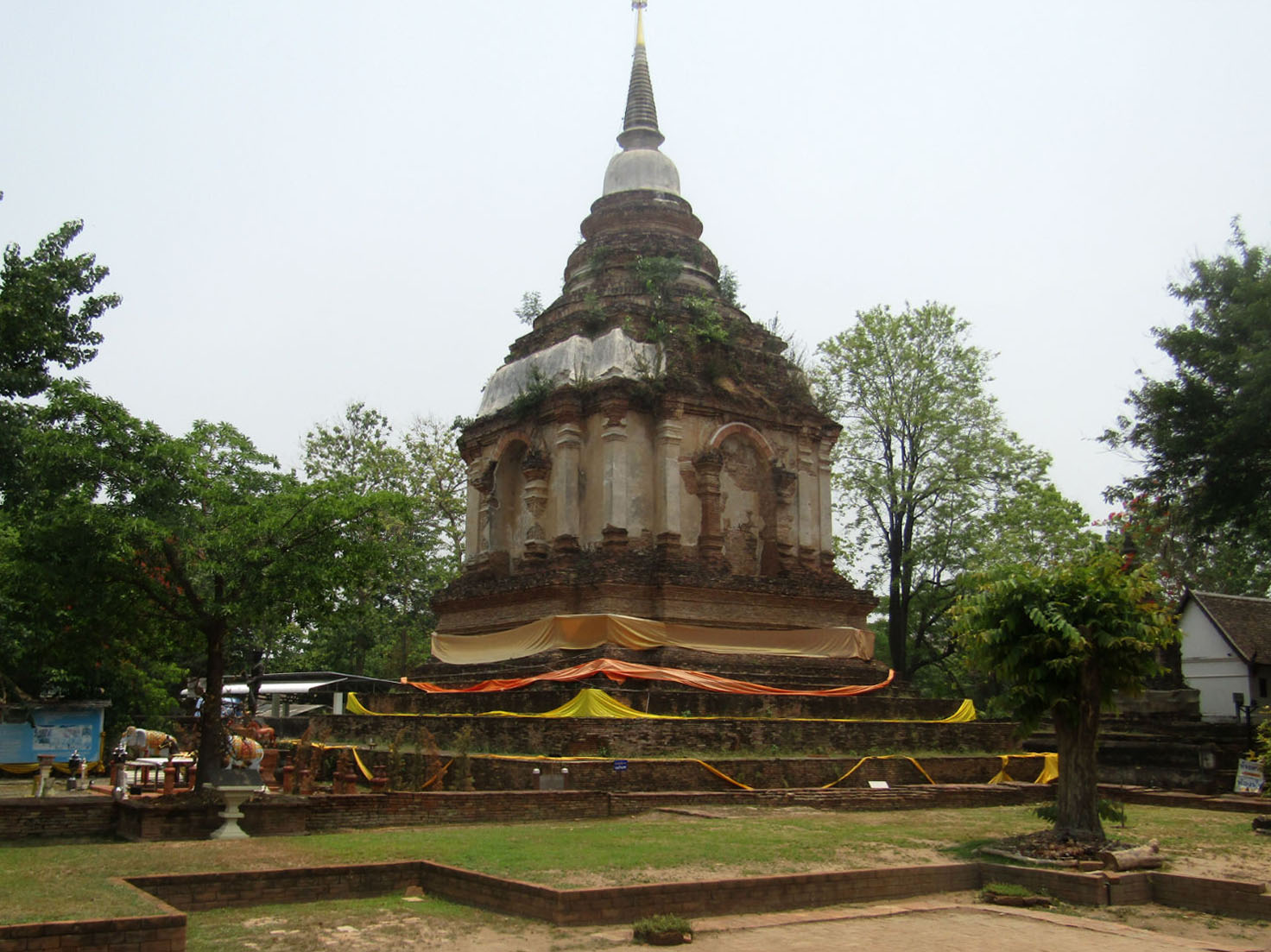
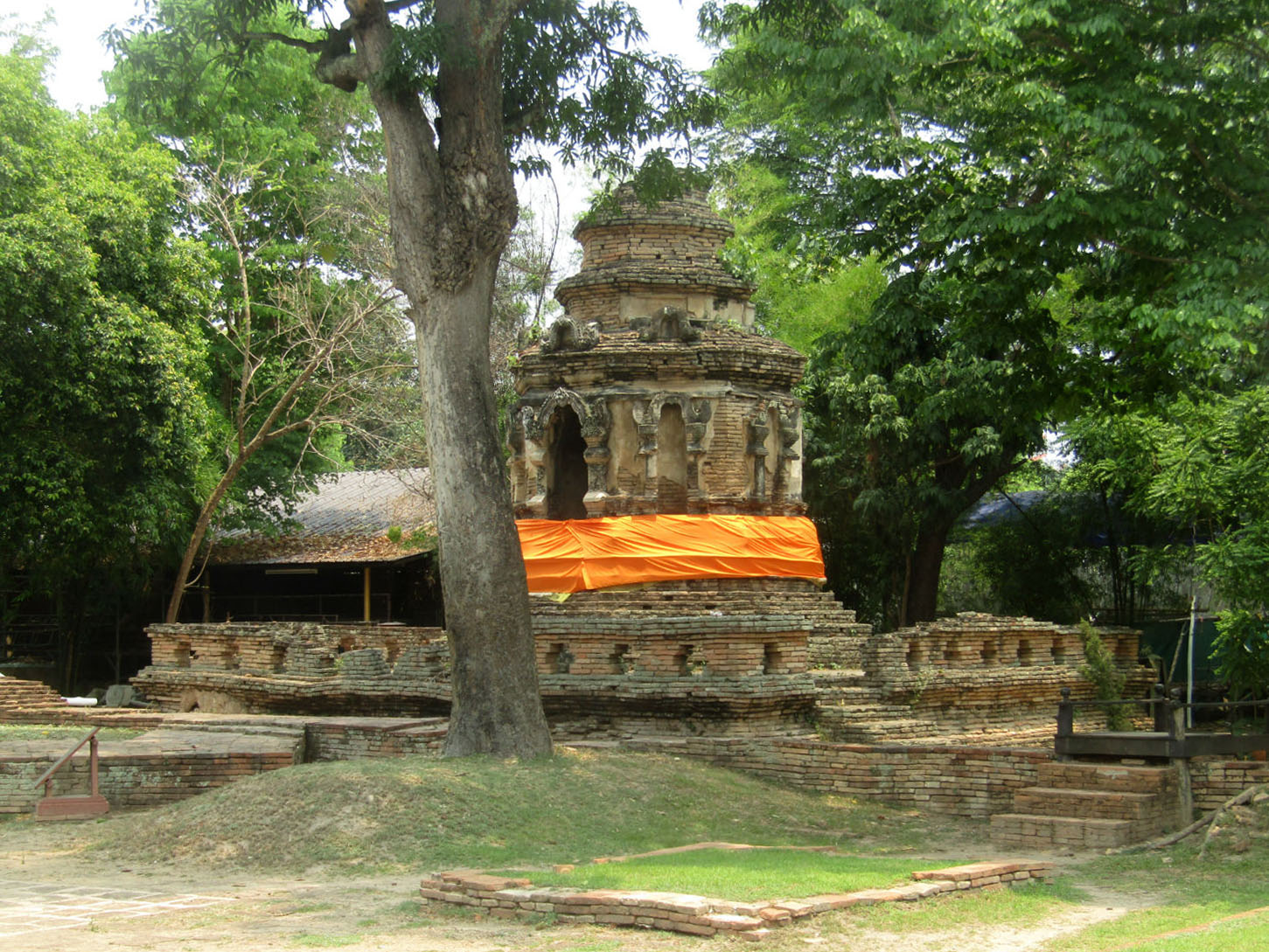
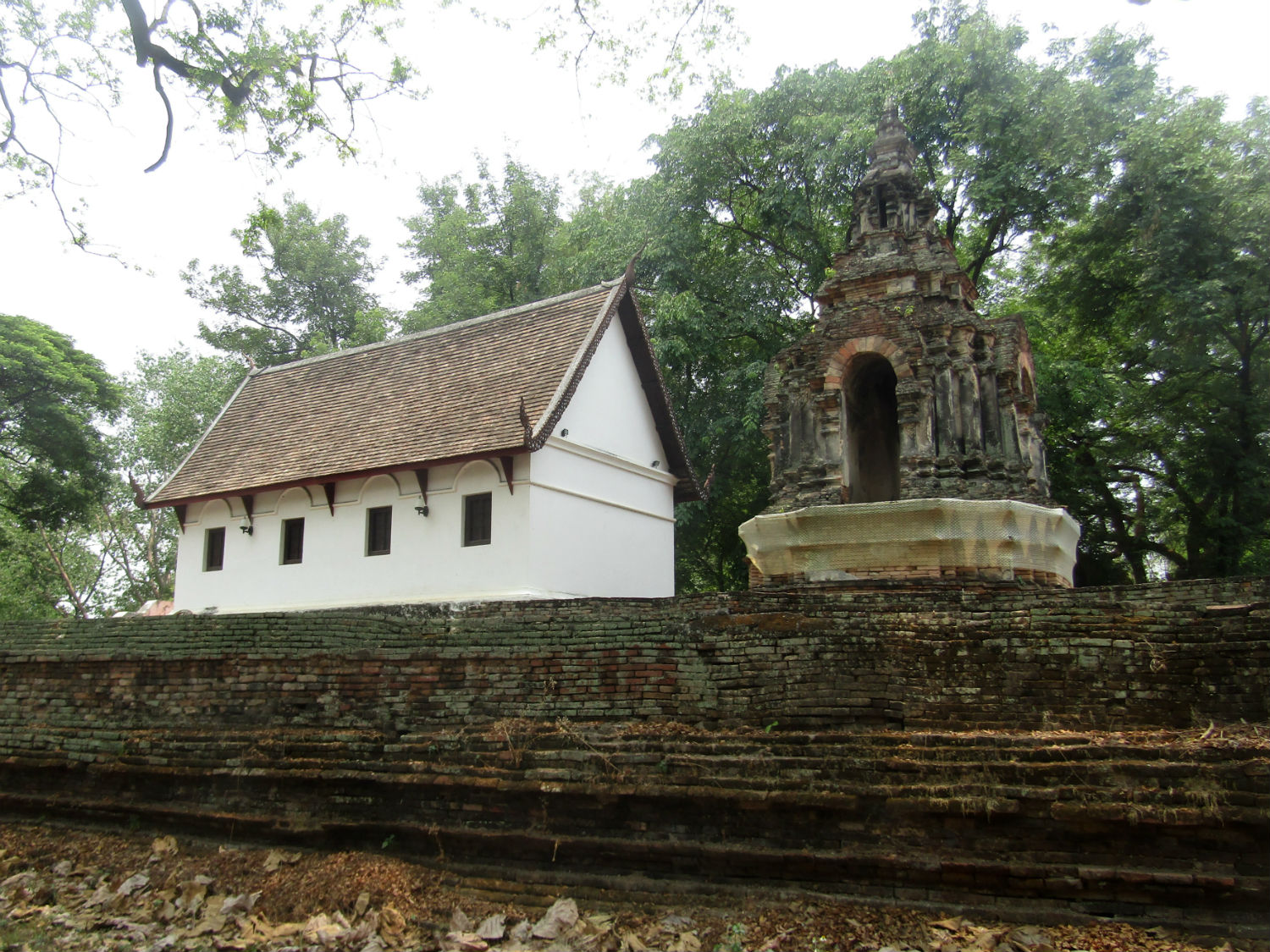
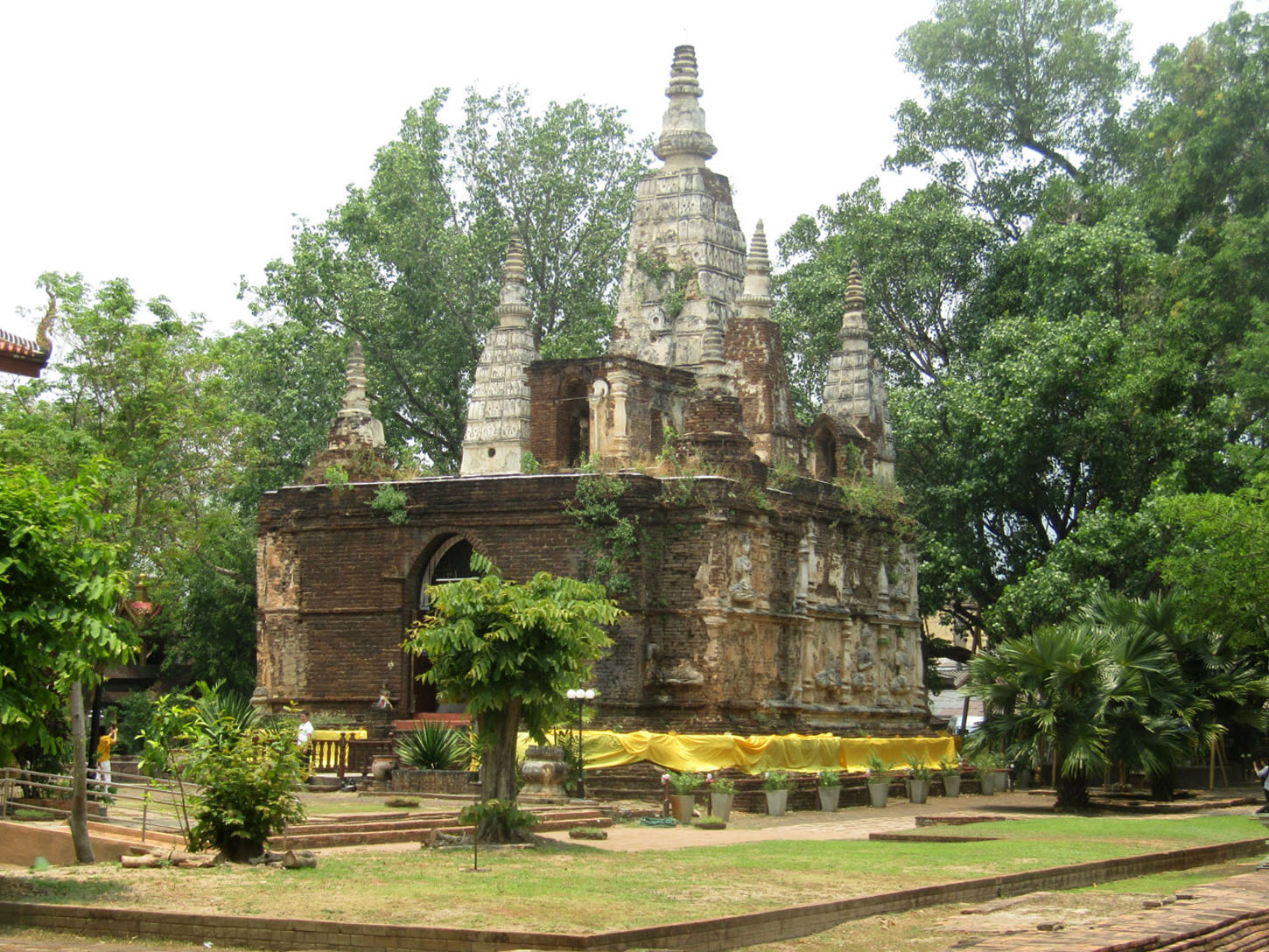
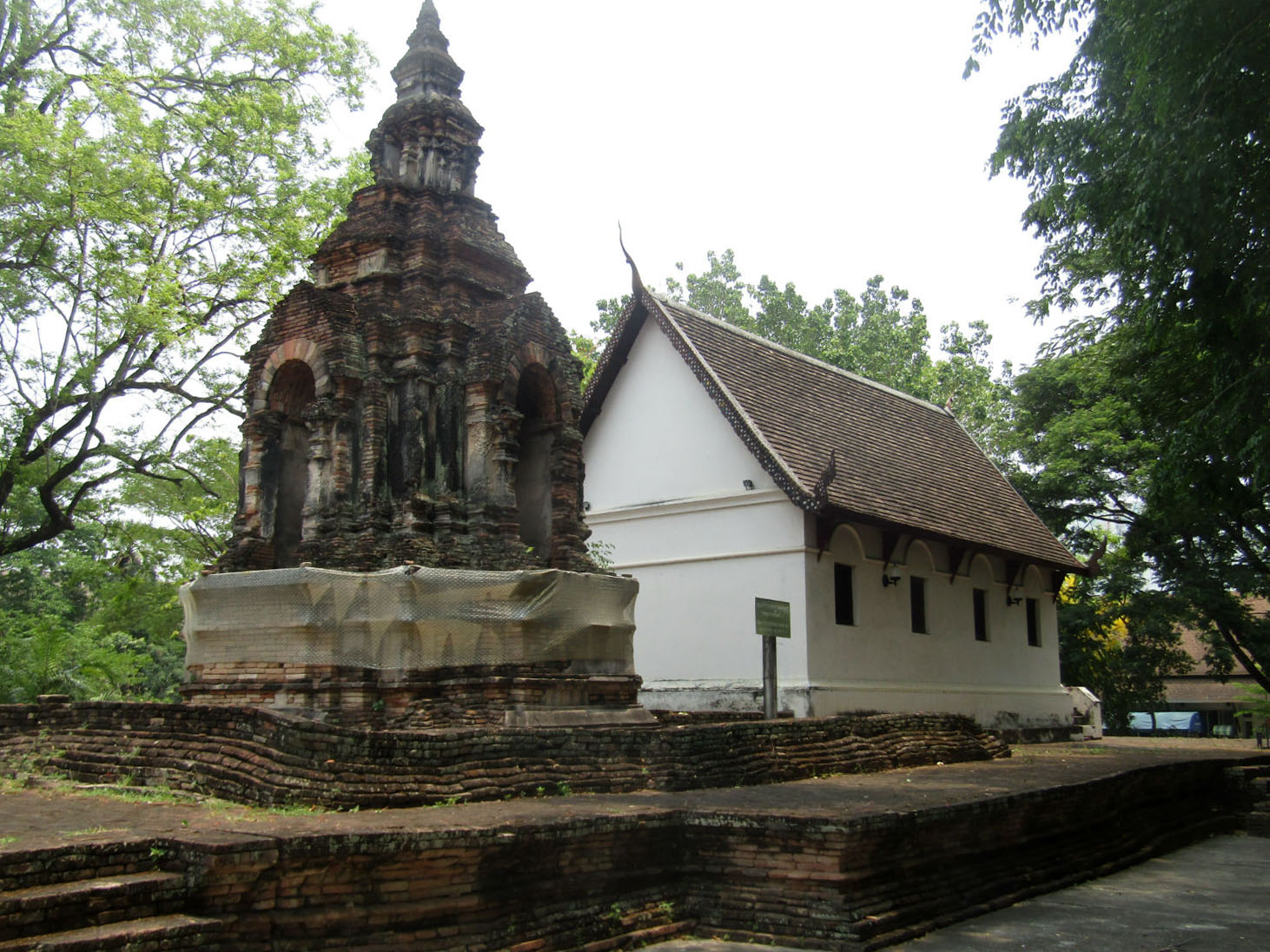
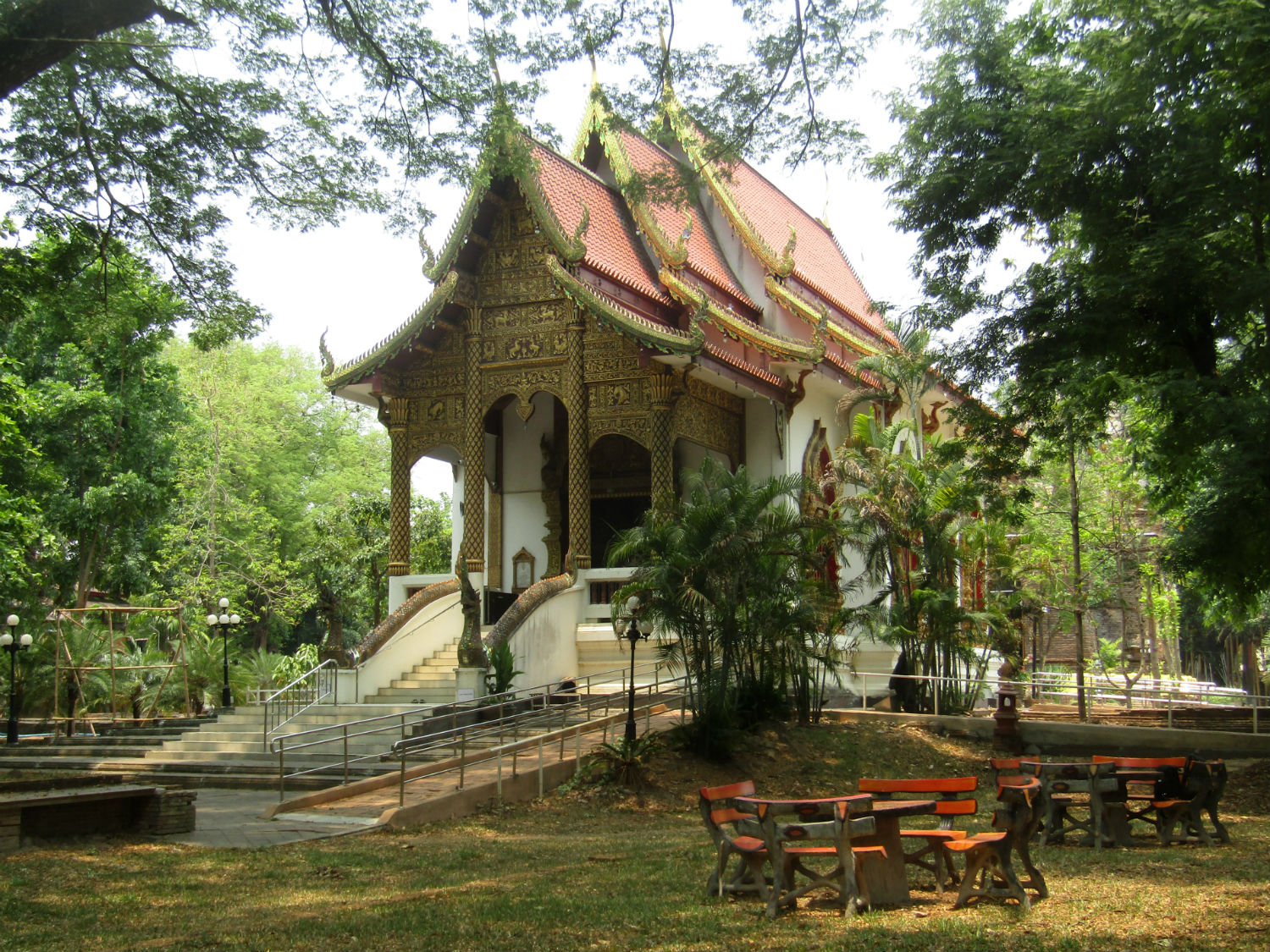
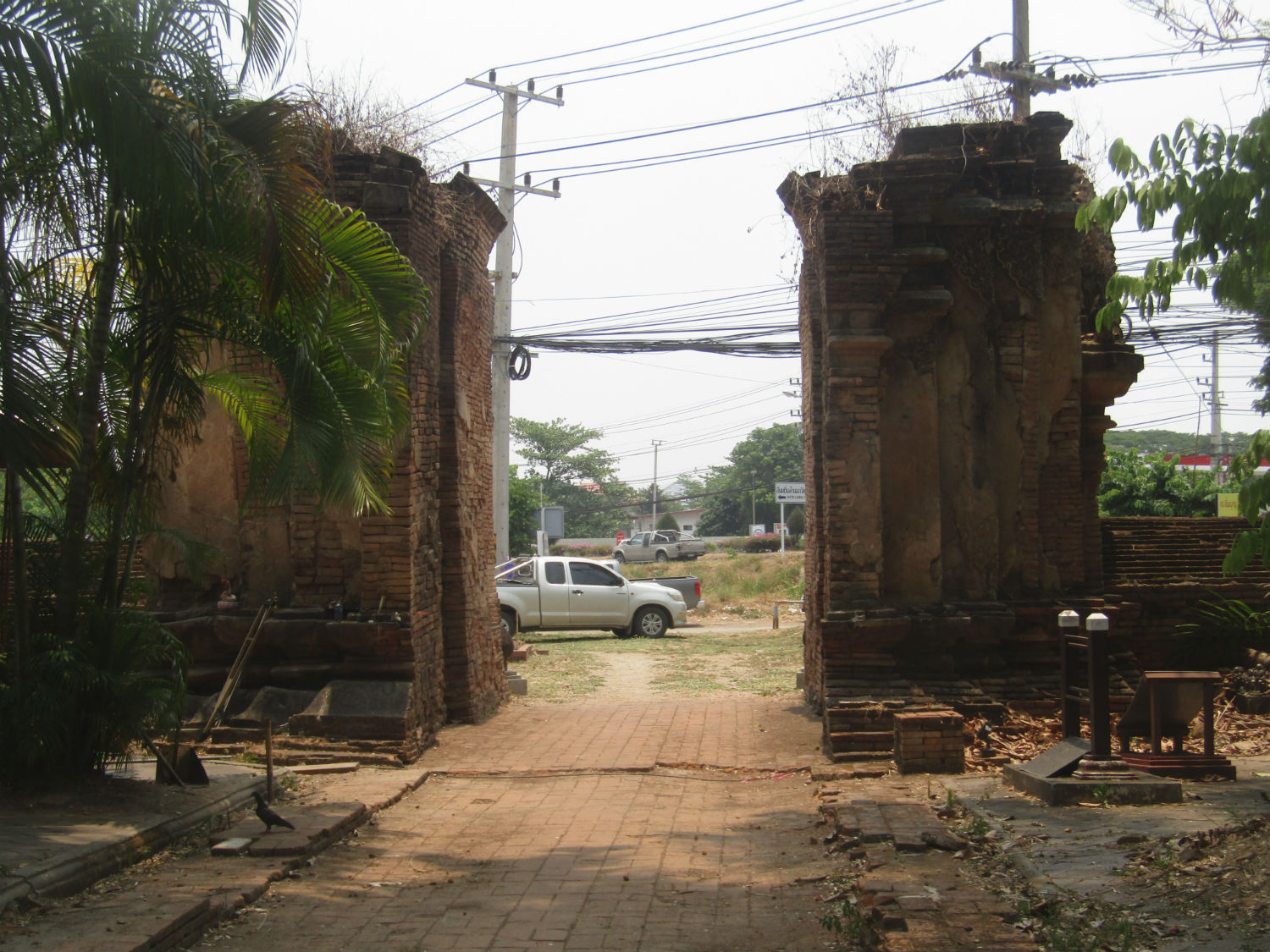
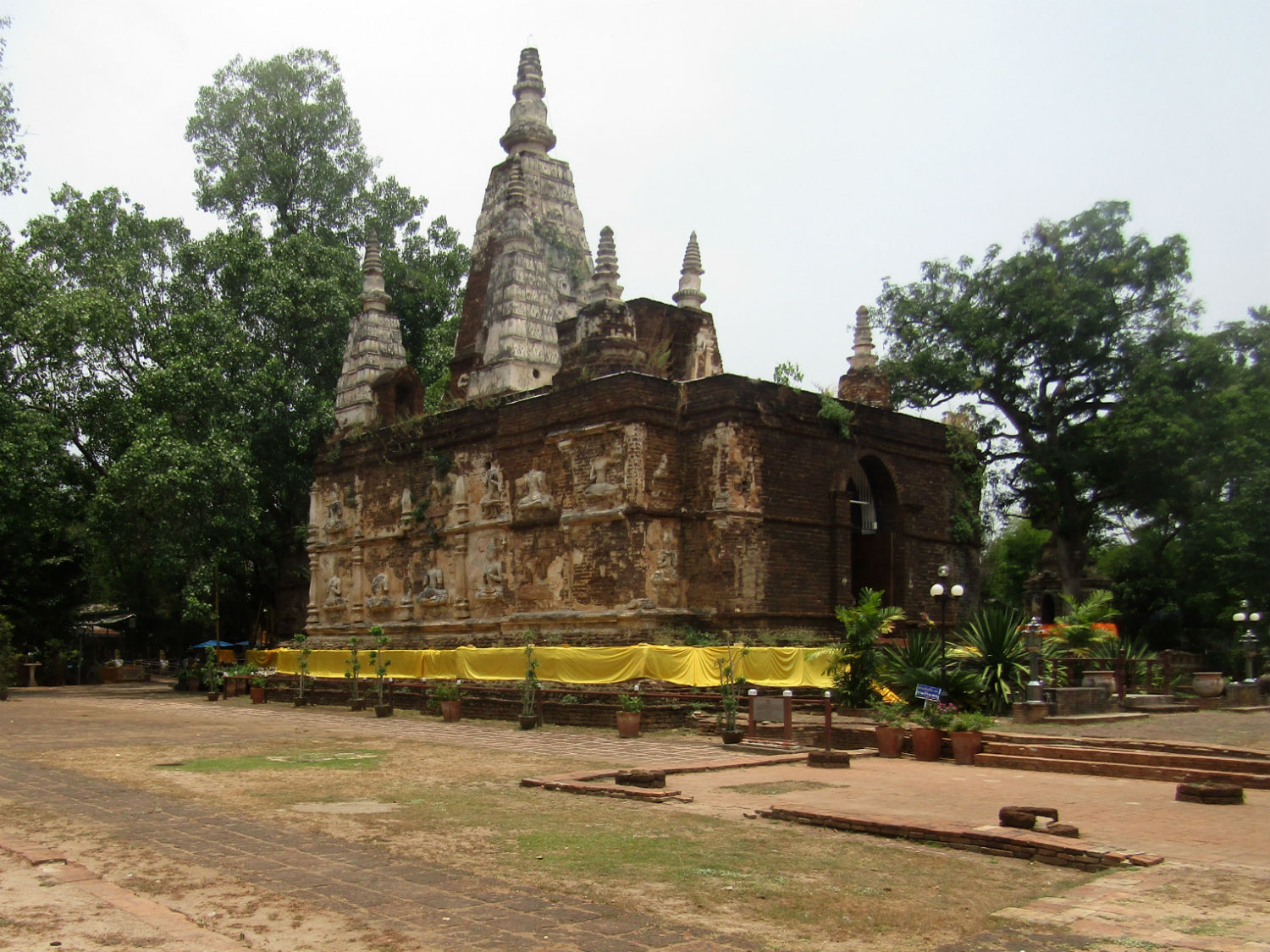
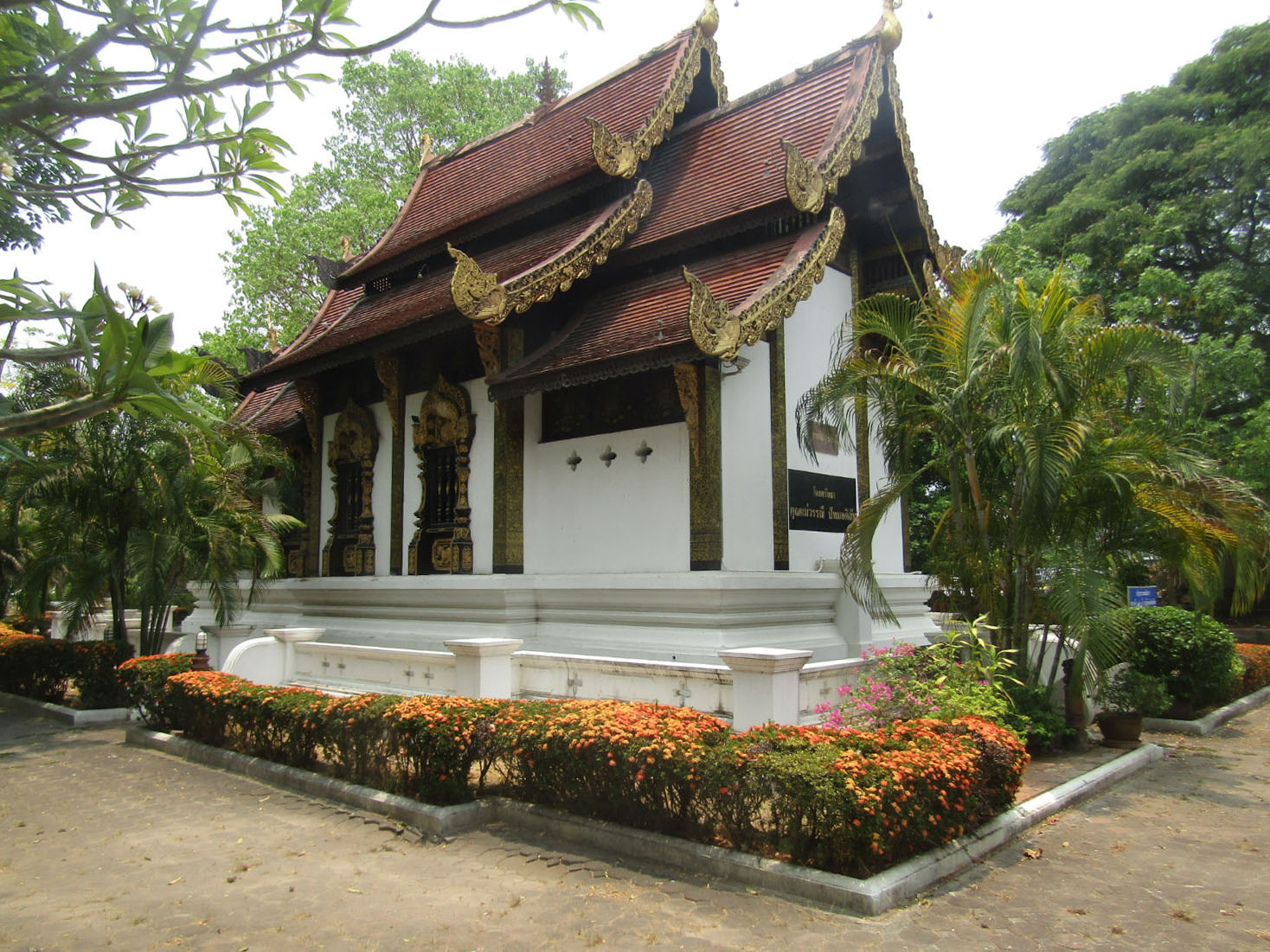
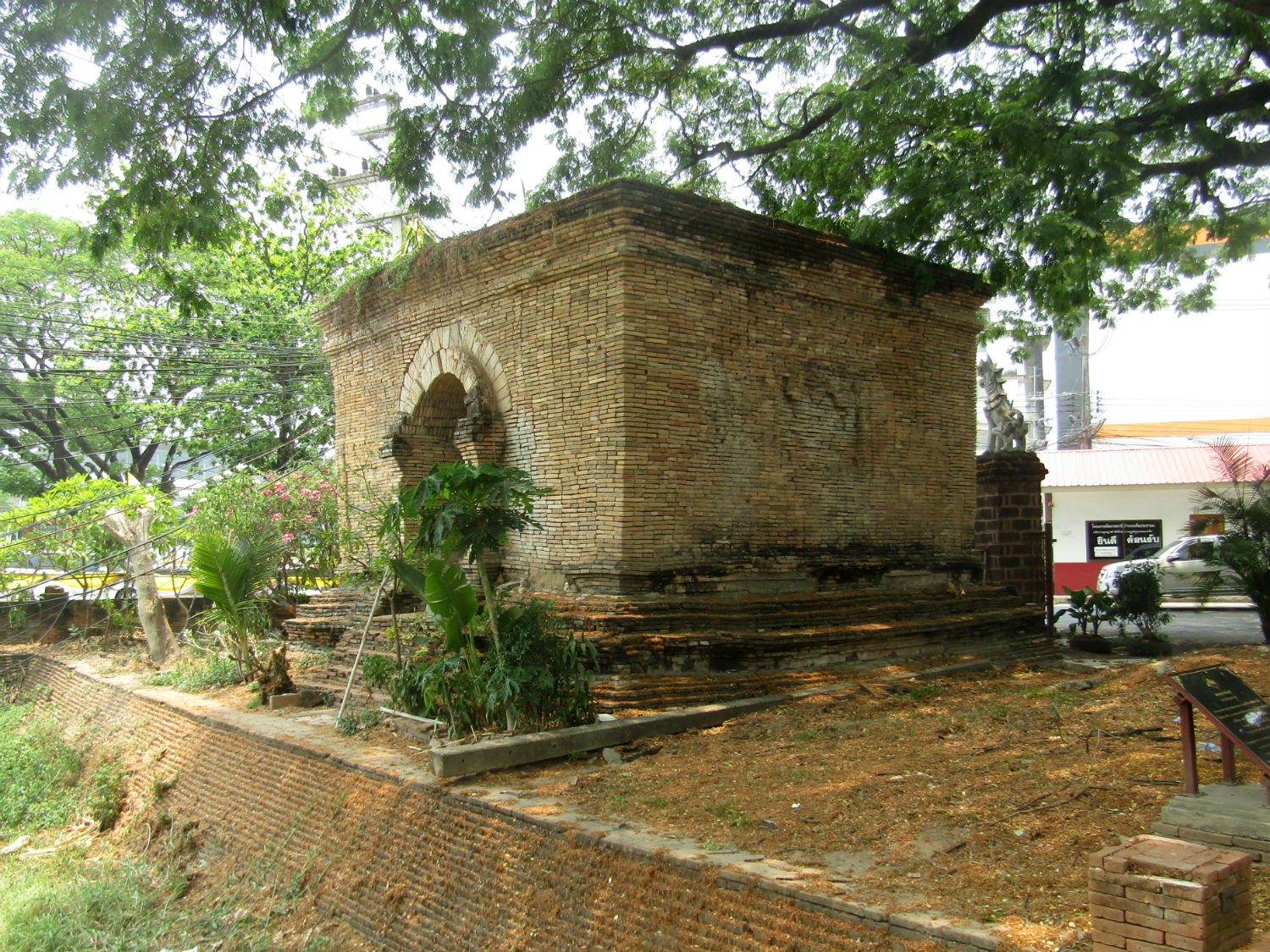
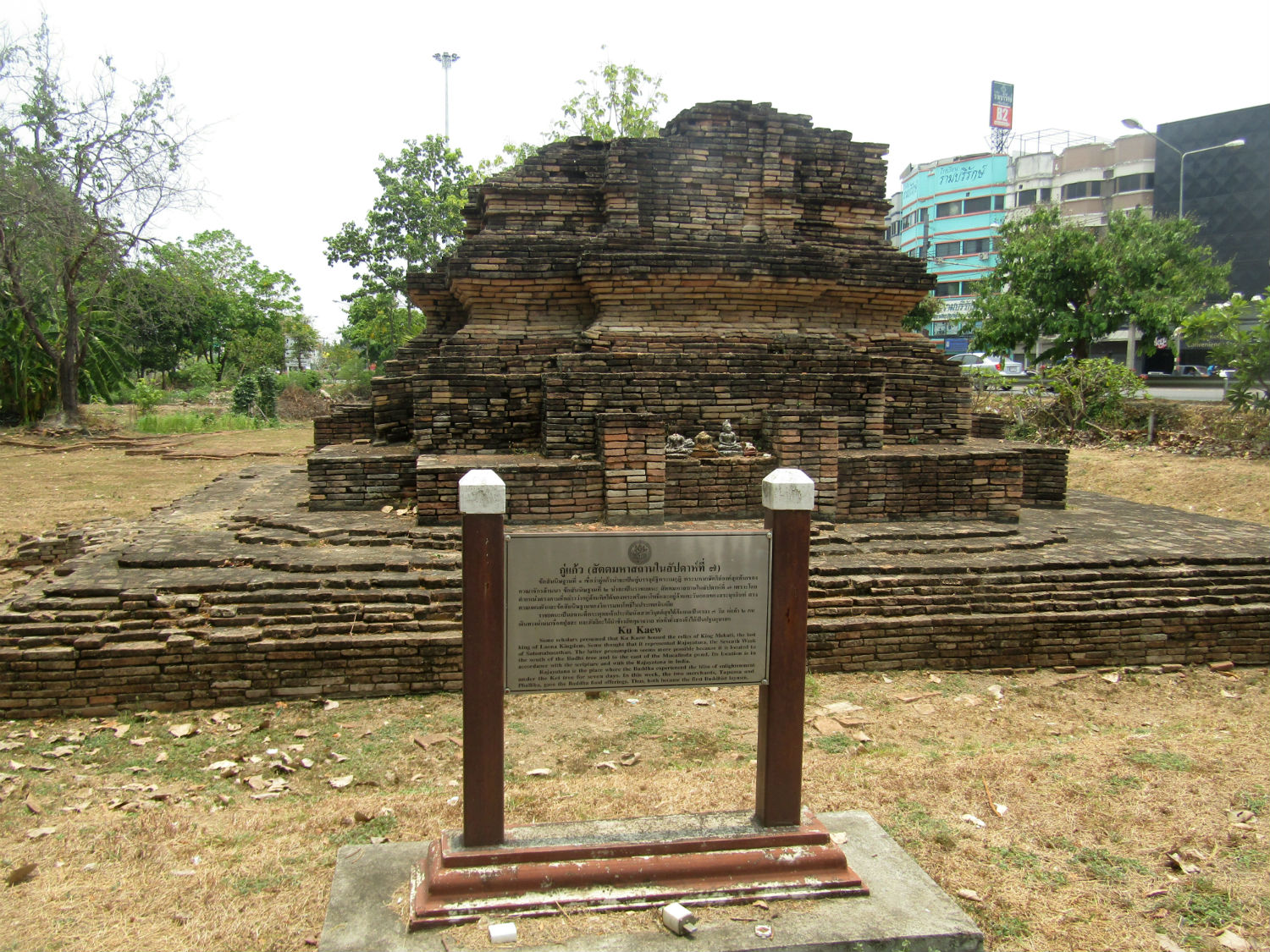 Wat Jed Yot, Chiang Mai
Wat Jed Yot, Chiang Mai
Chiang Mai National Museum……..
Arriving at Chiang Mai National Museum. I’m not surprised to find a modern, purposeful building and also relieved that it has air-conditioning. It makes the 100 baht fee seem quite reasonable. At the reception we’re asked to deposit belongings in lockers. Now lets see what I can learn more about northern Thailand’s history.
Chiang Mai’s National Museum was opened on 6th February 1973 by King Bhumibol Adulyadej (Rama IX) and has undergone modernisation since. It contains a range of exhibitions about Chiang Mai city’s history as well as the history of the Lanna Kingdom. The Museum is also an important educational center attempting to preserve art and culture from the north of Thailand. The Lanna Kingdom used to rule over Northern Thailand and Chiang Mai was its last capital (the first being Chiang Rai). The Lanna kingdom merged to join Siam in 1775 but a common perception belonging to Chiang Mai and its people is that they are Lanna first and Thai second. The Chiang Mai National Museum was built with traditional architecture and displays a beautiful multi-tiered Lanna style roof. Inside there are a range of exhibitions including the history and art of the Lanna Kingdom and how the city of Chiang Mai has changed since the rule of Siam (now called Thailand).
The exhibits are on two floors, each containing 8 display rooms. The ground floor is entirely devoted to the Lanna Kingdom: Rooms 1-8. One of the rooms here is devoted to the recovery of artifacts from Hod district prior to the construction of the Bhumibol Dam. On the second floor rooms numbered 9-16 deal with other periods and aspects related to the region. Curiously these appear in reverse chronological order; the prehistoric period contained in Room 16. Inevitably there is a lot of information here and detail that is impossible to absorb all at once. The progression from prehistory through the stages that led up to the foundation of city states, the powerful Hariphunchai and later Lanna Kingdoms, the Burmese rule and alliance with Siam and the modern era are all dealt with effectively with the interaction between neighbouring cultures fully explained.
Chiang Mai’s National Museum was opened on 6th February 1973 by King Bhumibol Adulyadej (Rama IX) and has undergone modernisation since. It contains a range of exhibitions about Chiang Mai city’s history as well as the history of the Lanna Kingdom. The Museum is also an important educational center attempting to preserve art and culture from the north of Thailand. The Lanna Kingdom used to rule over Northern Thailand and Chiang Mai was its last capital (the first being Chiang Rai). The Lanna kingdom merged to join Siam in 1775 but a common perception belonging to Chiang Mai and its people is that they are Lanna first and Thai second. The Chiang Mai National Museum was built with traditional architecture and displays a beautiful multi-tiered Lanna style roof. Inside there are a range of exhibitions including the history and art of the Lanna Kingdom and how the city of Chiang Mai has changed since the rule of Siam (now called Thailand).
The exhibits are on two floors, each containing 8 display rooms. The ground floor is entirely devoted to the Lanna Kingdom: Rooms 1-8. One of the rooms here is devoted to the recovery of artifacts from Hod district prior to the construction of the Bhumibol Dam. On the second floor rooms numbered 9-16 deal with other periods and aspects related to the region. Curiously these appear in reverse chronological order; the prehistoric period contained in Room 16. Inevitably there is a lot of information here and detail that is impossible to absorb all at once. The progression from prehistory through the stages that led up to the foundation of city states, the powerful Hariphunchai and later Lanna Kingdoms, the Burmese rule and alliance with Siam and the modern era are all dealt with effectively with the interaction between neighbouring cultures fully explained.
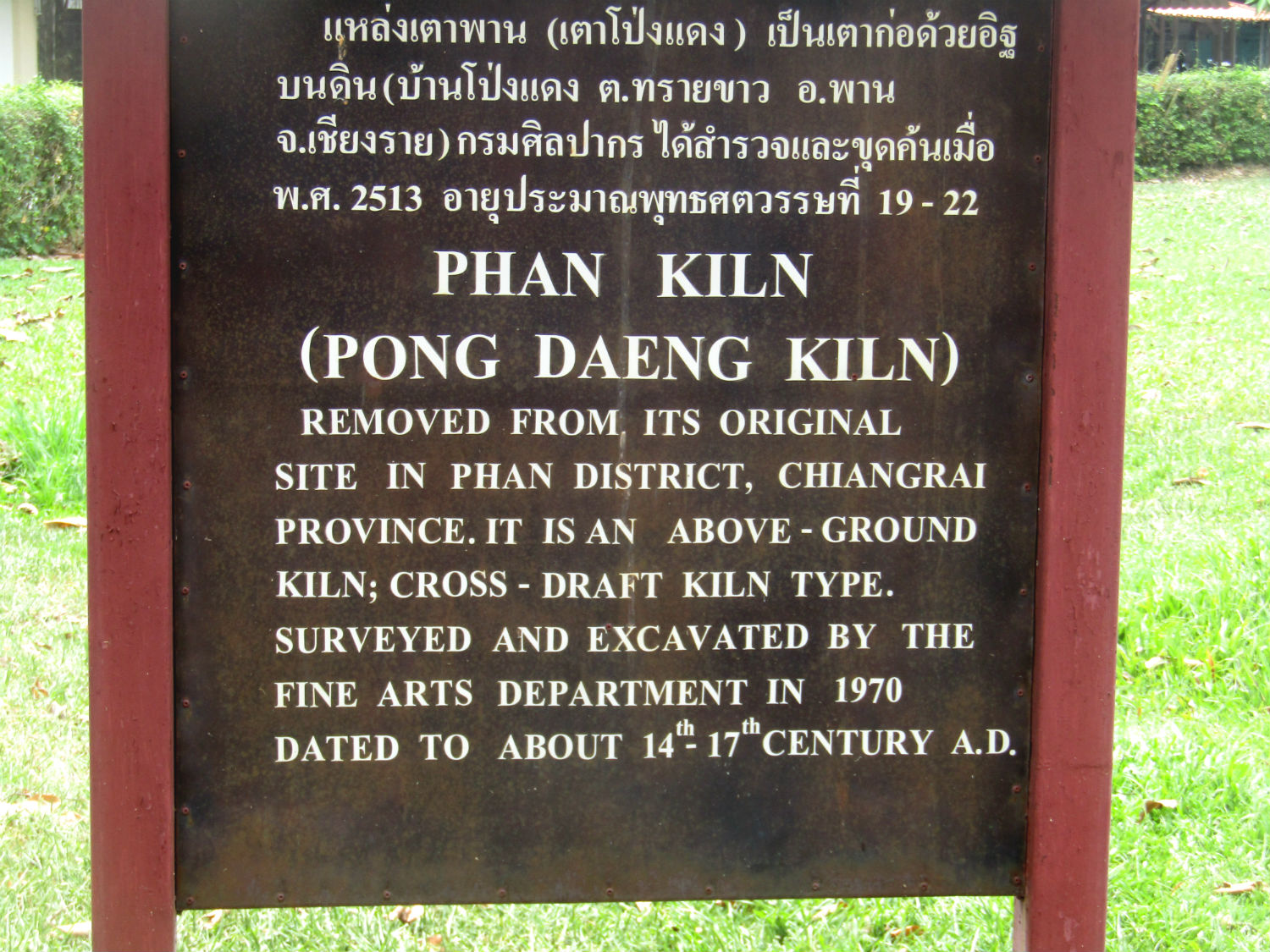
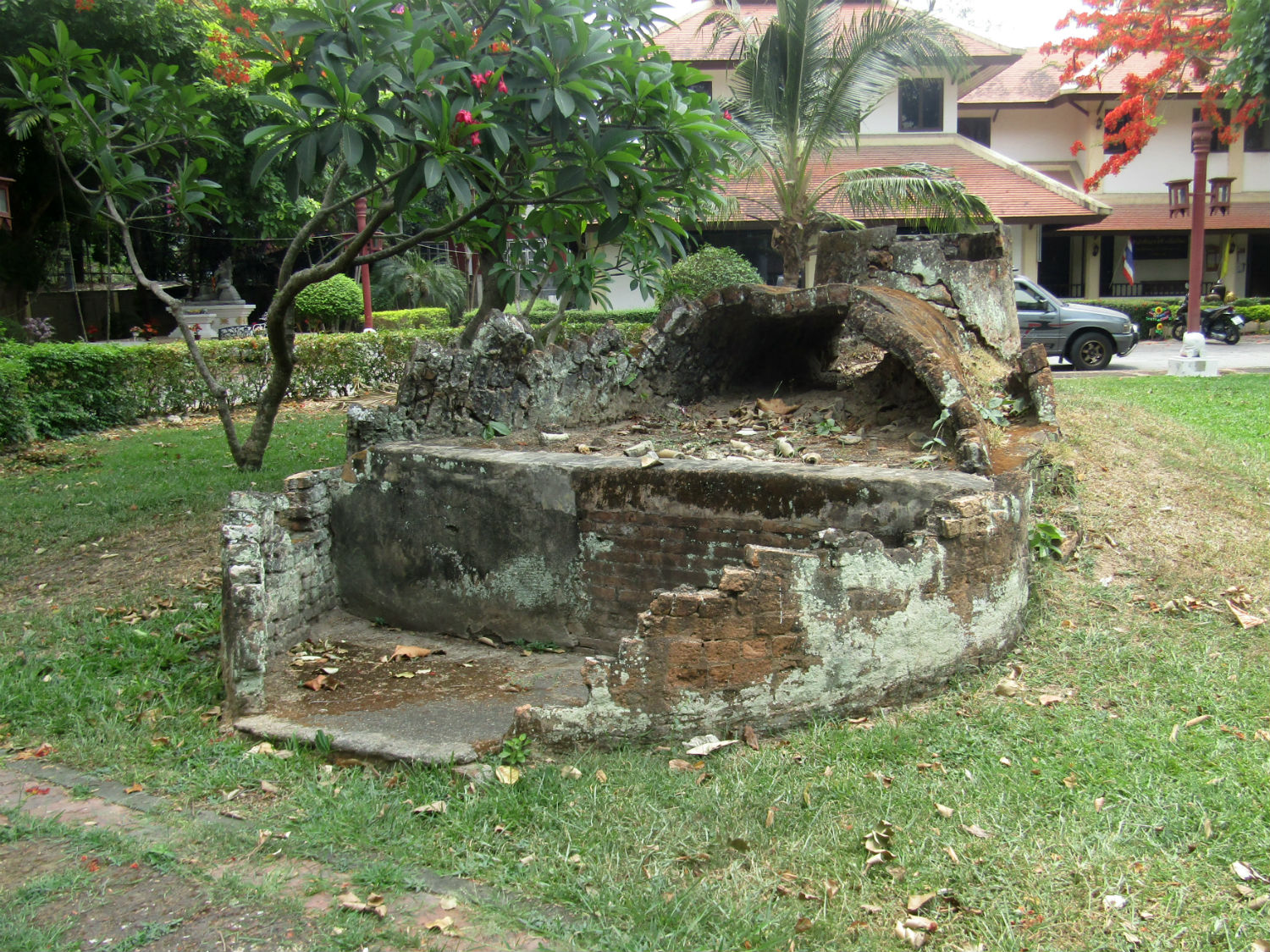
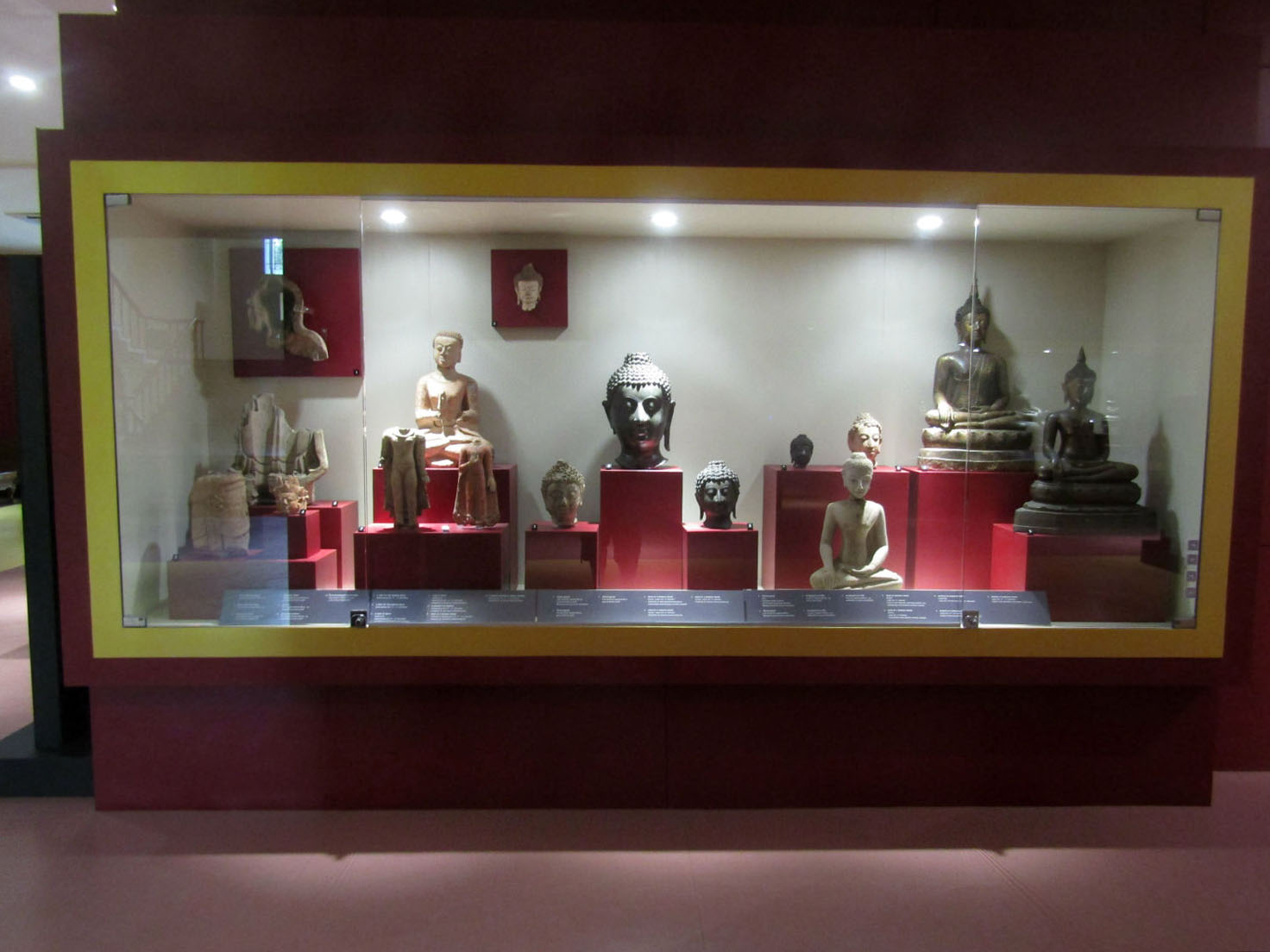
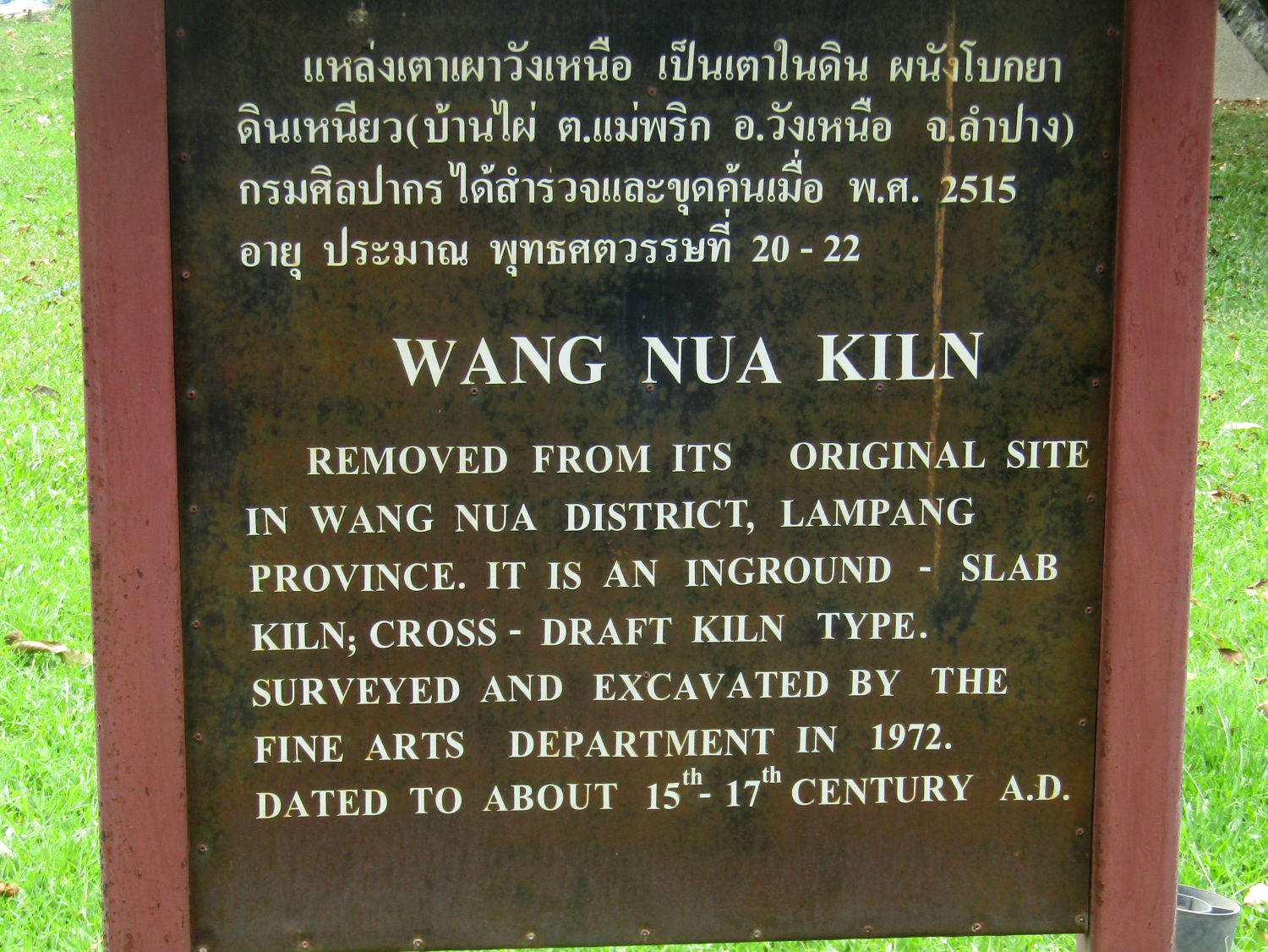
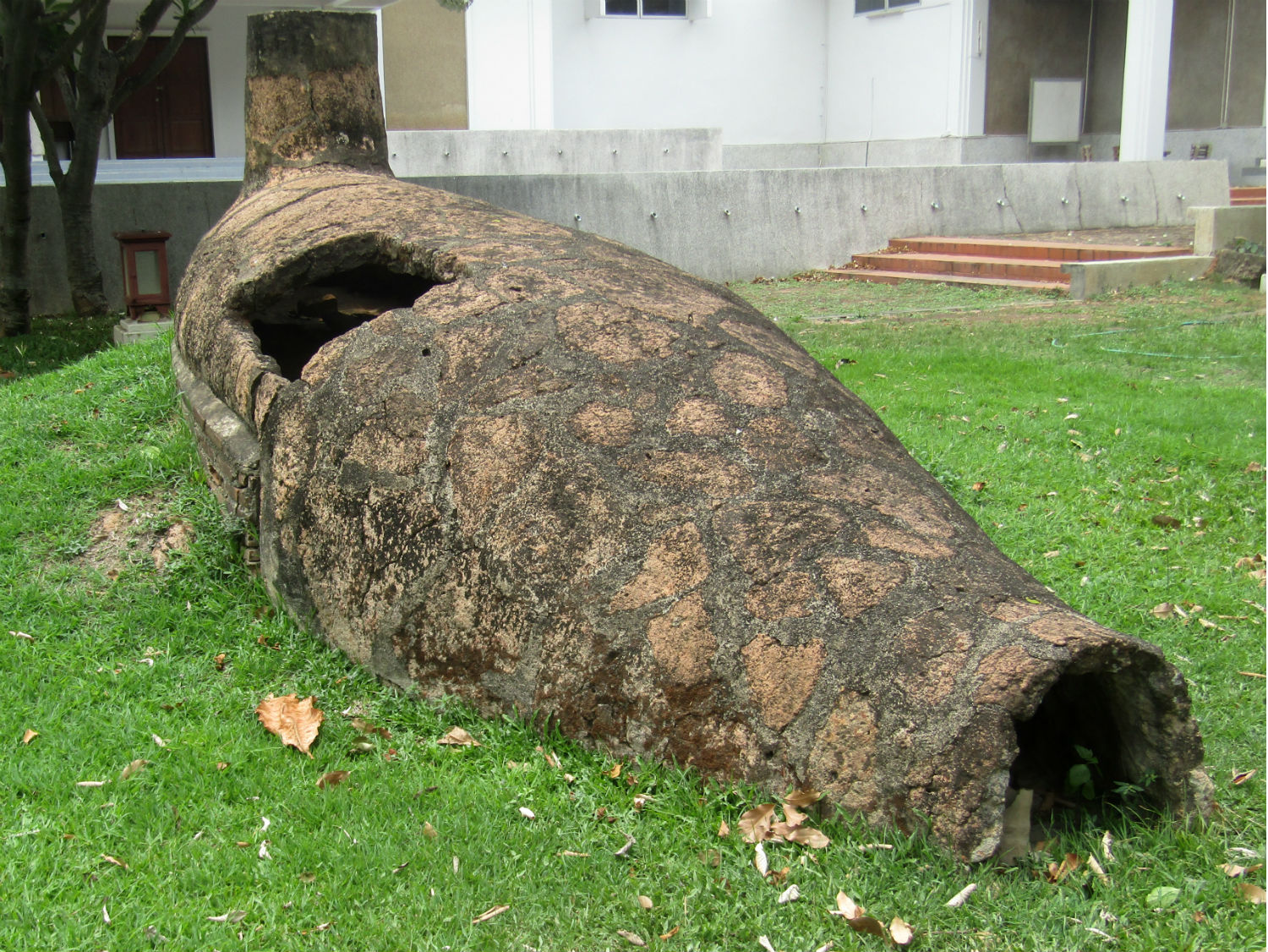
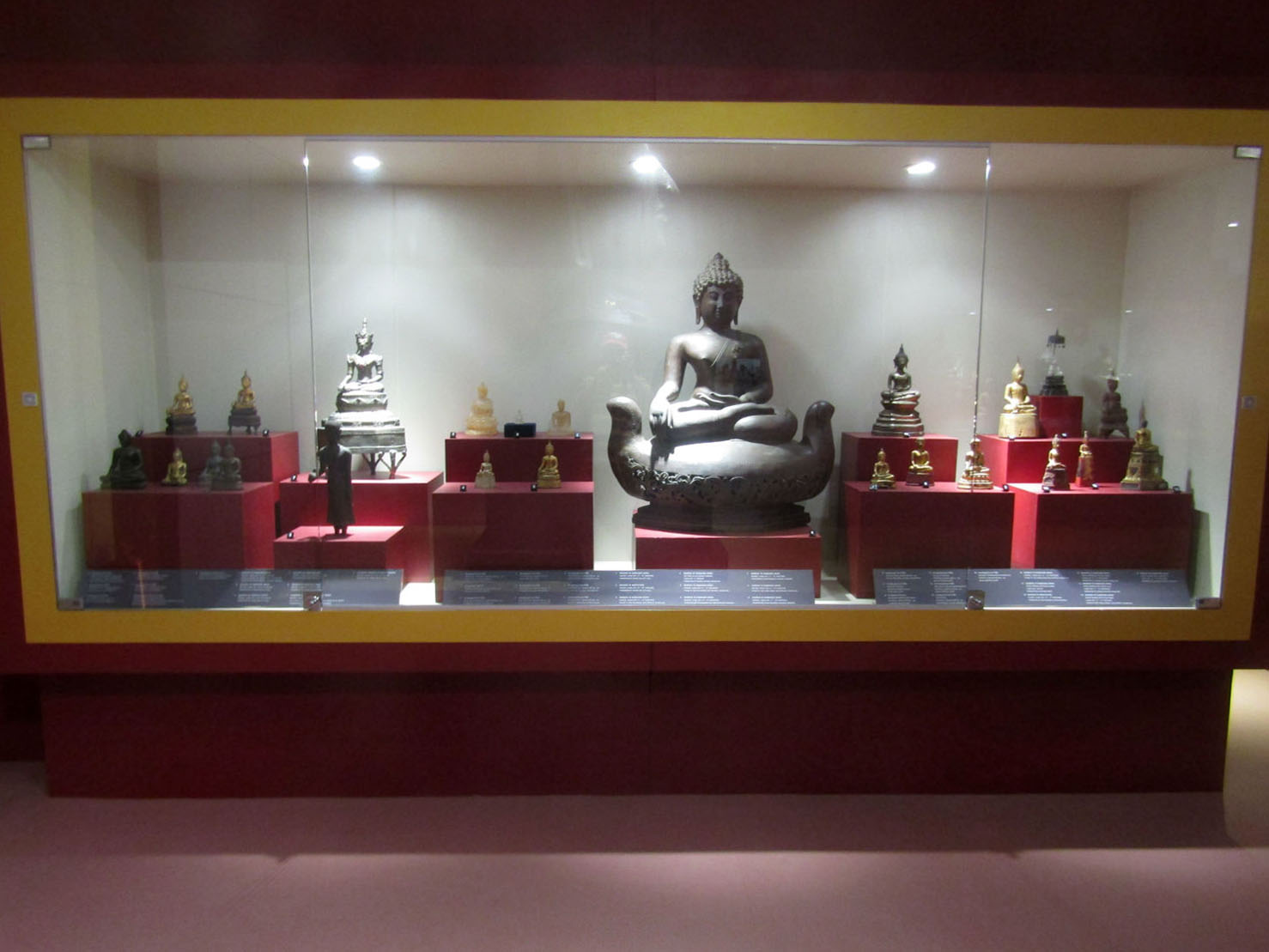
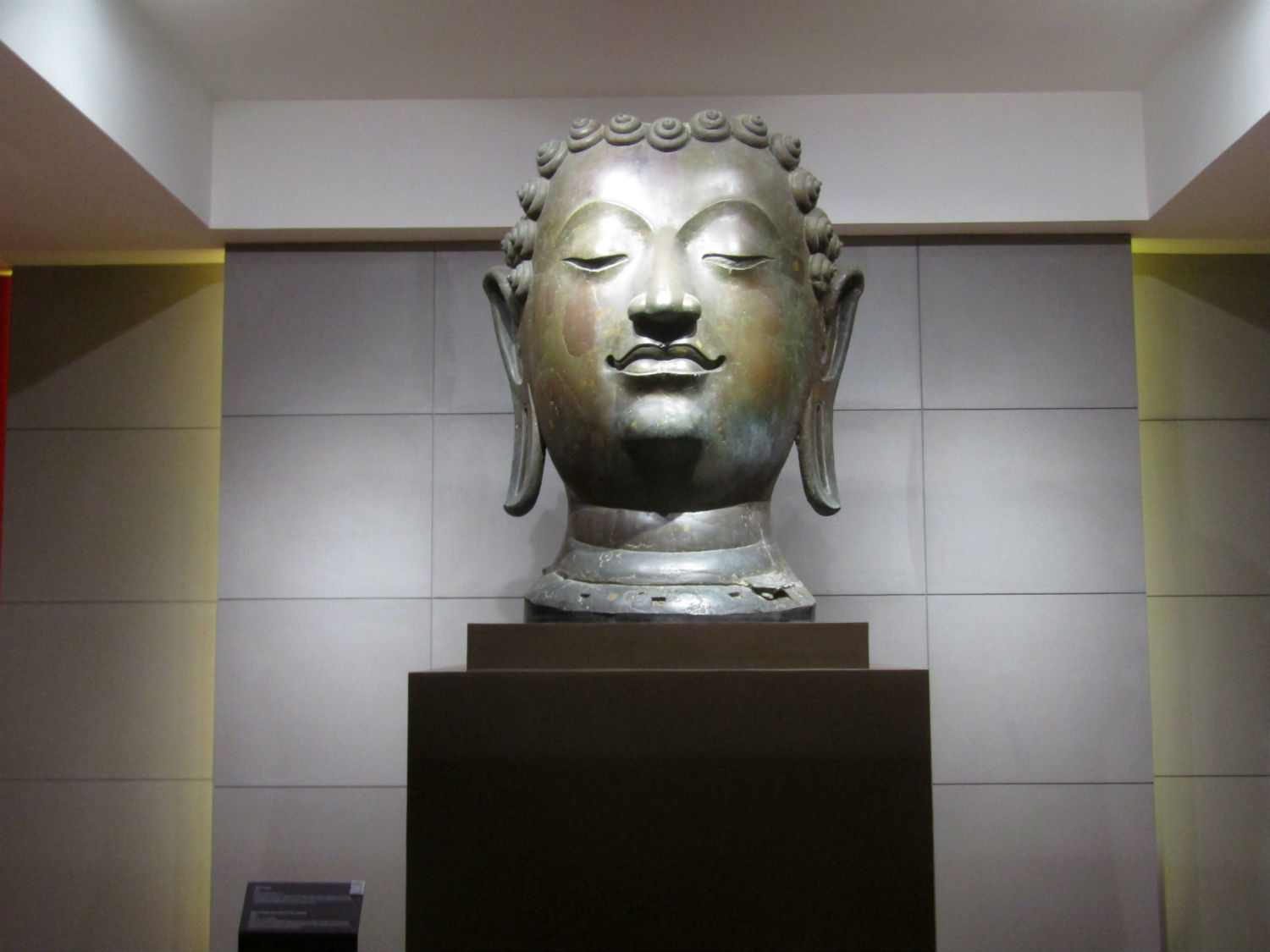

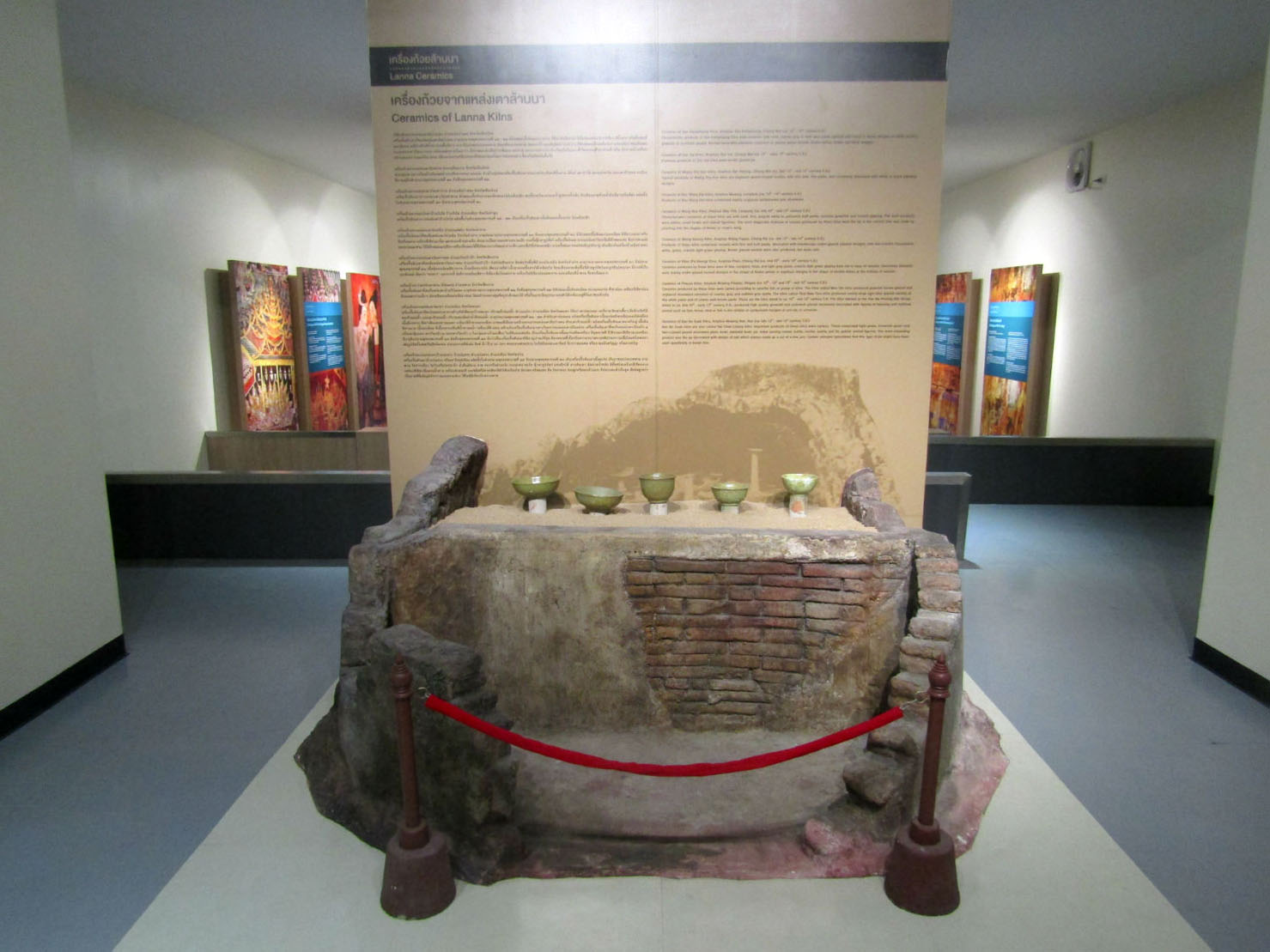
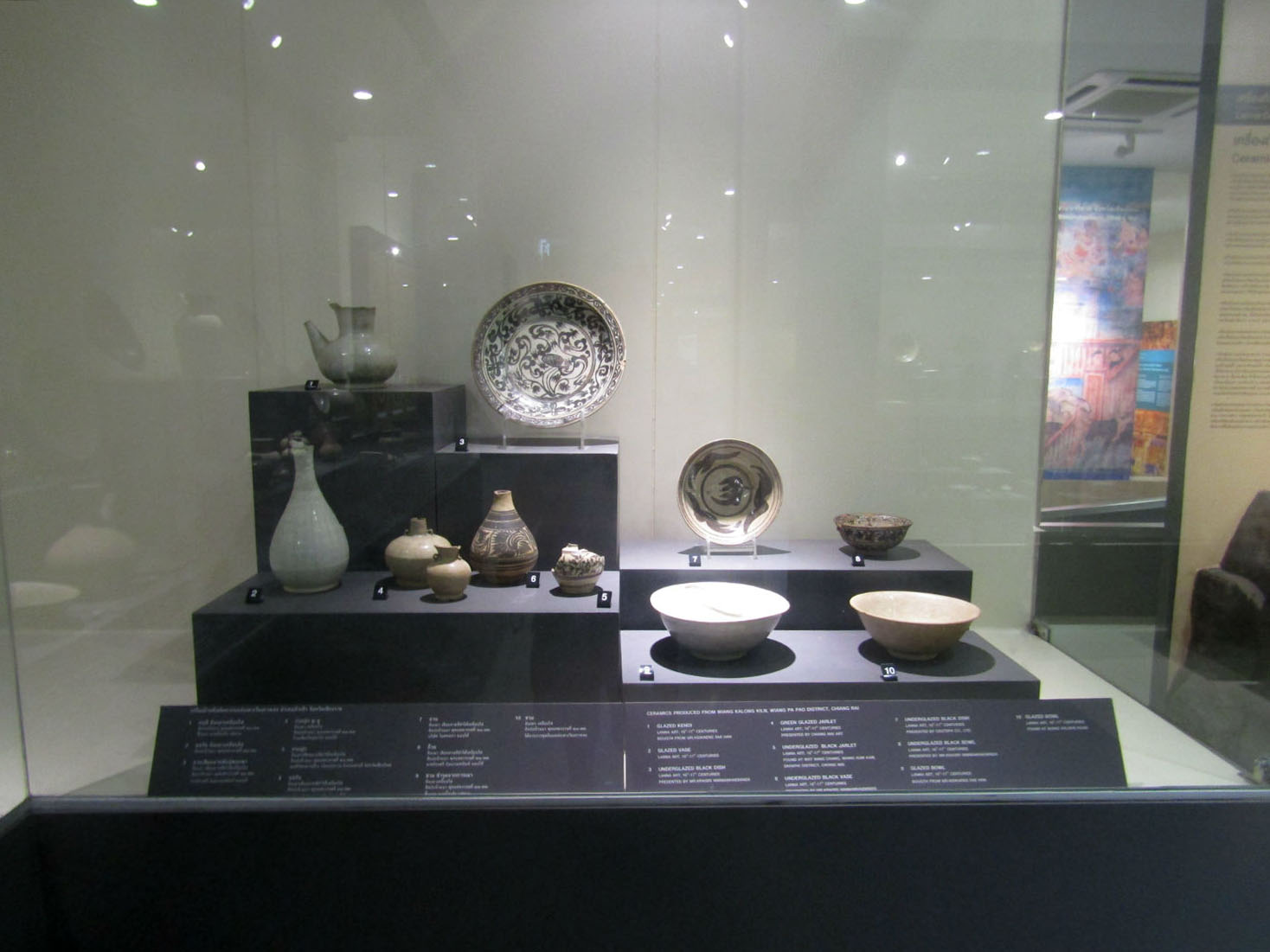
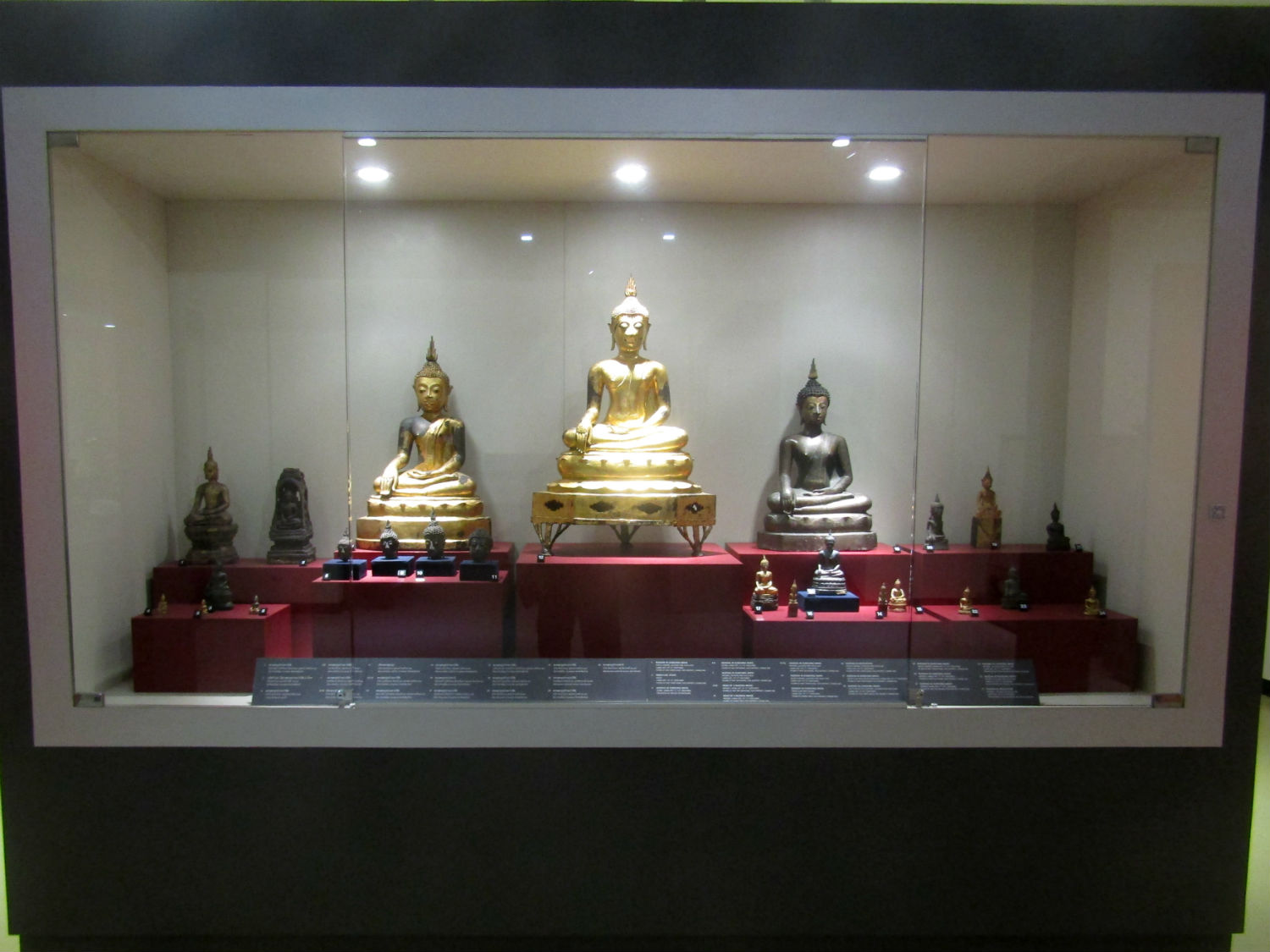
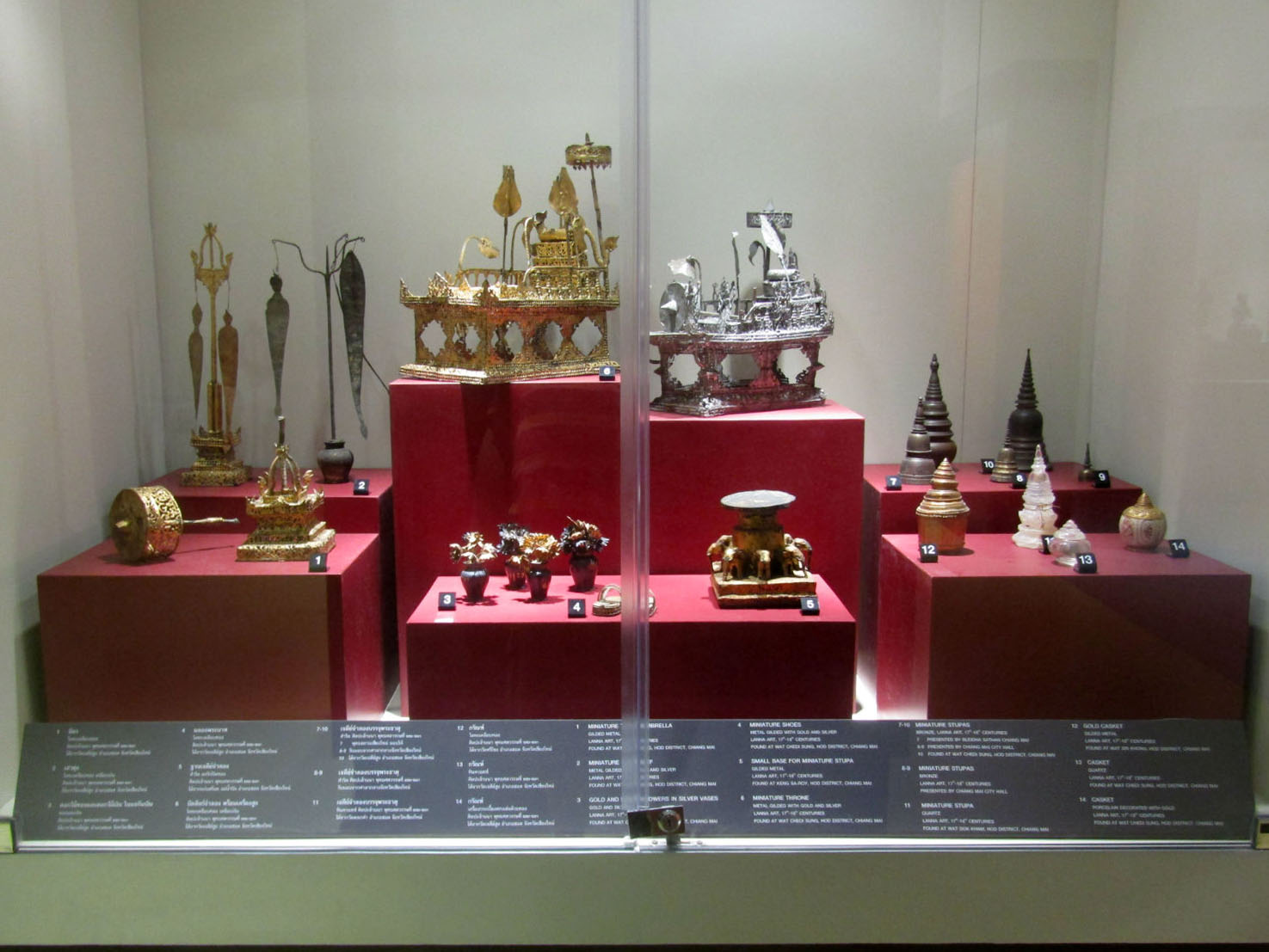
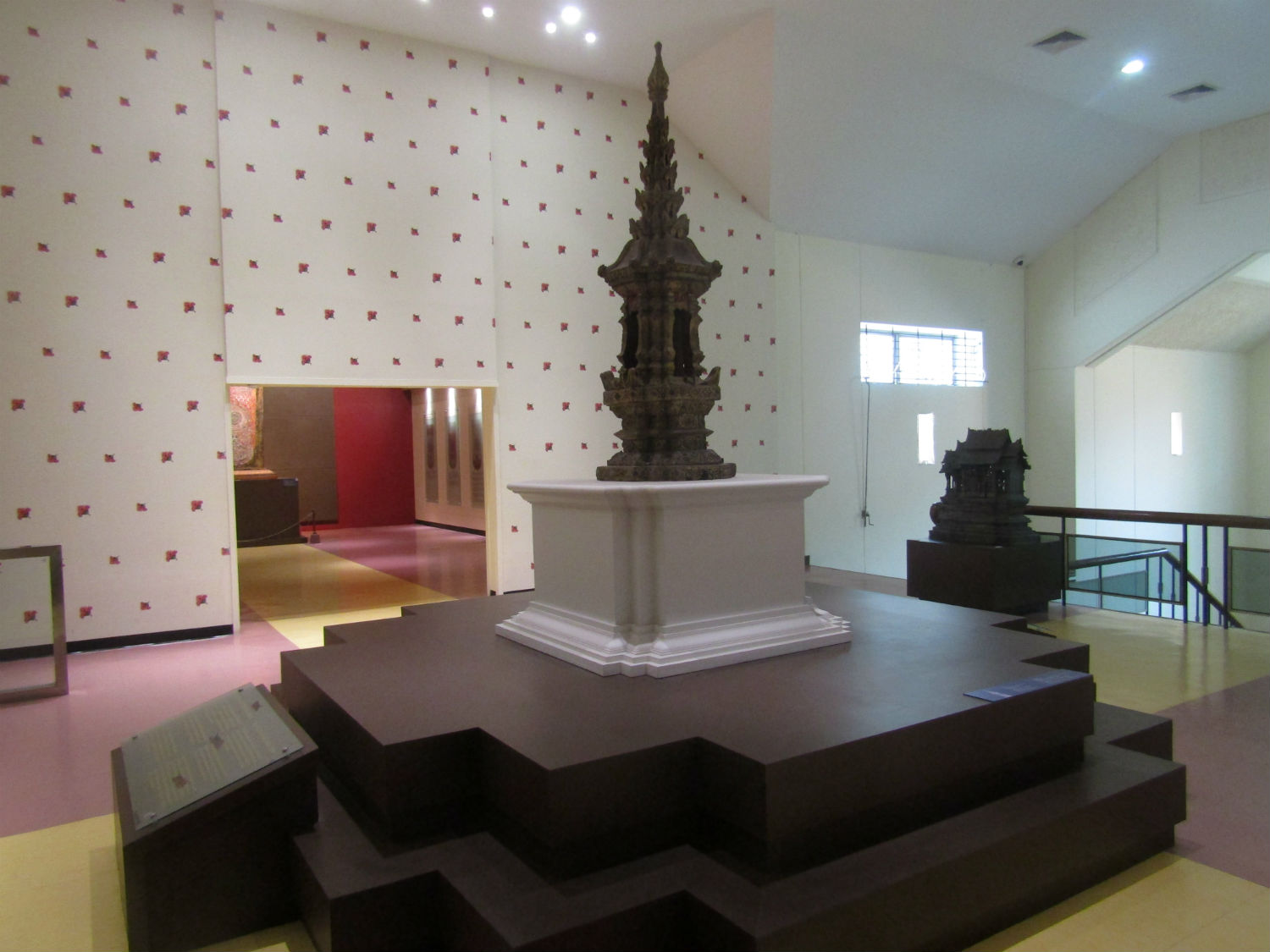
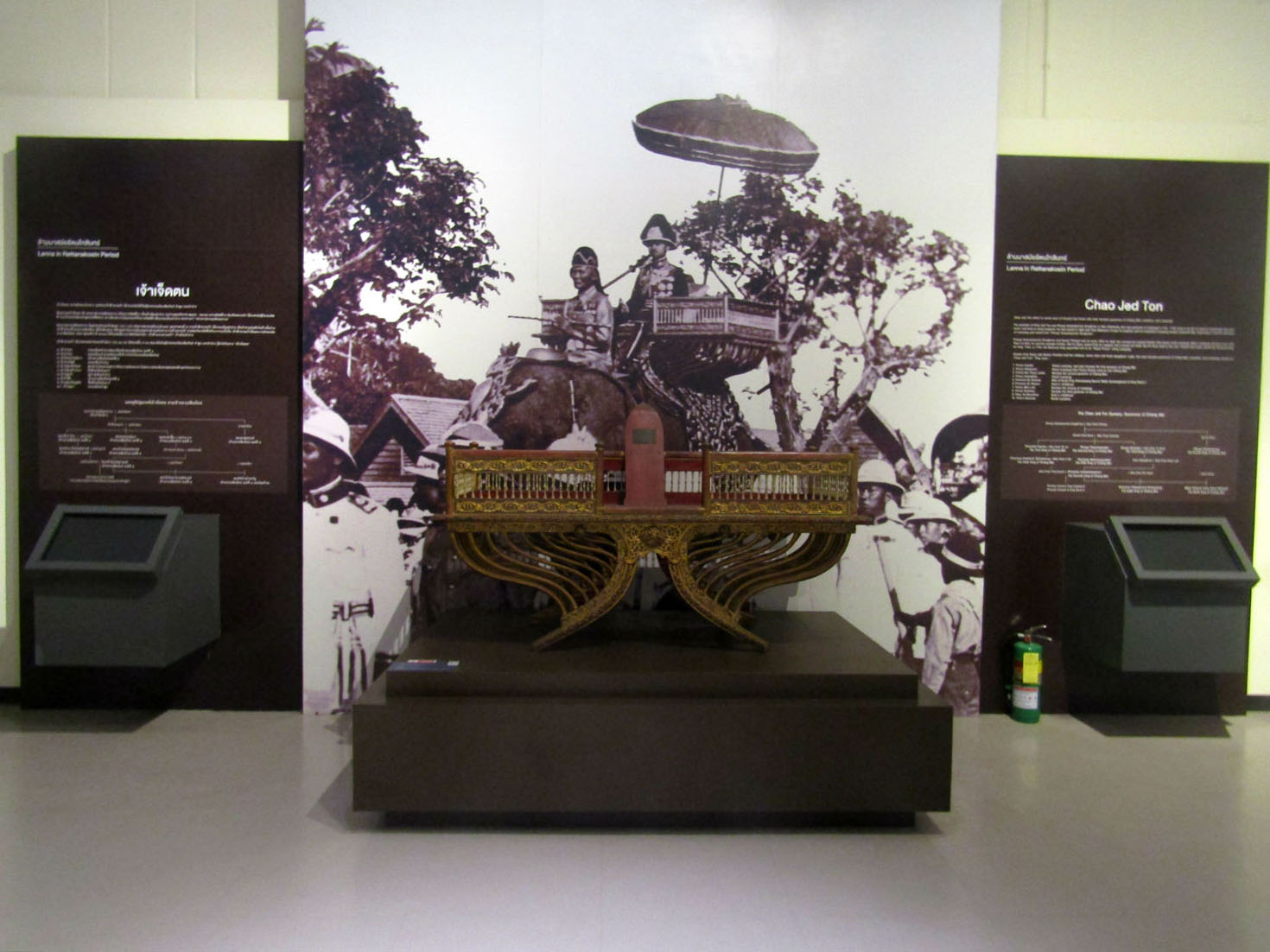
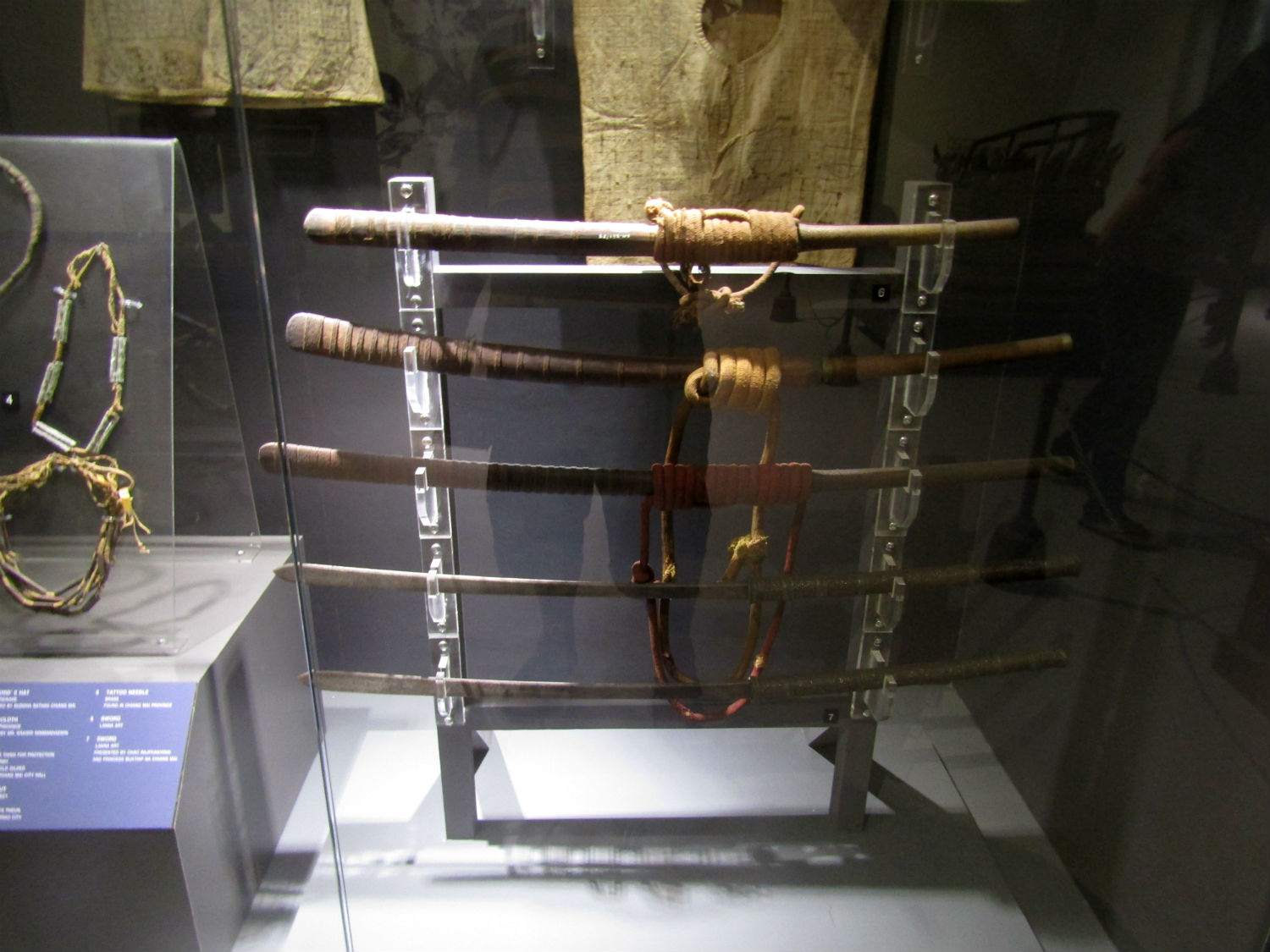
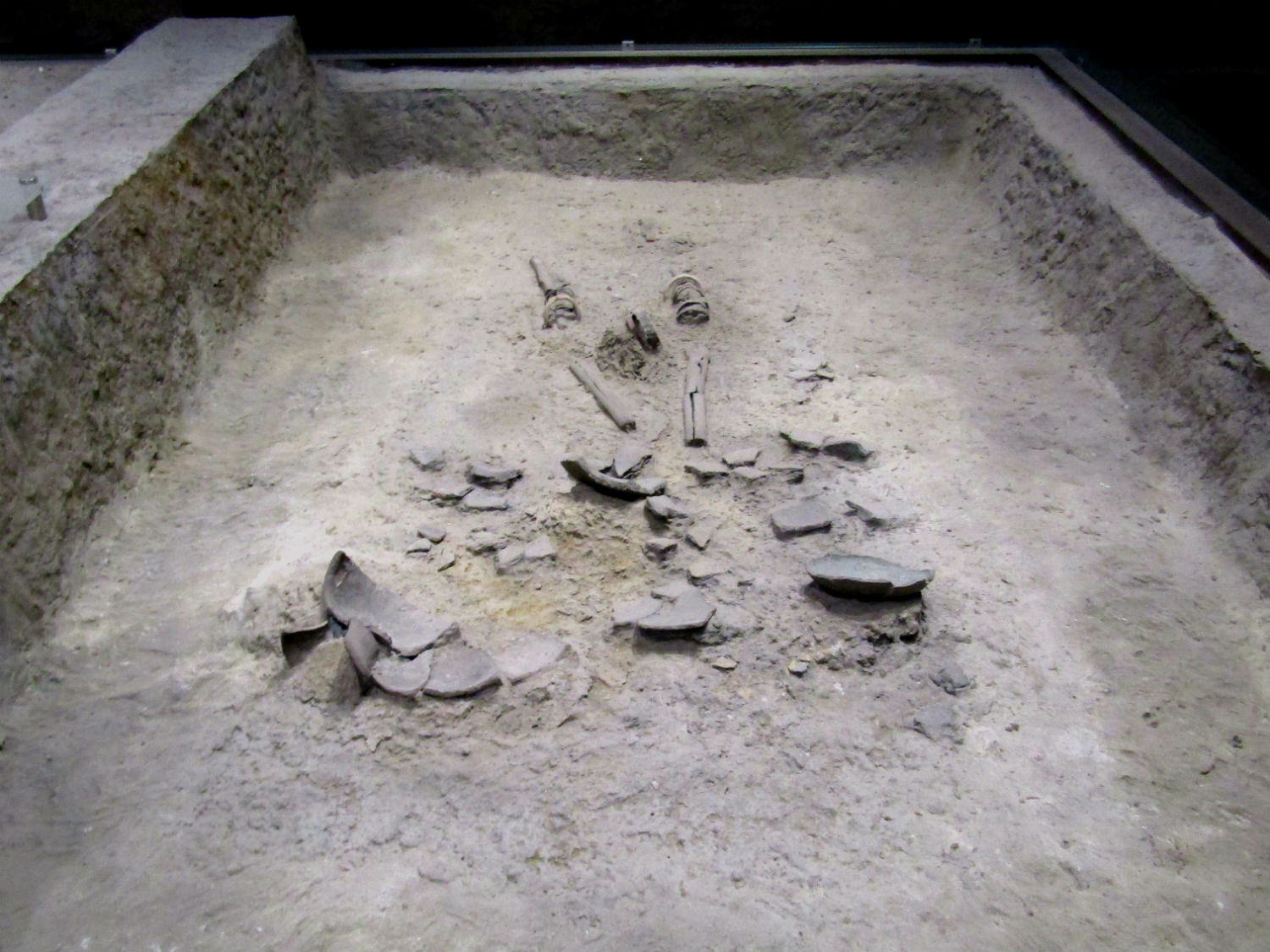
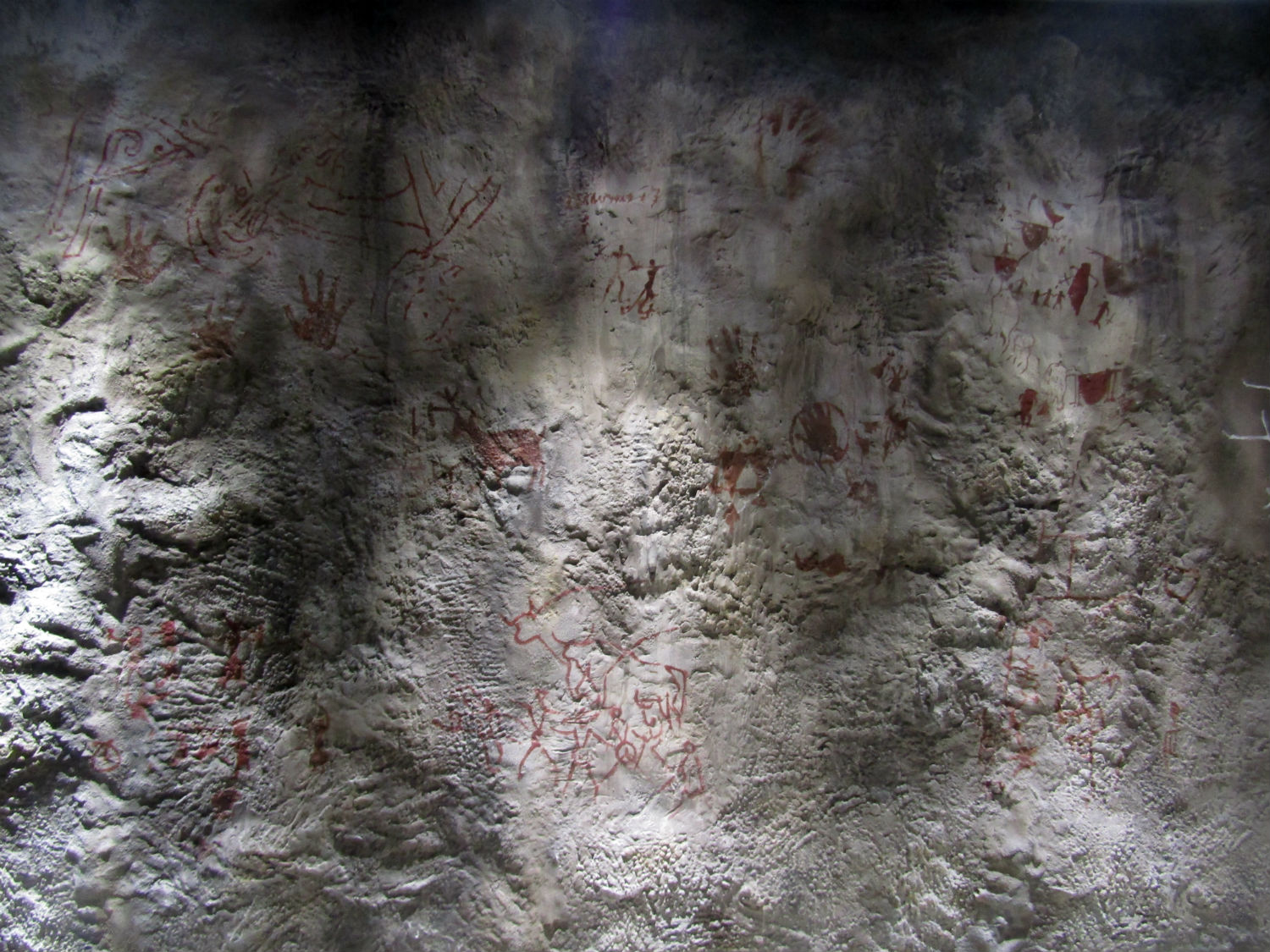
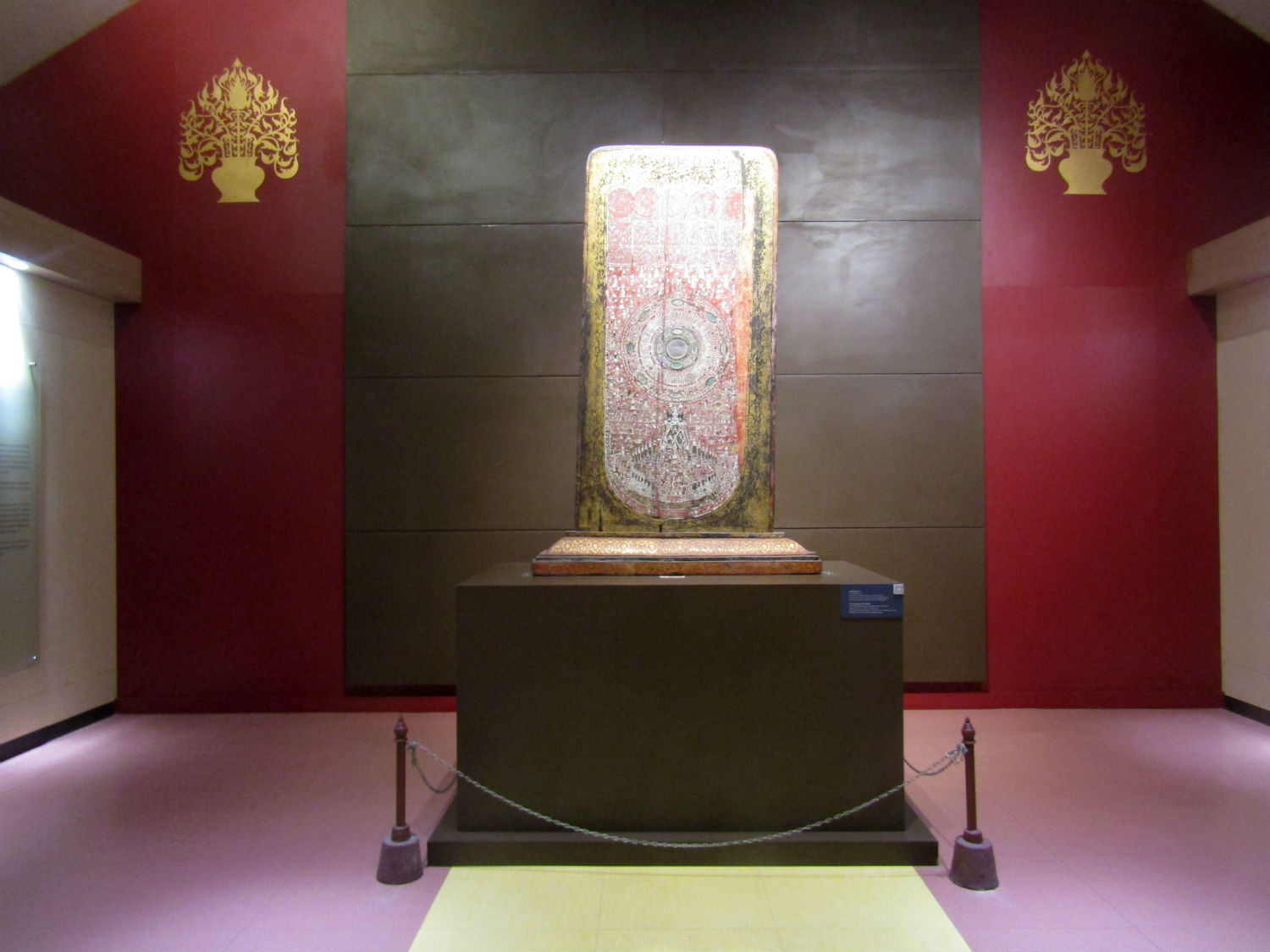 Chiang Mai National Museum, Chiang Mai
Chiang Mai National Museum, Chiang Mai
More delay……..
Chastised for not topping up with fuel yesterday, I pay the price with more delay while we painfully get jammed up in city streets searching for a petrol station. Finally we head west towards arguably the most iconic location within easy reach of Chiang Mai.
Passing the shrine to Kuba Sriwichai on the left we begin the assent to Doi Suthep. At the halfway point is a viewpoint. An idea of the height of this mountain is the incredible scene of an AirAsia flight taking off from Chiang Mai Airport. It makes it accent and starts to turn presumably heading for Bangkok but it’s still lower than the elevation at the viewpoint!
Passing the shrine to Kuba Sriwichai on the left we begin the assent to Doi Suthep. At the halfway point is a viewpoint. An idea of the height of this mountain is the incredible scene of an AirAsia flight taking off from Chiang Mai Airport. It makes it accent and starts to turn presumably heading for Bangkok but it’s still lower than the elevation at the viewpoint!
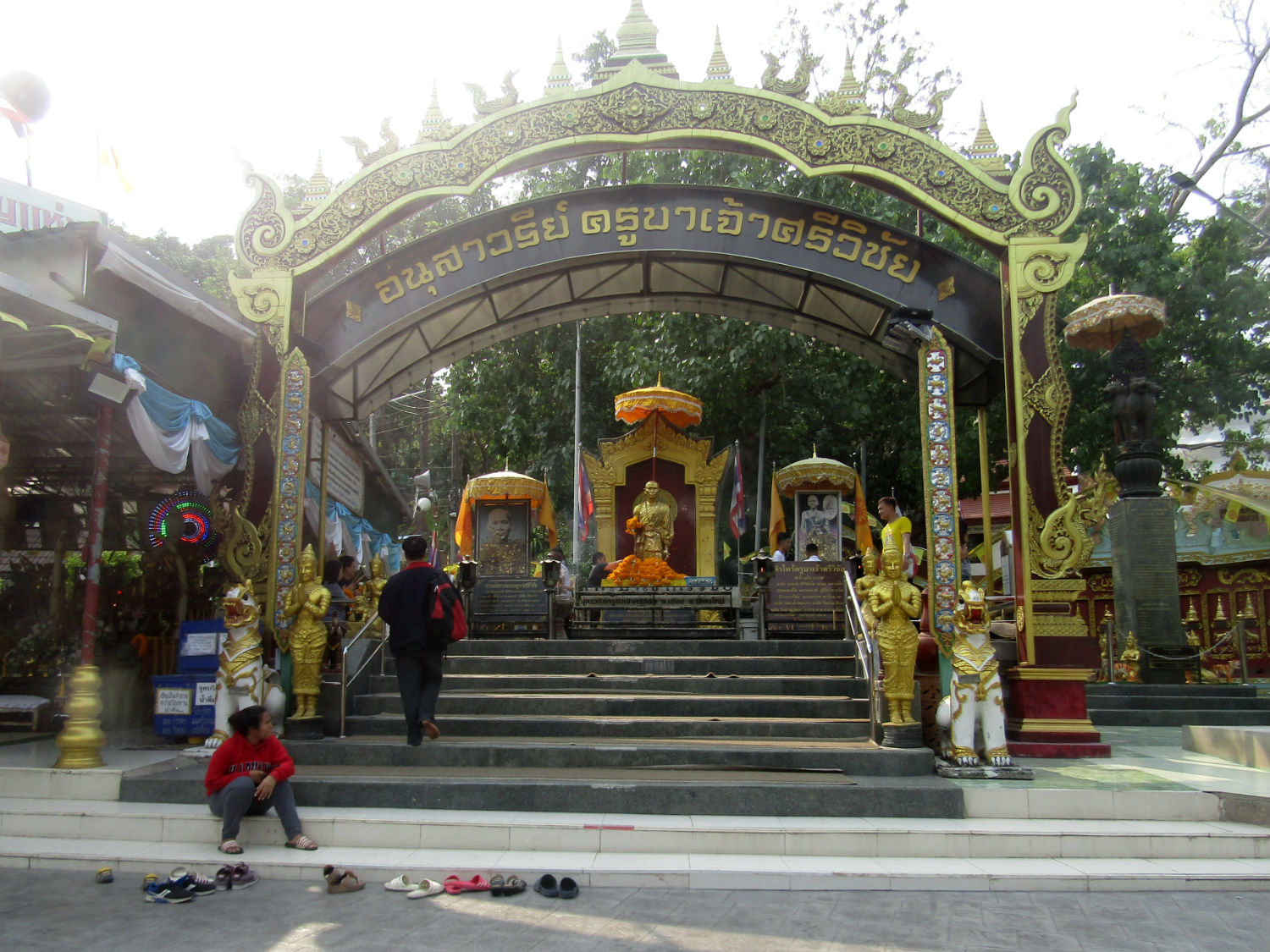
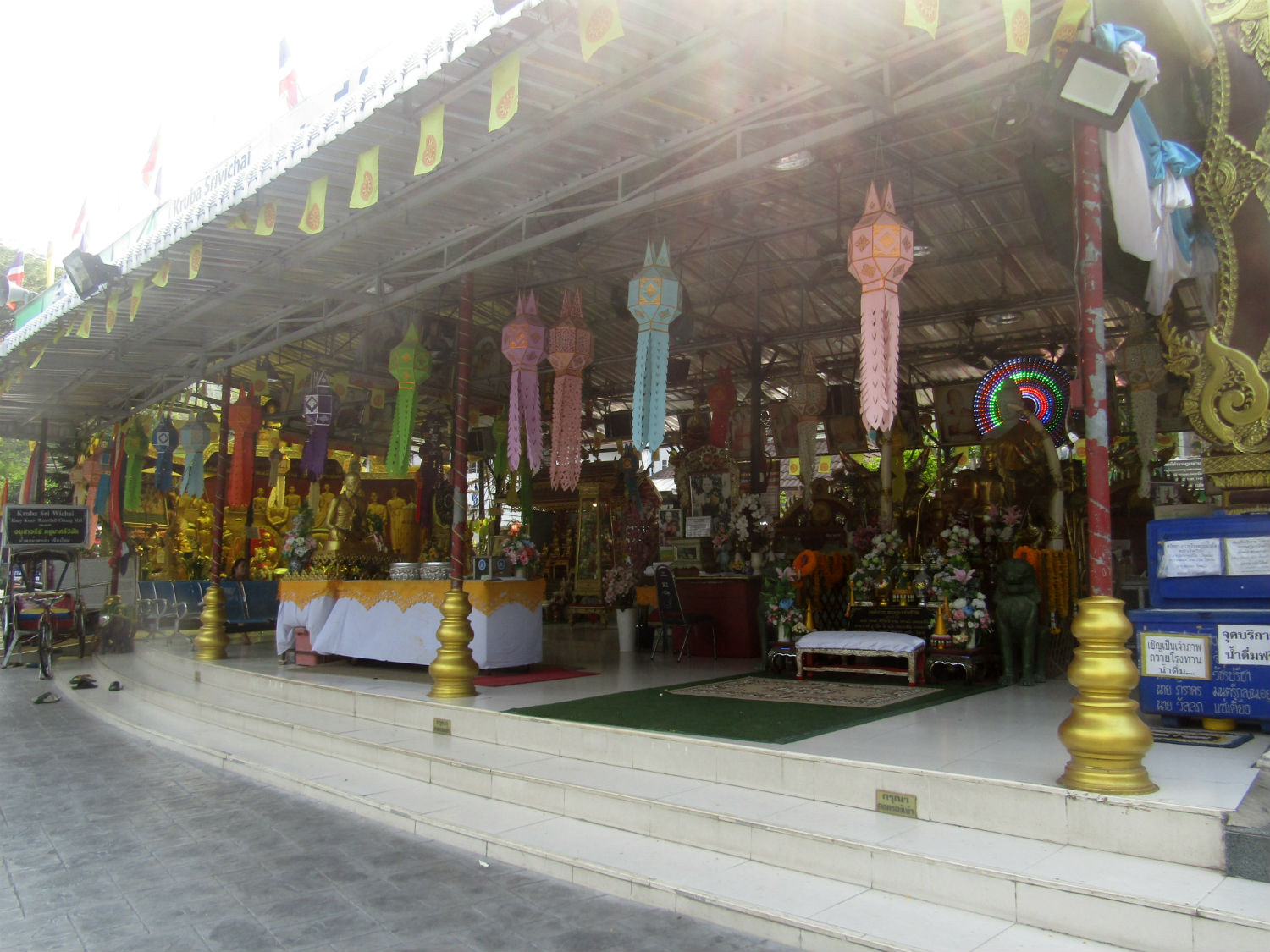
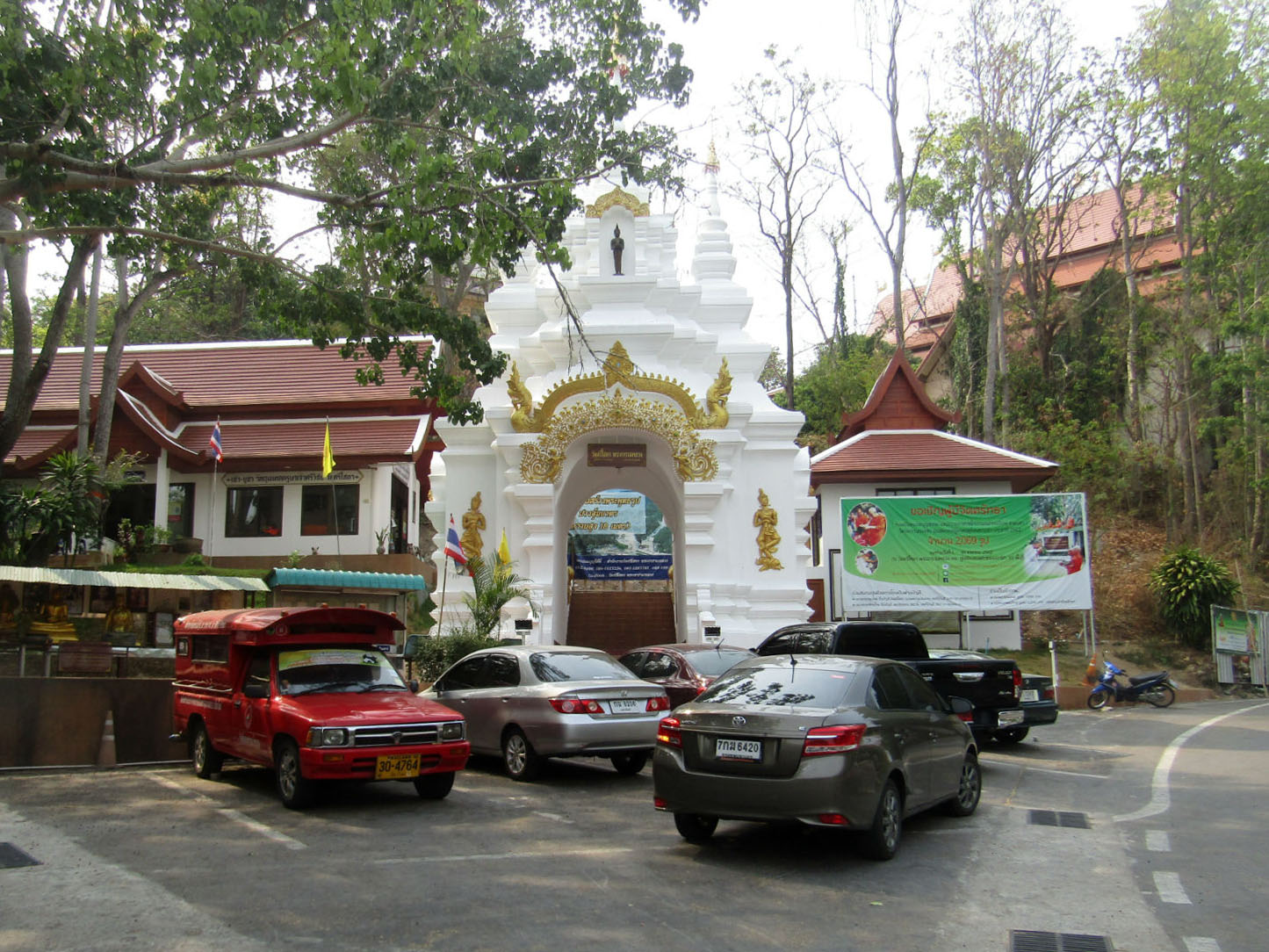
Kruba Srivichai Monument, Mueang Chaing Mai District

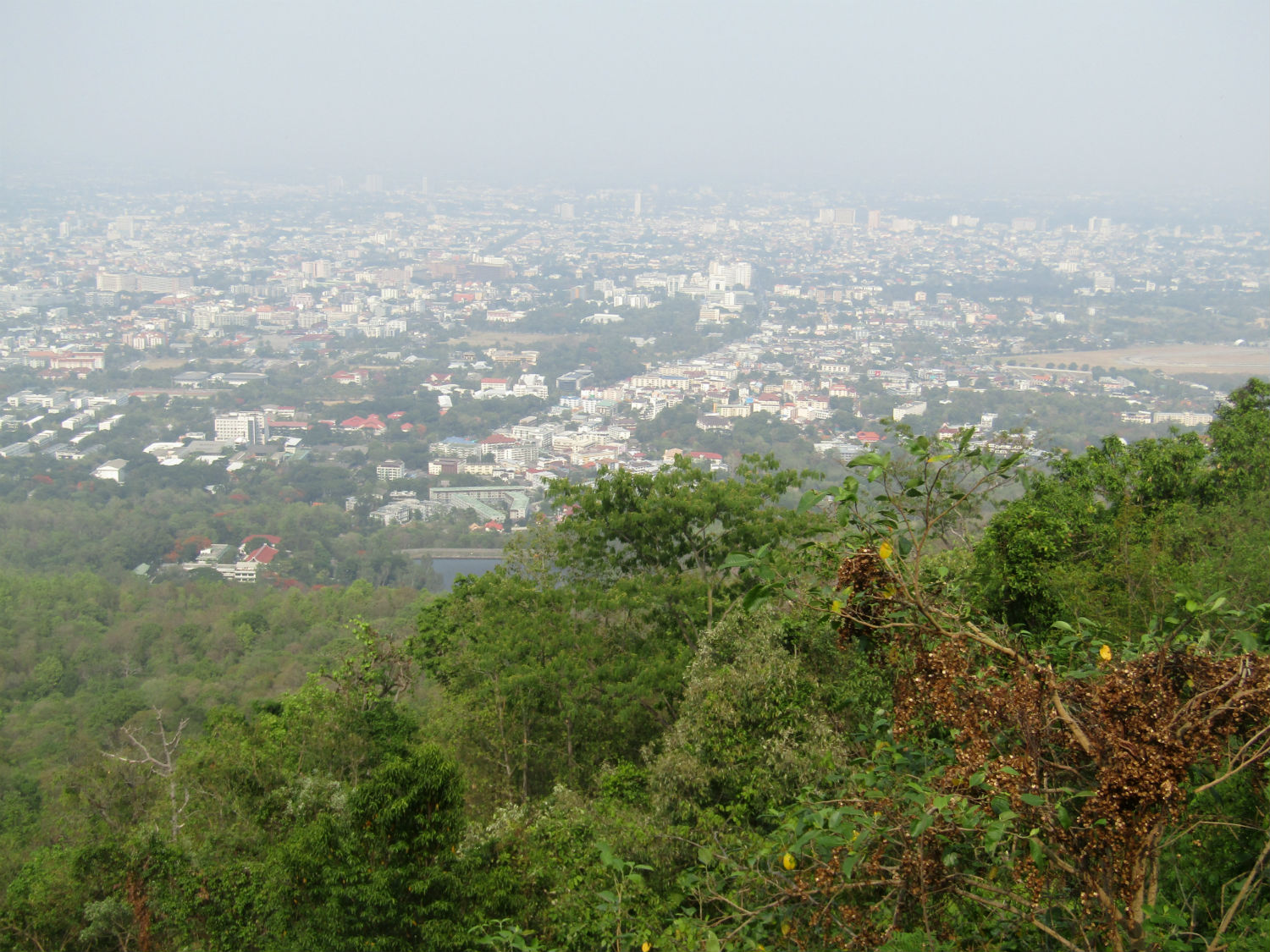
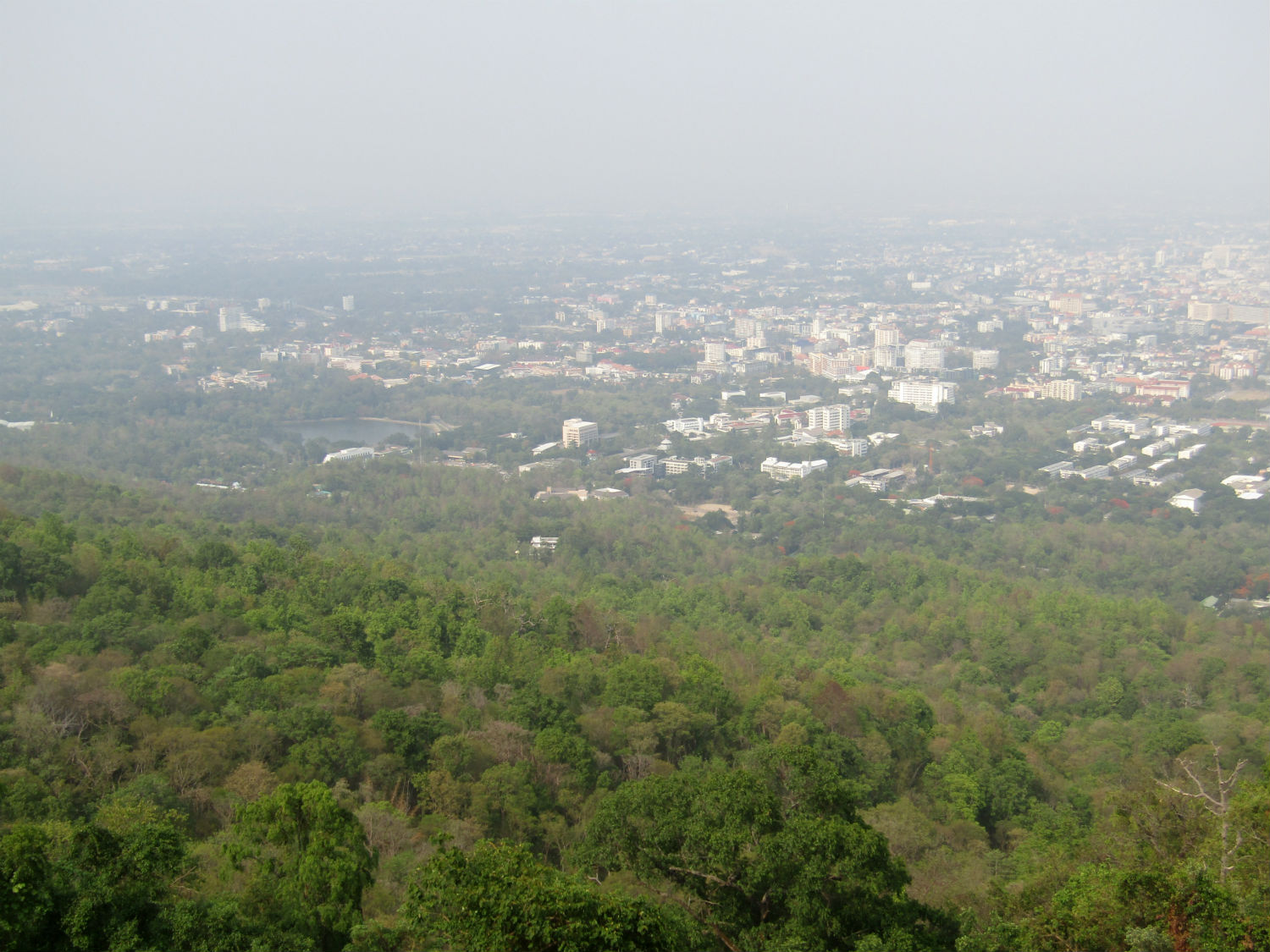 Sala Chalerm Phra Kiat Viewpoint, Mueang Chaing Mai District, Chiang Mai Province
Sala Chalerm Phra Kiat Viewpoint, Mueang Chaing Mai District, Chiang Mai Province
Wat Phra That Doi Suthep……..
From time to time, I make it back to sites I’ve visited before. In the case of Wat Phra That Doi Suthep, this will be at least my third visit but the last time I was in the area, I did not enter the complex. I’m sure there was an entry fee for foreigners of at least 100 baht but I’ve since been told that was never the case. Well whatever the situation was, now more than ten years ago, it’s all changed now. No more do you need to make the stiff climb up the naga staircase. Now there’s a lift/cable car. The entry fee is just 30 baht plus 20 baht for the lift.
The temple itself is just as I remember it but there have been additions and embellishments. Significantly there are more visitors here too. What hasn’t changed are the exquisite views of the city of Chiang Mai.
The original founding of the temple remains a legend and there are a few varied versions. The temple is said to have been founded in 1383 when the first stupa was built. Over time, the temple has expanded, and been made to look more extravagant with many more holy shrines added. A road to the temple was first built in 1935.
Today the chedi is the most holy place, built on the site of the original stupa. There is a legend of a white elephant which dropped dead at this site reportedly carrying a piece of the relic of Guatama Buddha during to reign of King Nu Naone in the Sukhothai Era.
With little time left in the day, I would still like to press on to the next location.
The temple itself is just as I remember it but there have been additions and embellishments. Significantly there are more visitors here too. What hasn’t changed are the exquisite views of the city of Chiang Mai.
The original founding of the temple remains a legend and there are a few varied versions. The temple is said to have been founded in 1383 when the first stupa was built. Over time, the temple has expanded, and been made to look more extravagant with many more holy shrines added. A road to the temple was first built in 1935.
Today the chedi is the most holy place, built on the site of the original stupa. There is a legend of a white elephant which dropped dead at this site reportedly carrying a piece of the relic of Guatama Buddha during to reign of King Nu Naone in the Sukhothai Era.
With little time left in the day, I would still like to press on to the next location.
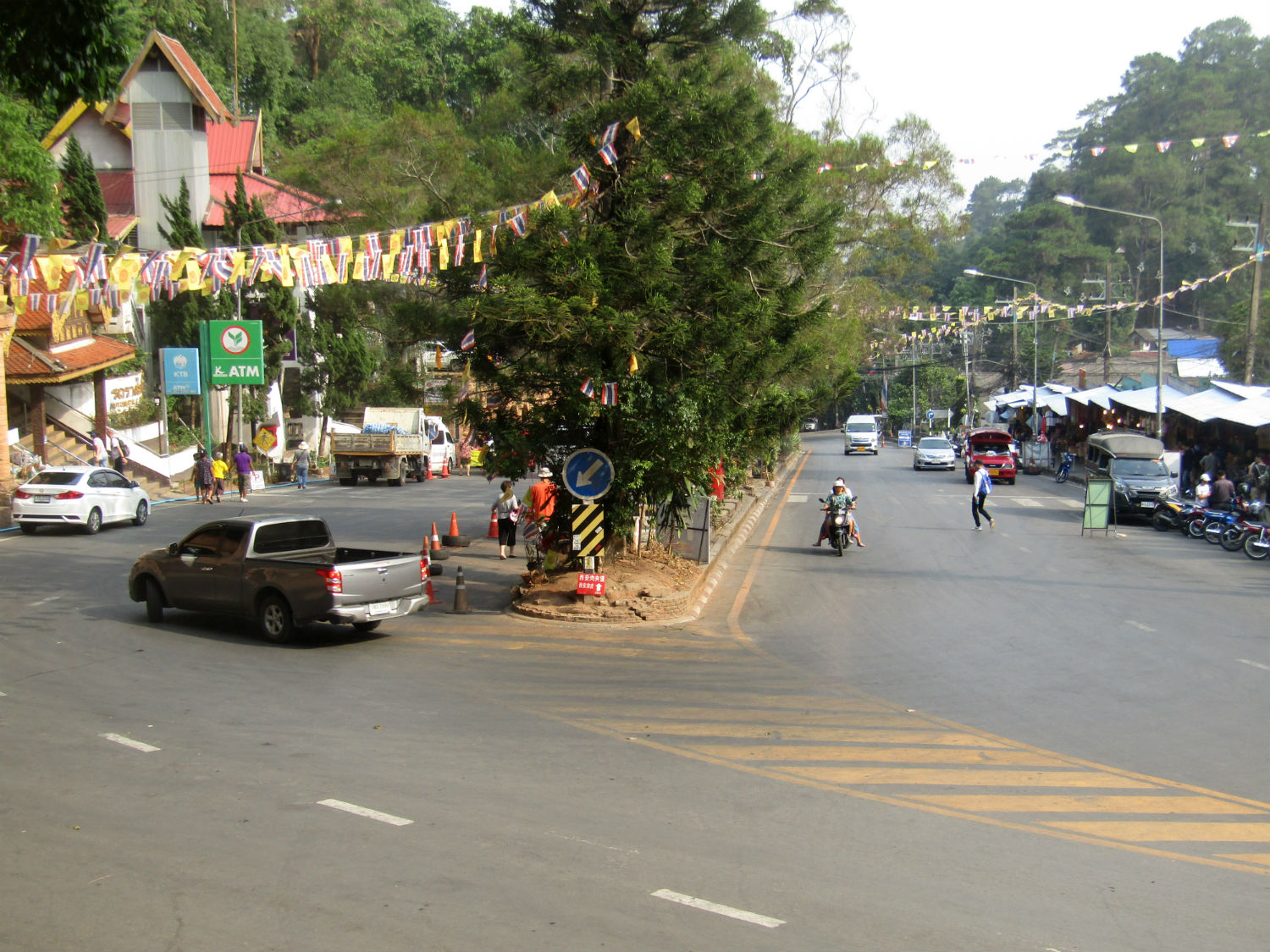

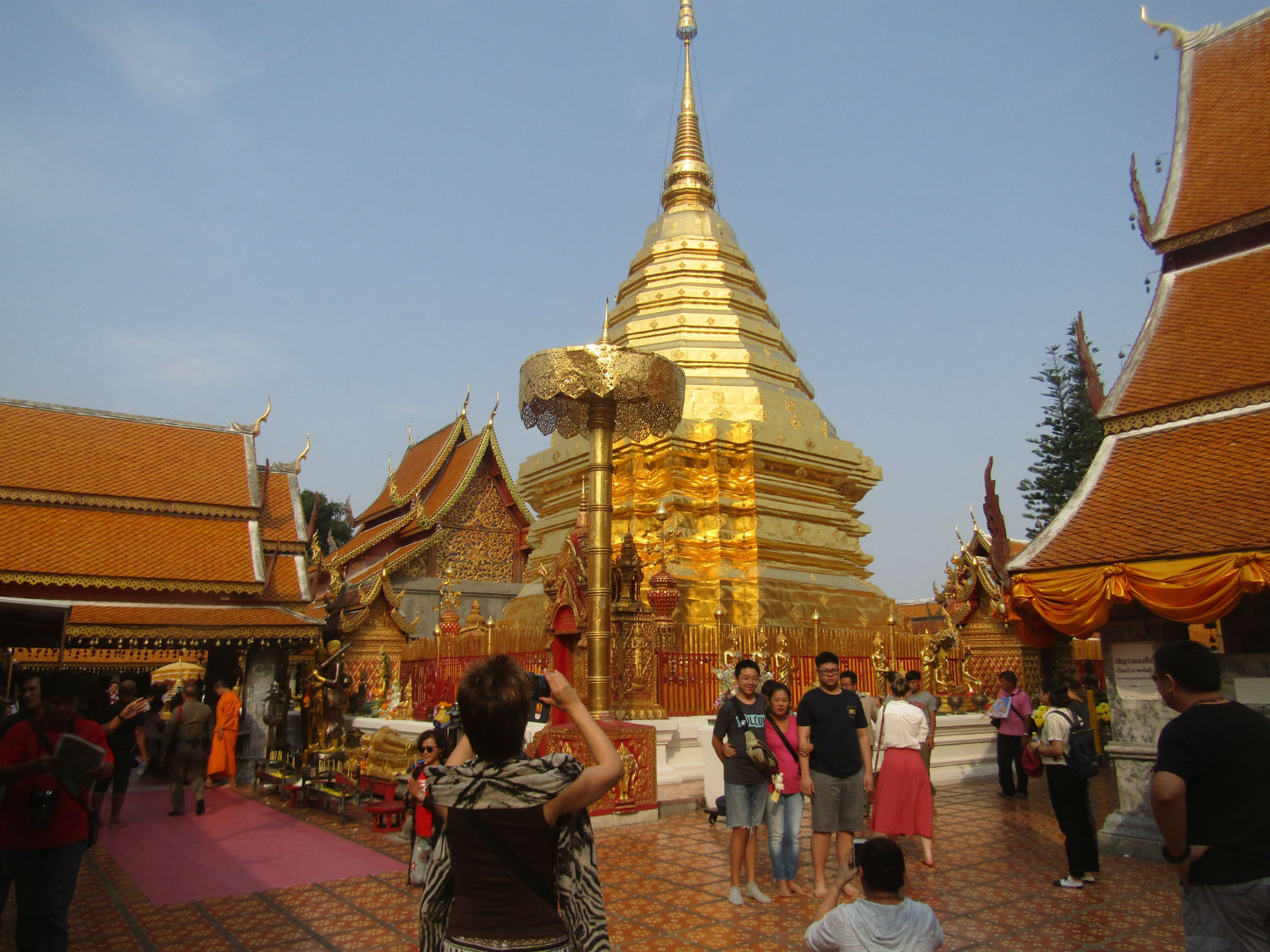
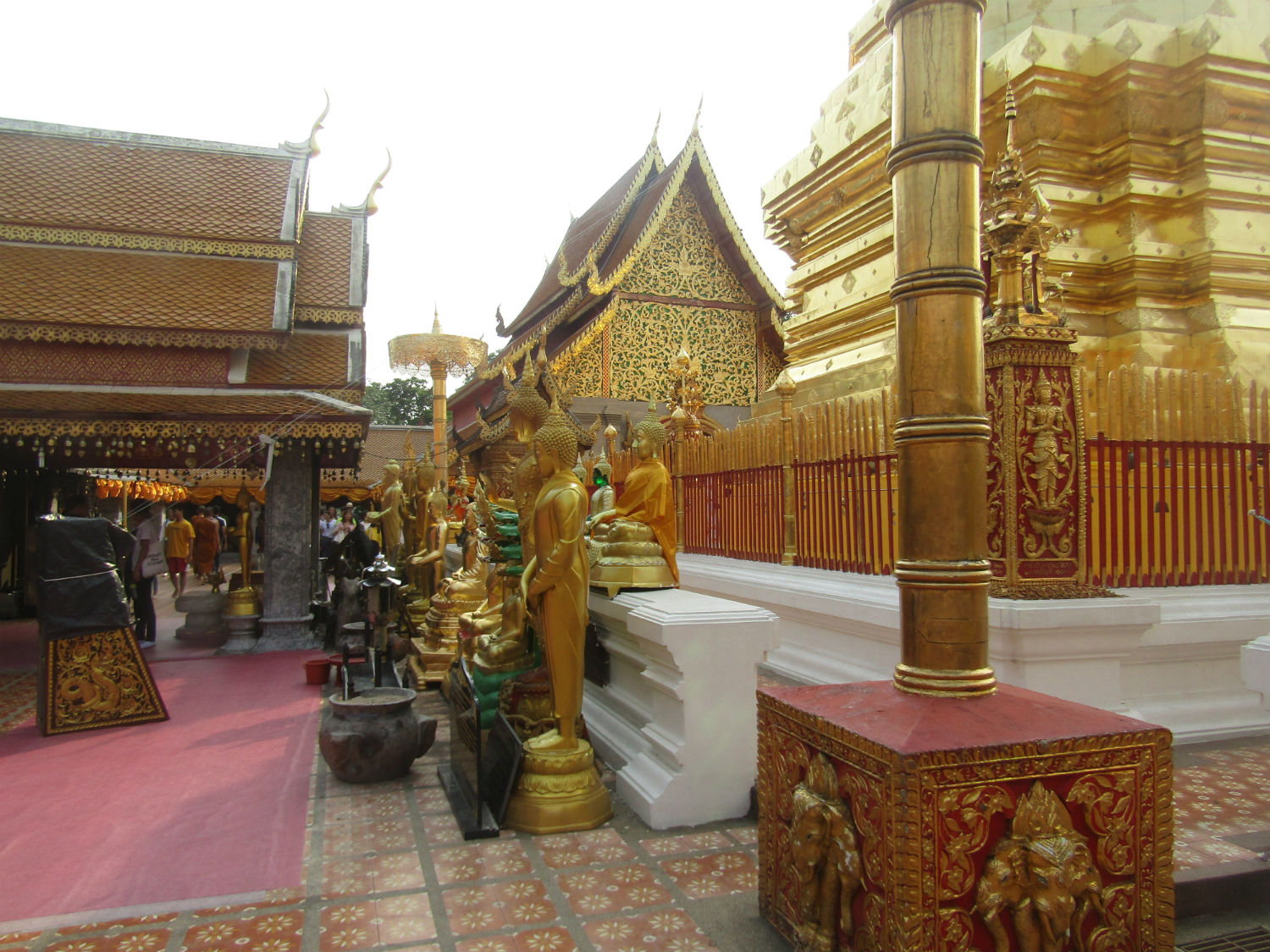
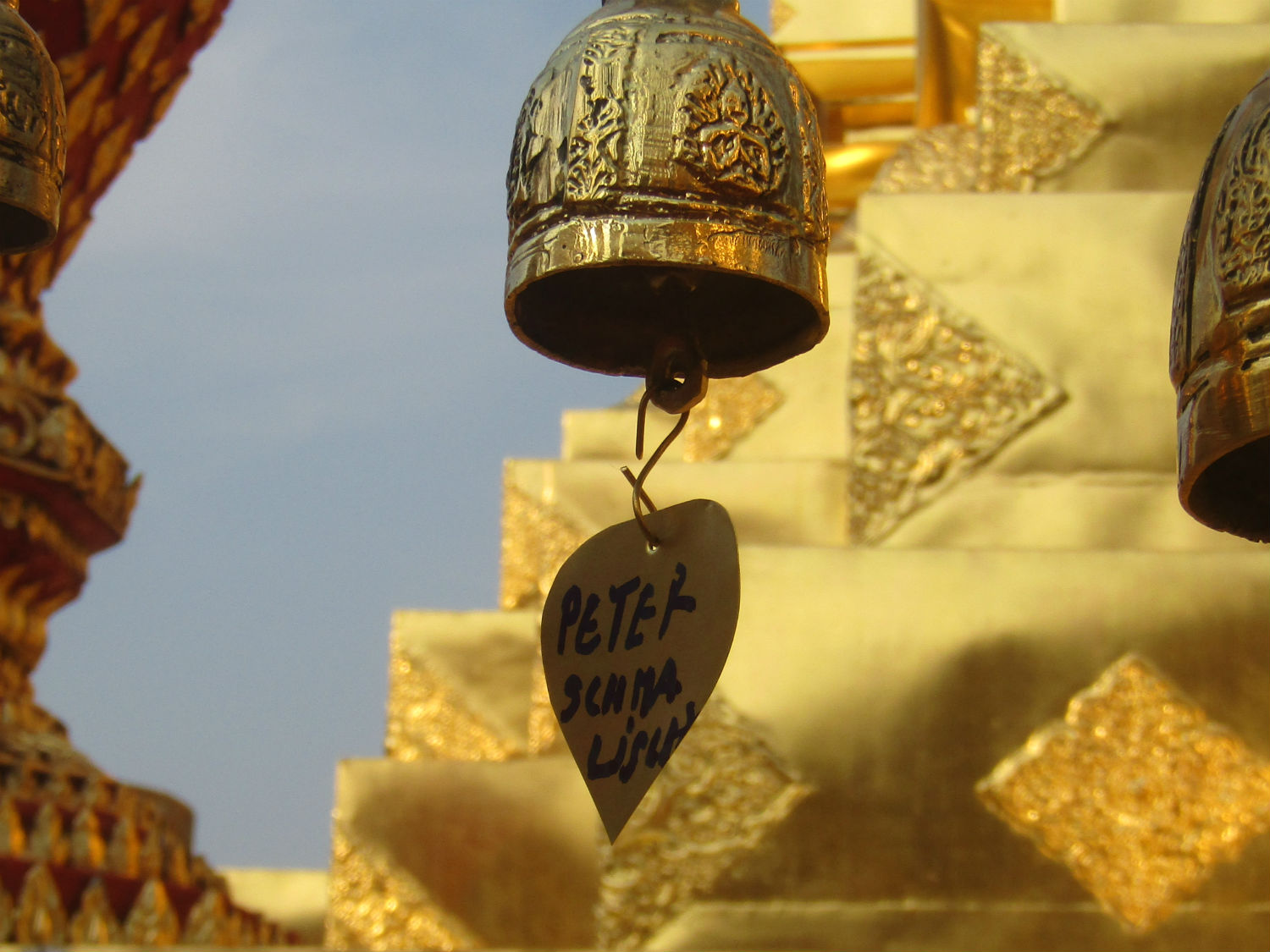
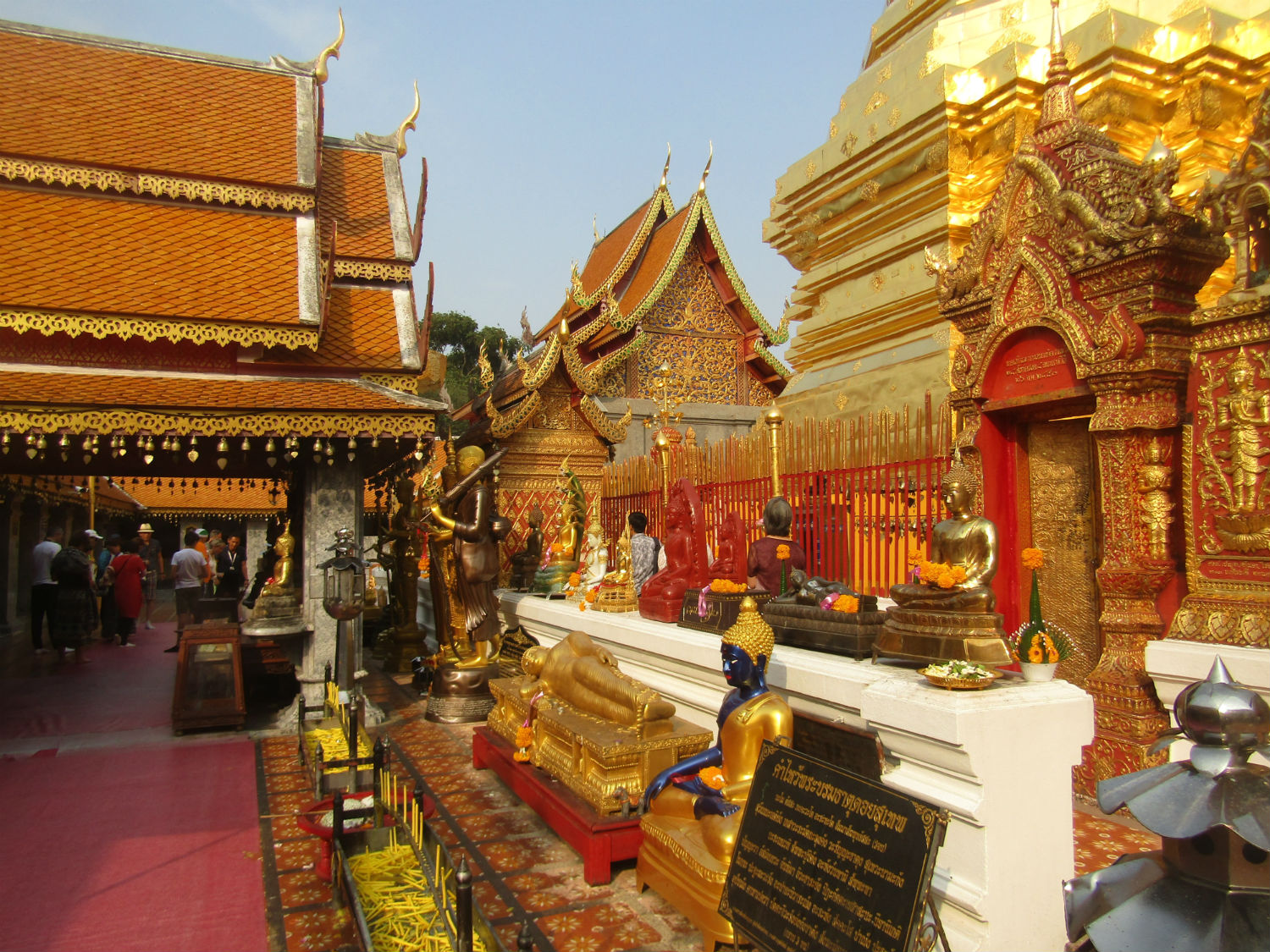
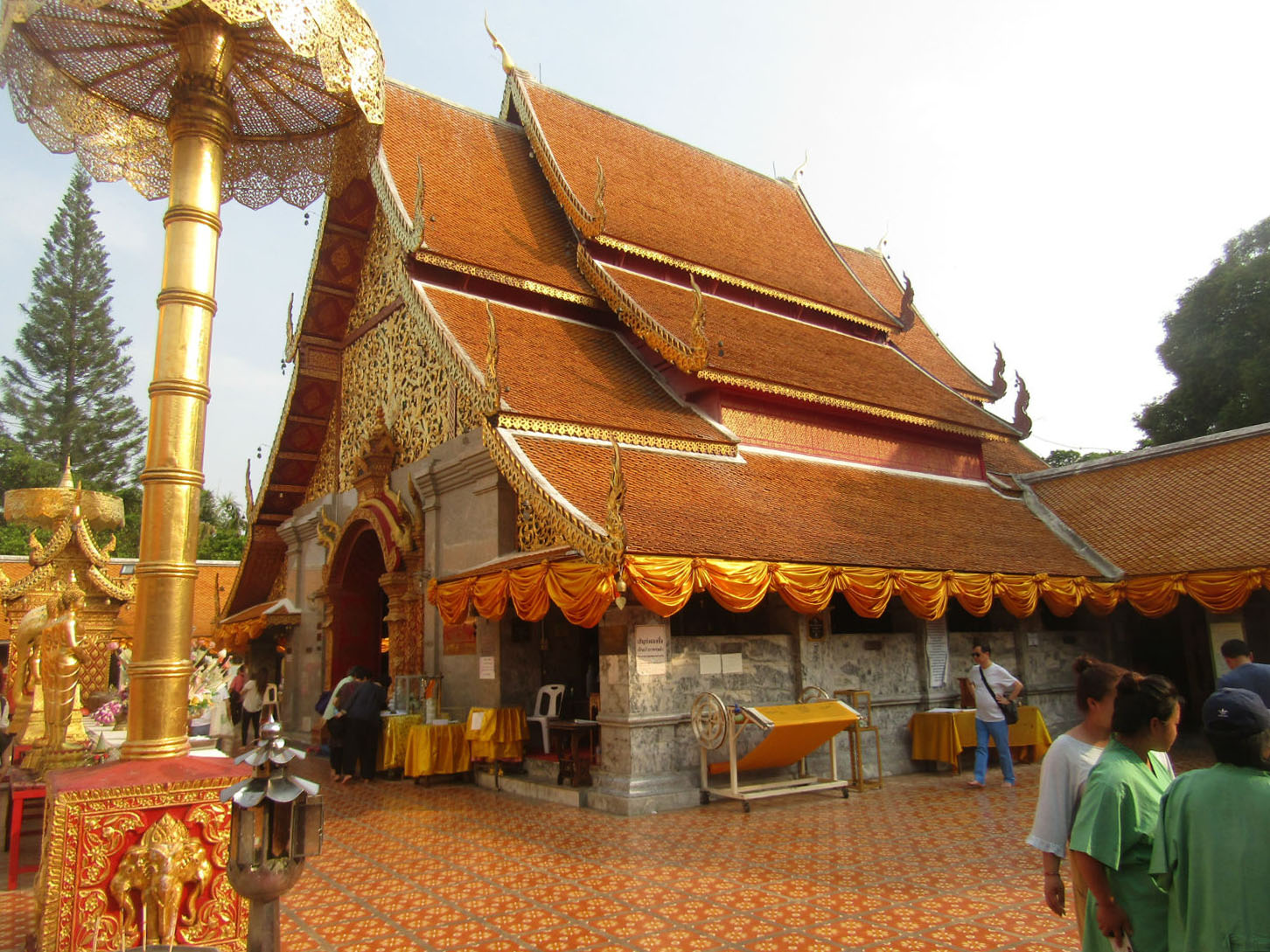

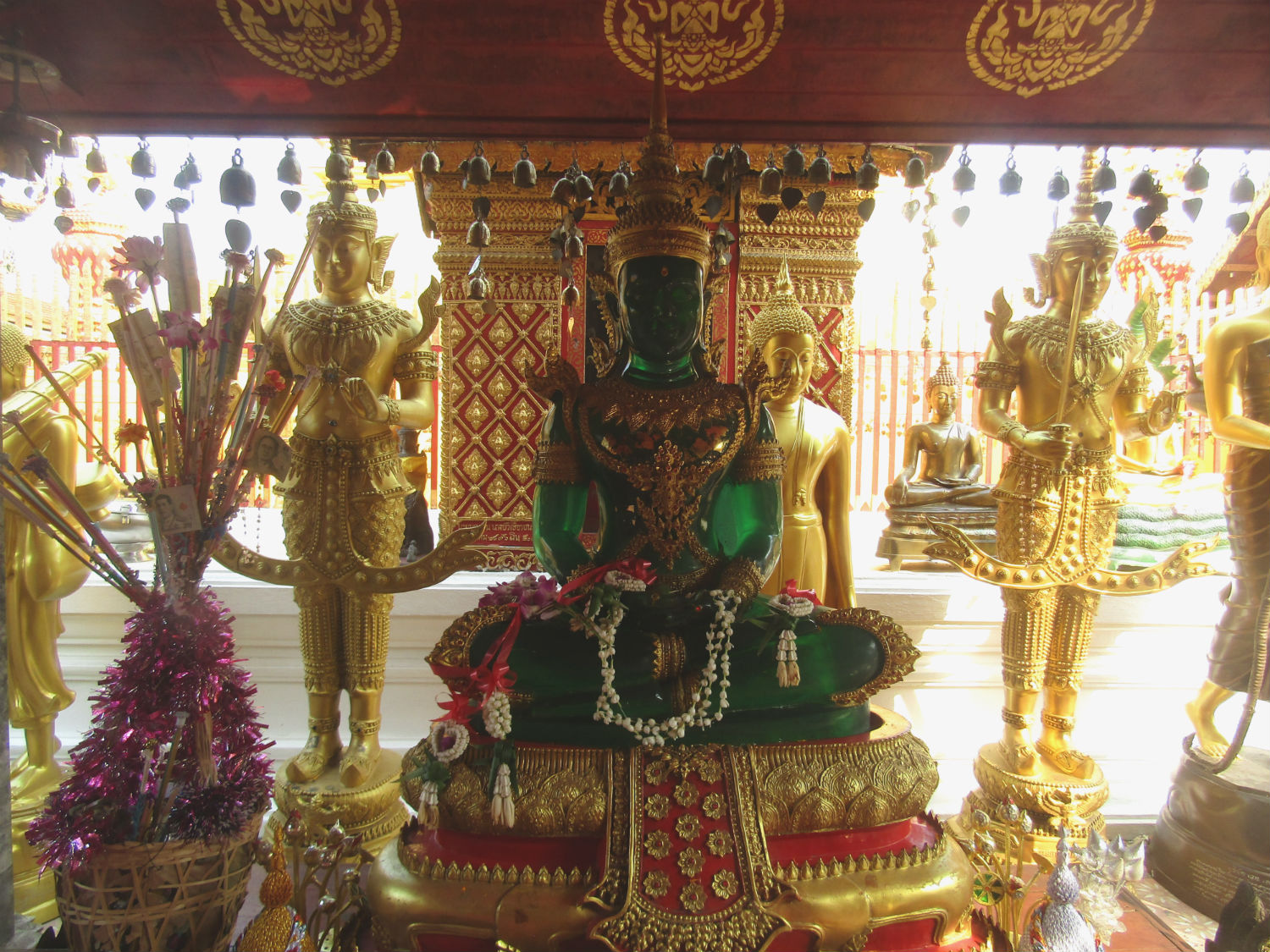
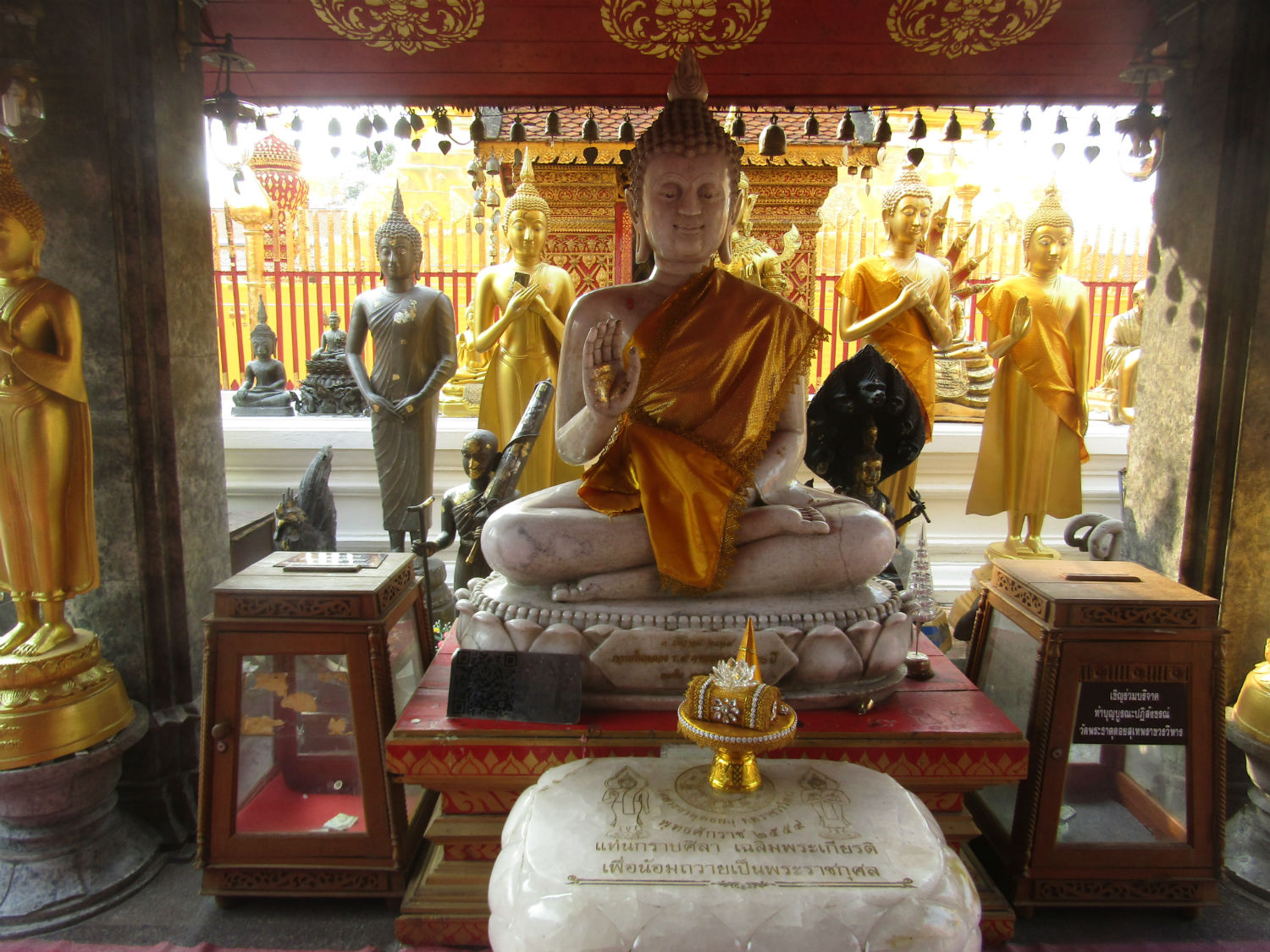
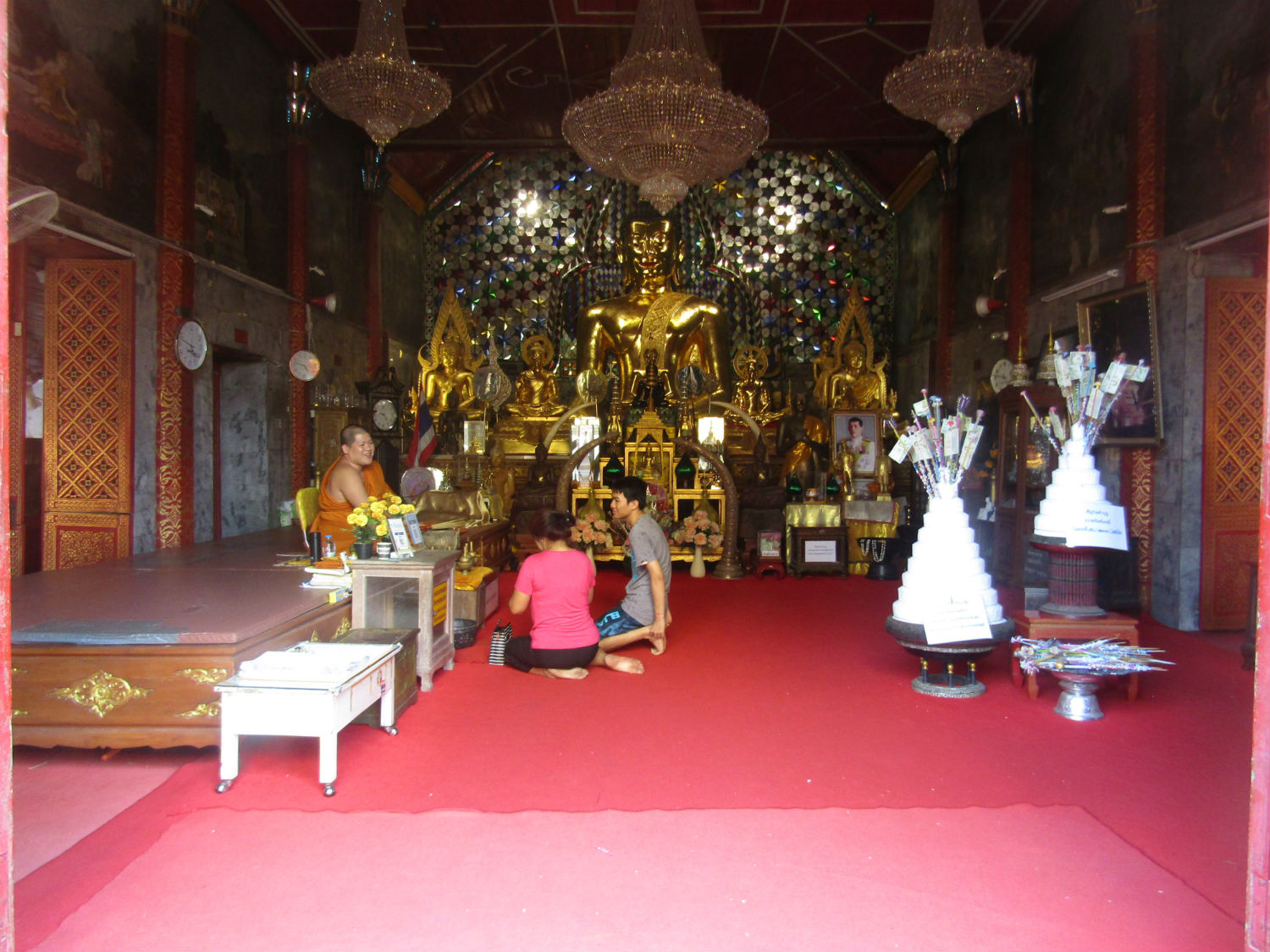
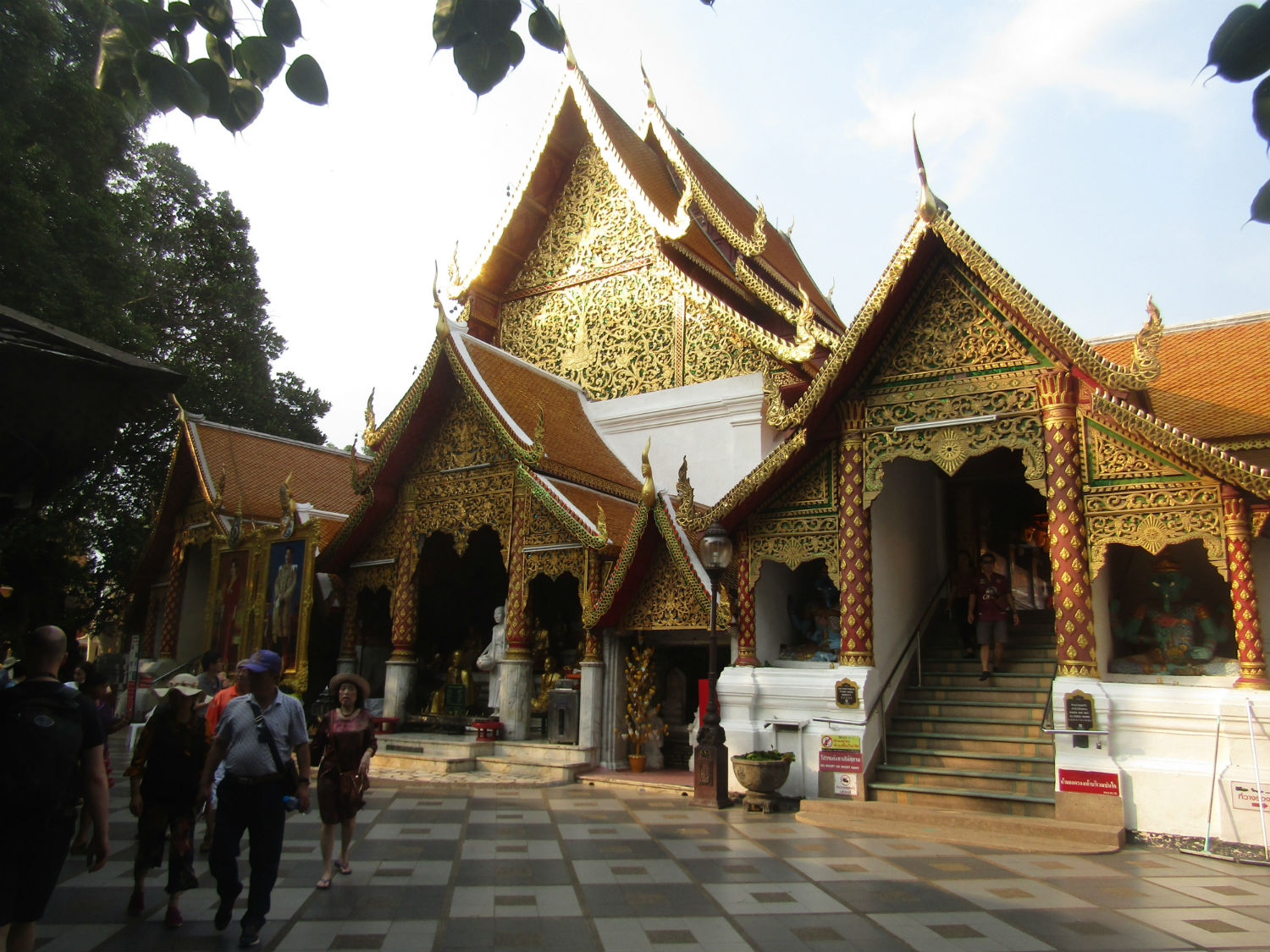
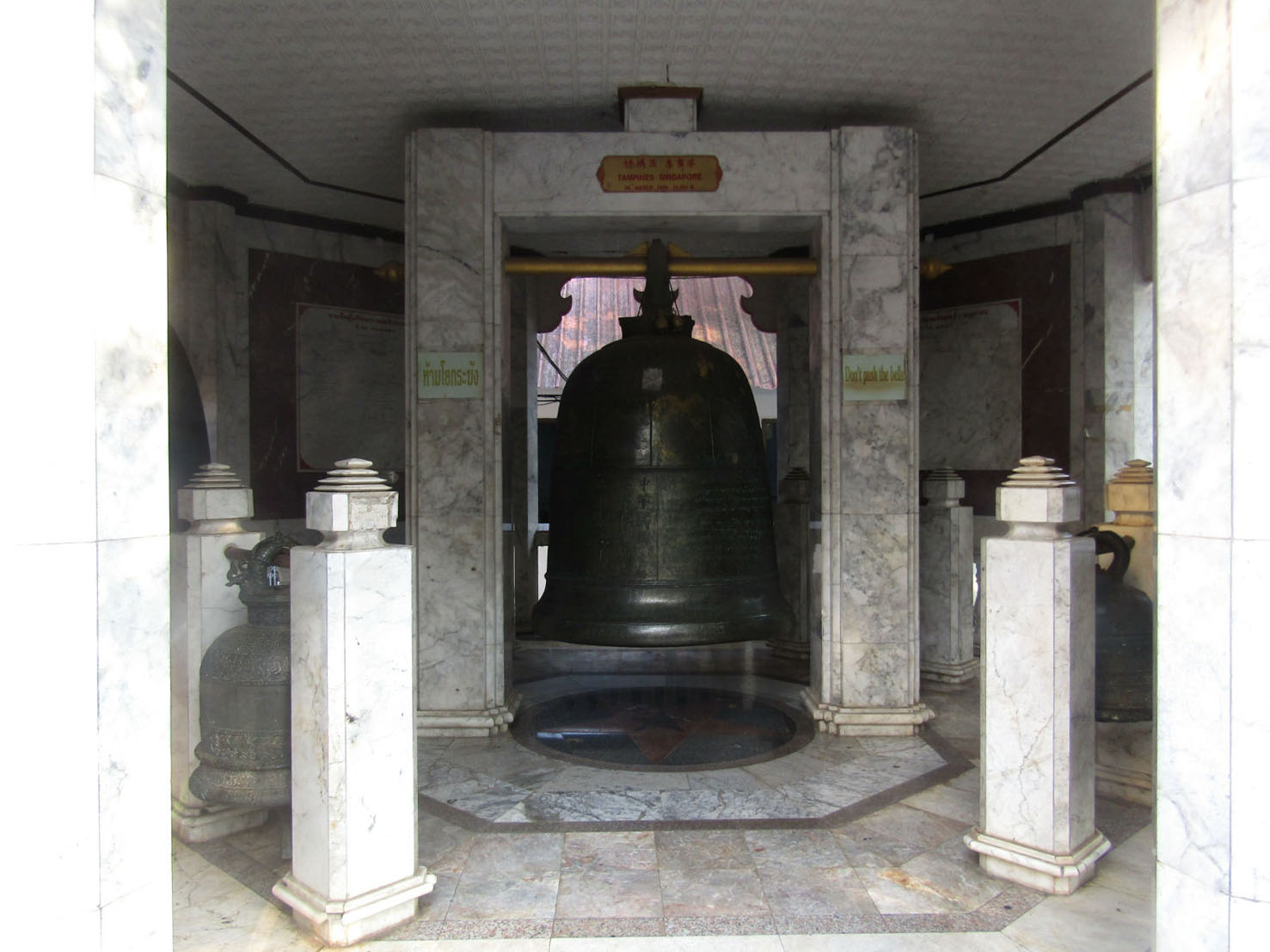
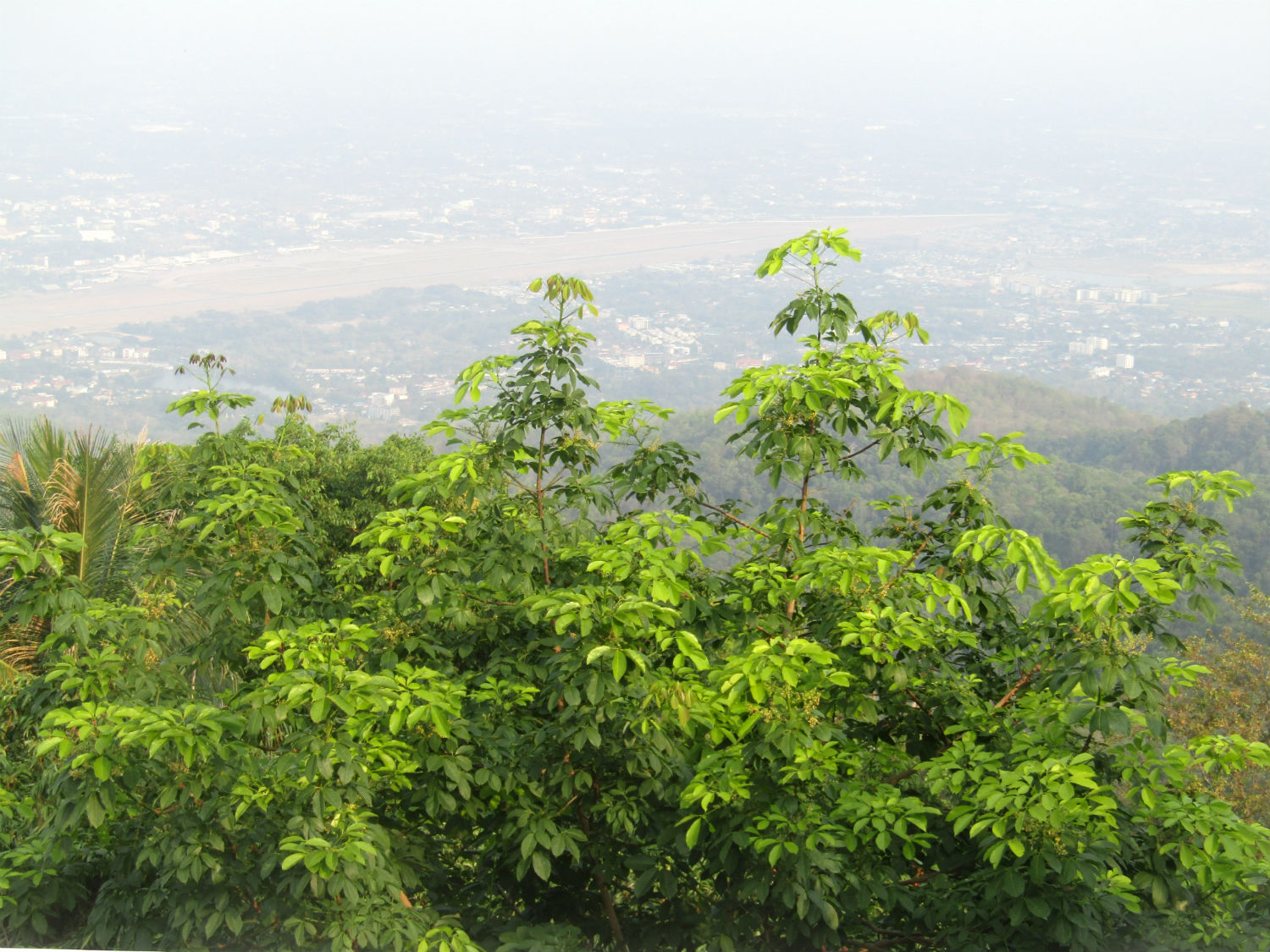
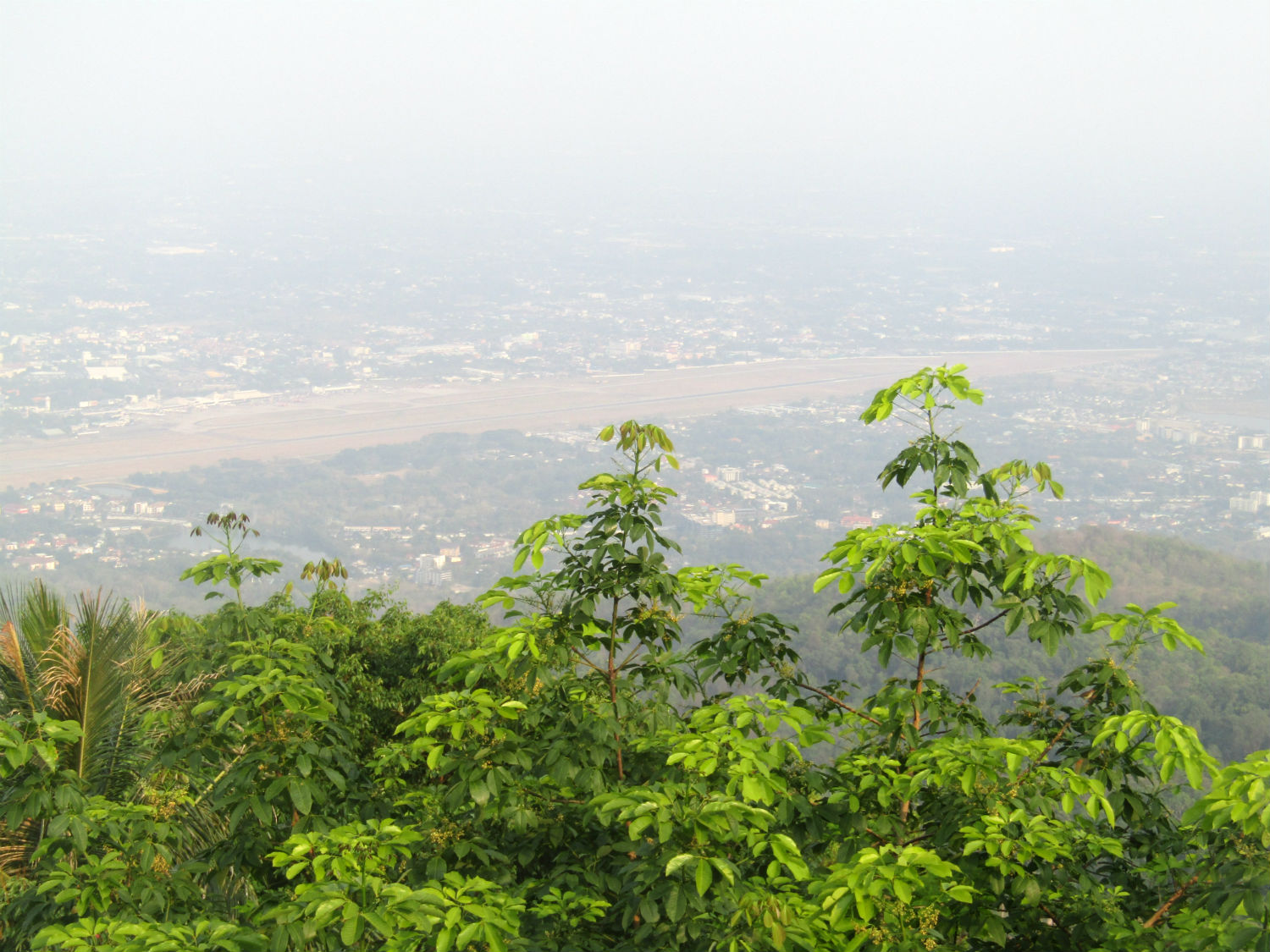
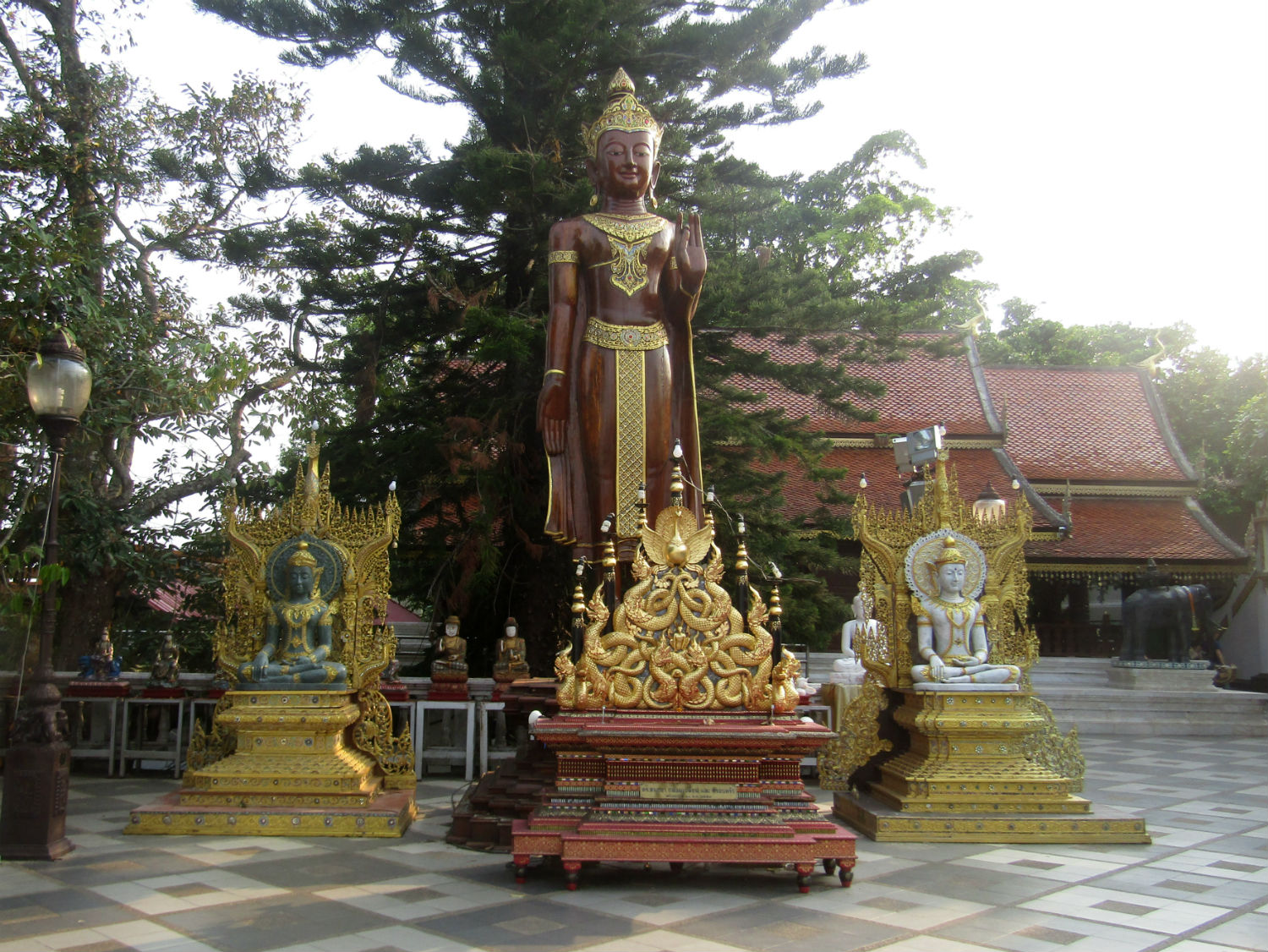
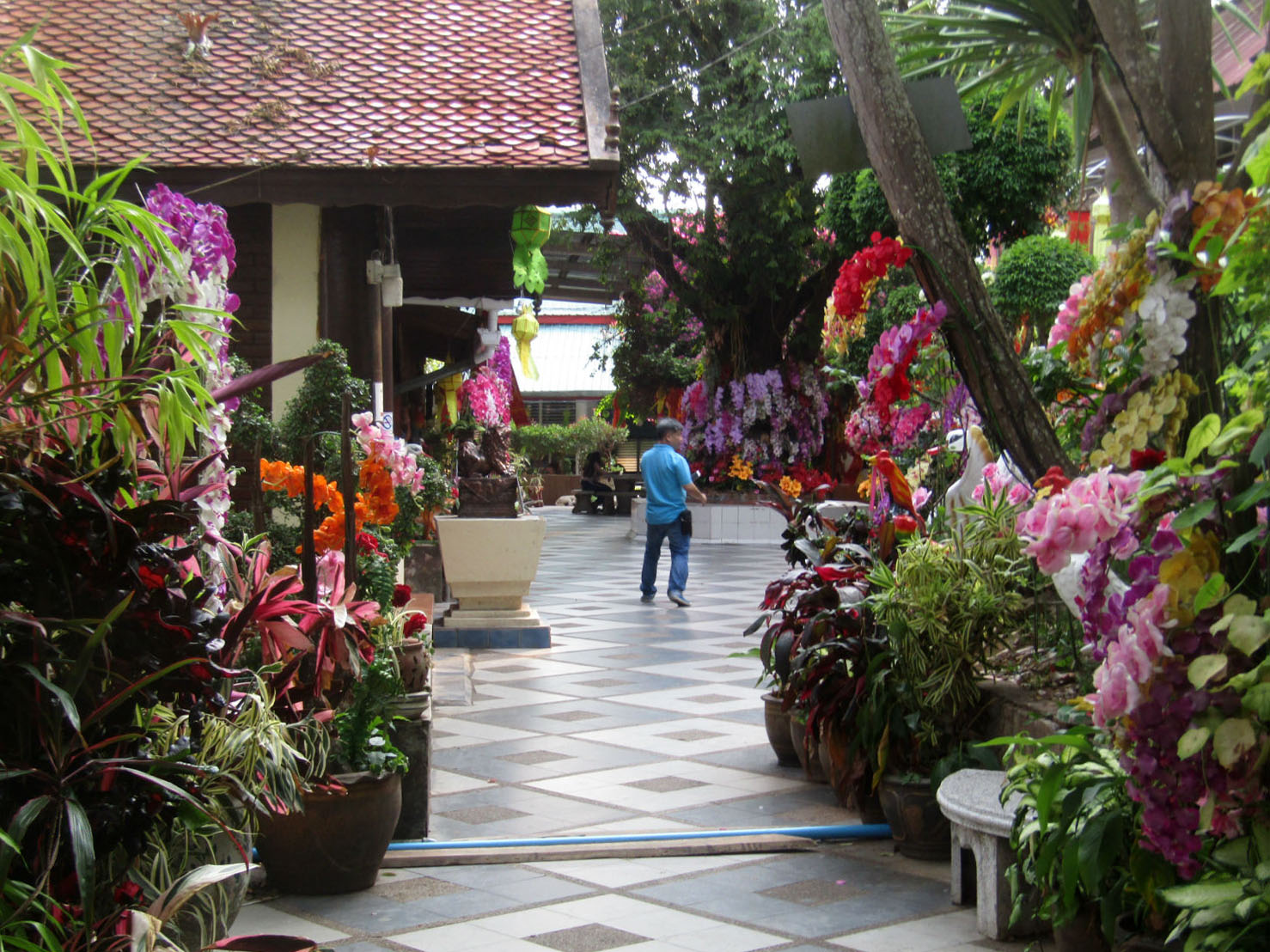
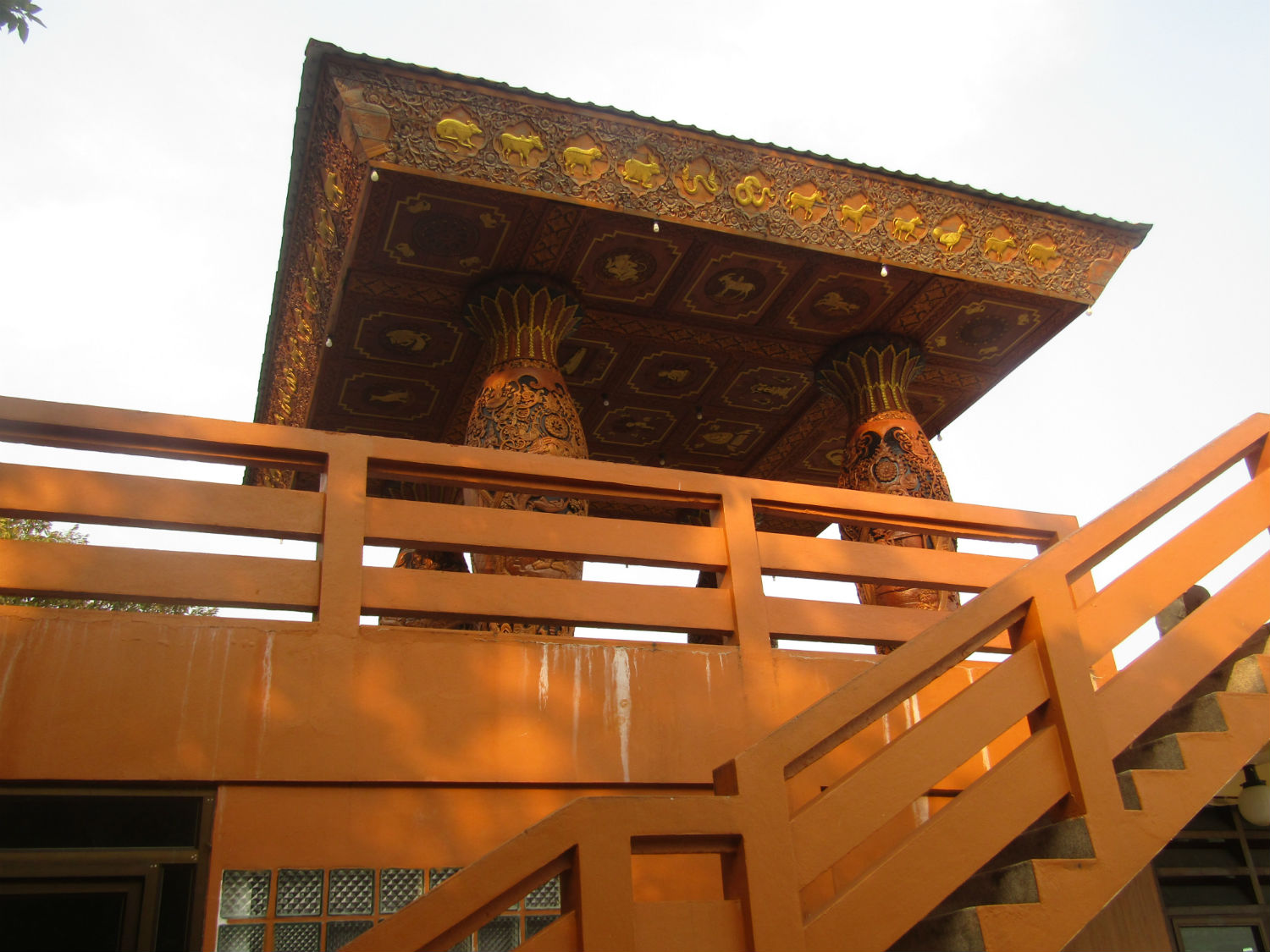 Wat Phra That Doi Suthep, Mueang Chaing Mai District, Chiang Mai Province
Wat Phra That Doi Suthep, Mueang Chaing Mai District, Chiang Mai Province
Bhubing Palace……..
The Bhubing Palace is the royal winter residence in Chiang Mai where the royal family stay during seasonal visits to the people in the northern part of the country. The palace is also the royal guesthouse for State visitors from abroad. In the past Their Majesties welcomed or granted royal audiences to State visitors only in Bangkok. Bhubing Palace was built in 1961. The construction started with only the royal residence building and the guesthouse. The additional buildings were added later.
At the time of arrival, it is well past the last entry time of 3.30pm but we are aware that entry only includes access to the royal gardens and not to any of the royal residence buildings.
At the time of arrival, it is well past the last entry time of 3.30pm but we are aware that entry only includes access to the royal gardens and not to any of the royal residence buildings.
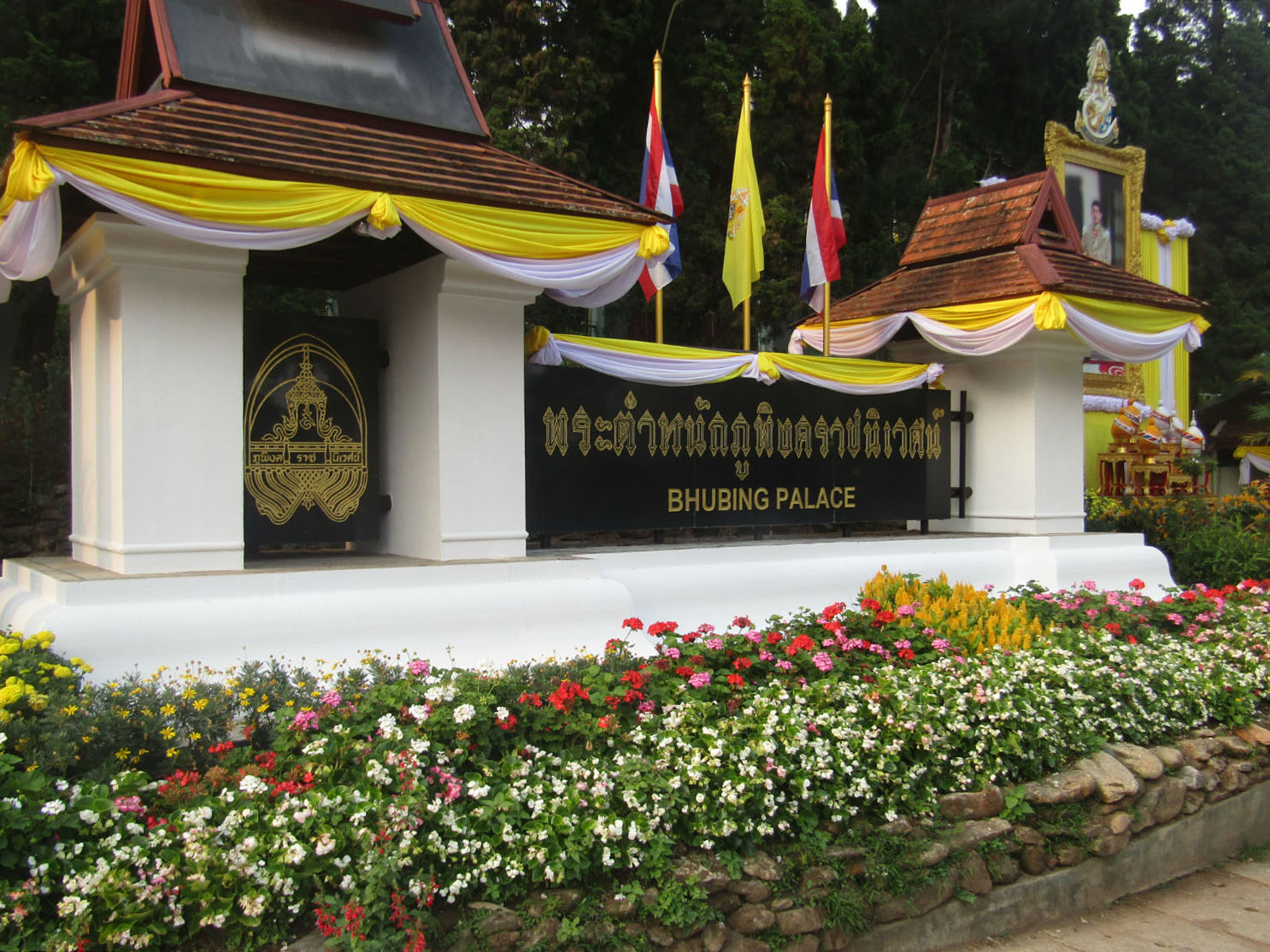
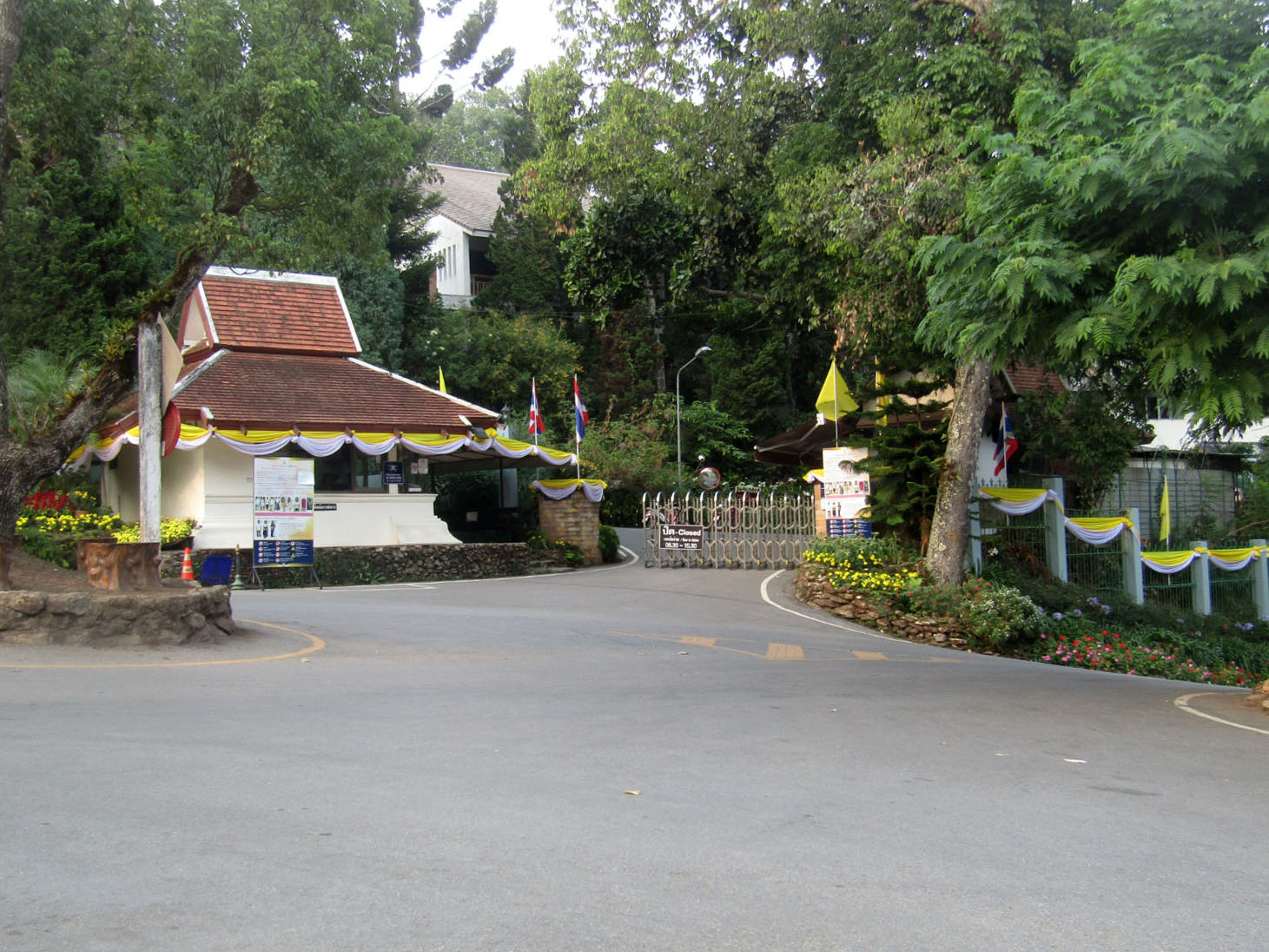
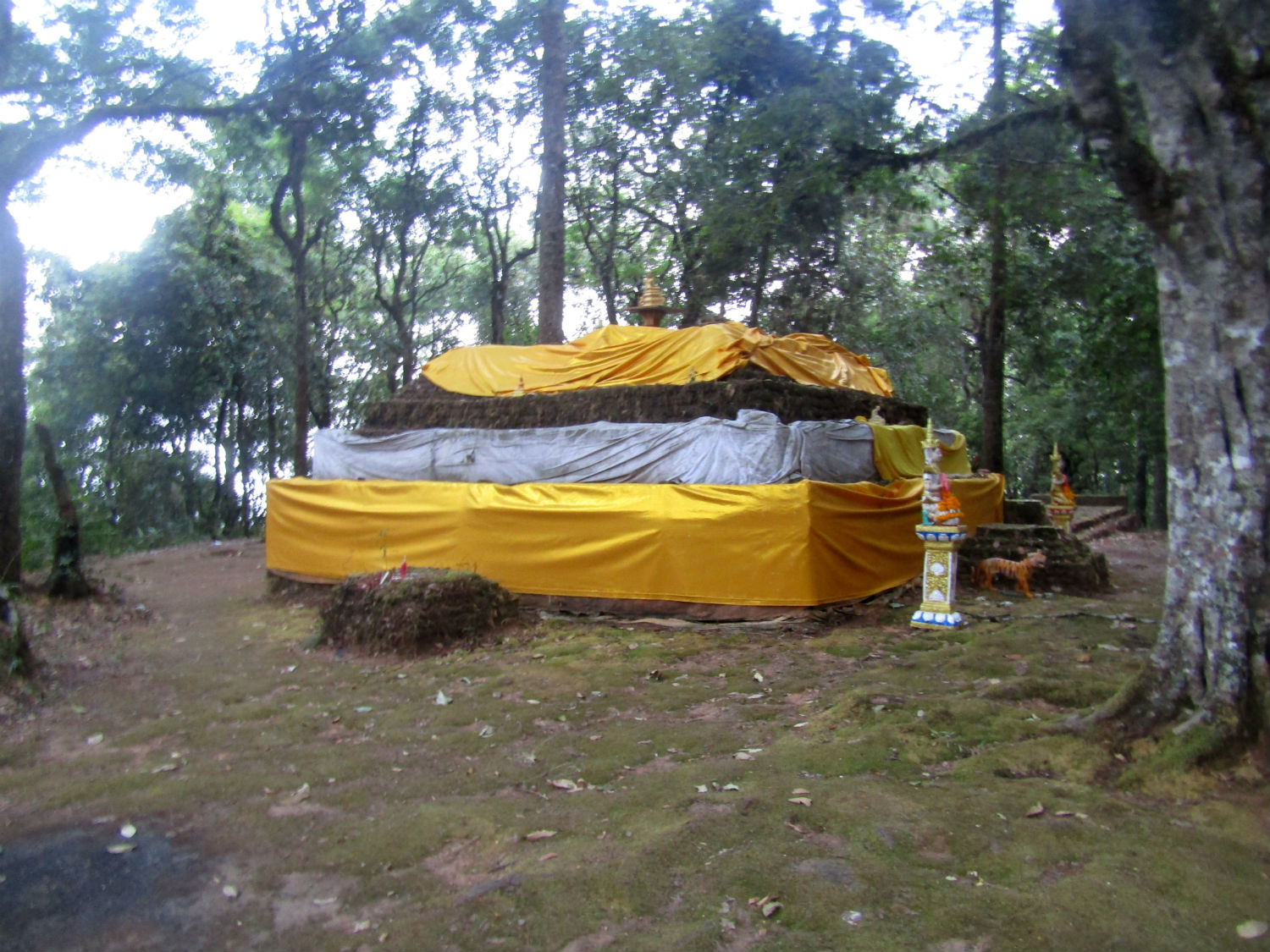 Bhubing Palace and San Ku Ruins (right), Mueang Chaing Mai District, Chiang Mai Province
Bhubing Palace and San Ku Ruins (right), Mueang Chaing Mai District, Chiang Mai Province
Final throw of the dice……..
Remembering journeys from the past, dare I this late in the day head further into the mountains where a couple more sites interest me? Let’s try. A few kilometres more leads to a road to the Hmong Village but further still is a viewpoint looking across to Doi Pui where a few resilient travelling have made it here, one using a drone to spectacular effect high above the Hmong Village. Finally I reach a point where we must return to avoid returning in the dark. I locate the ancient ruin San Ku with a chedi (ku) and viharn perched on the mountainside.
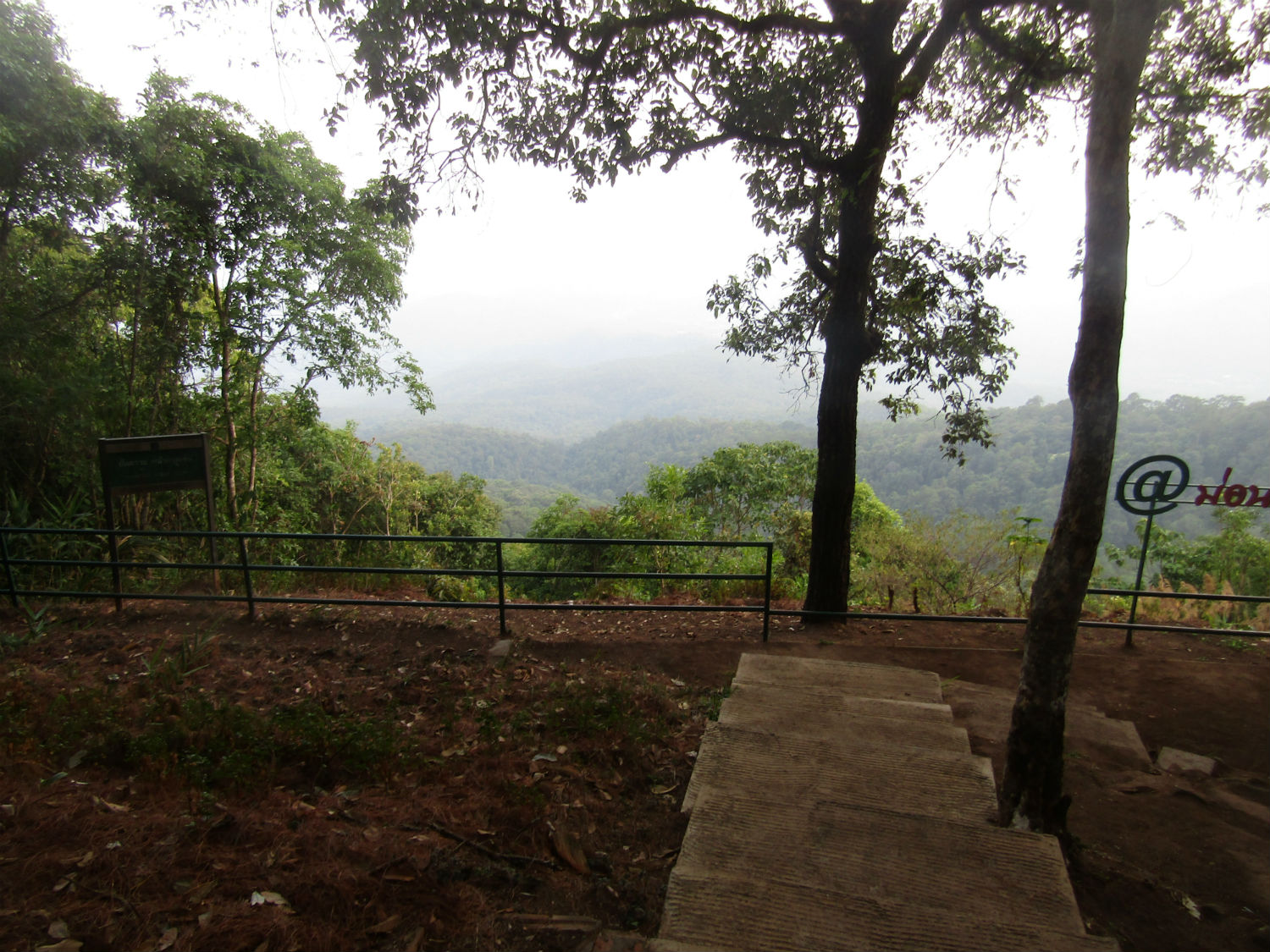
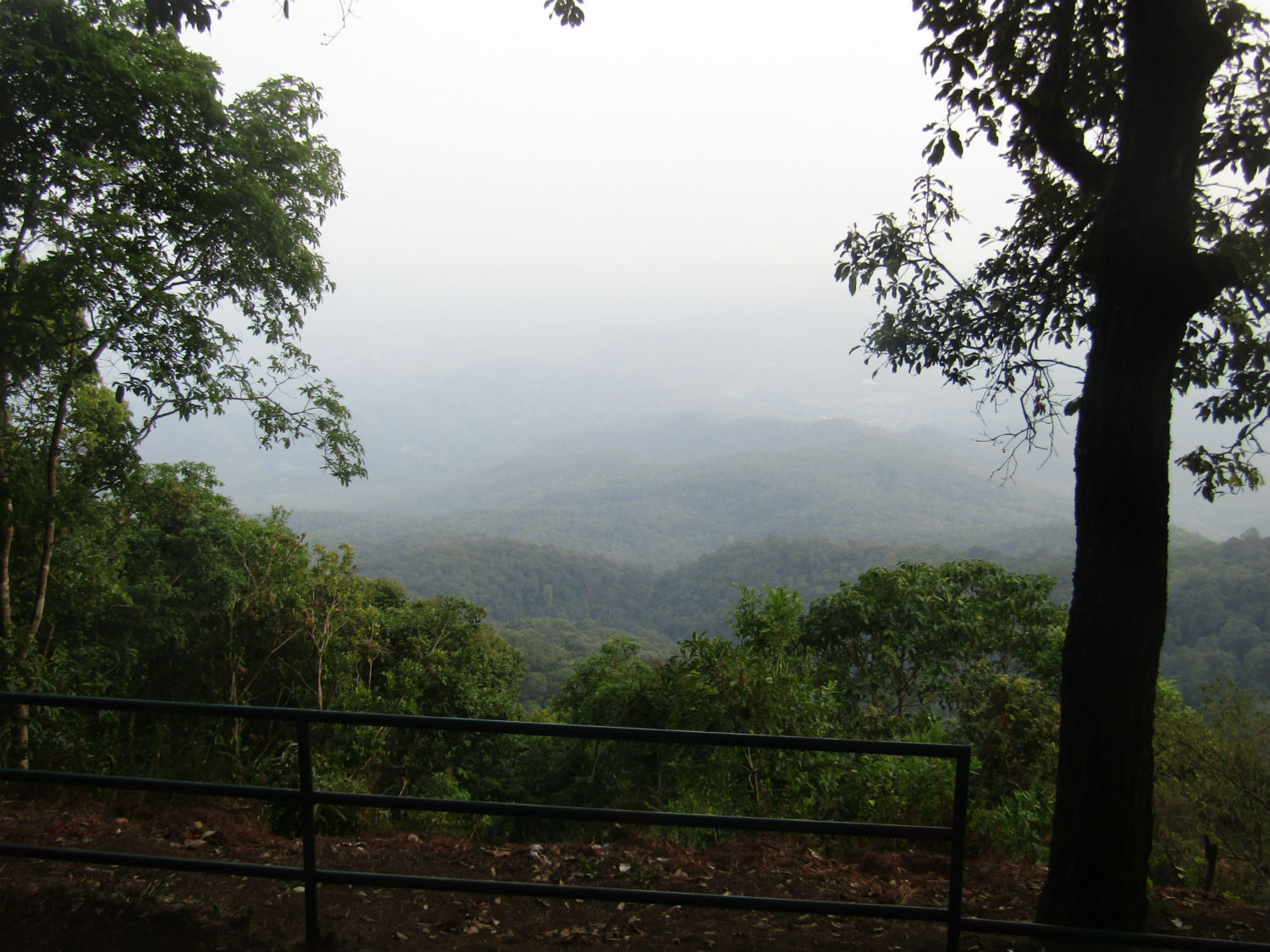
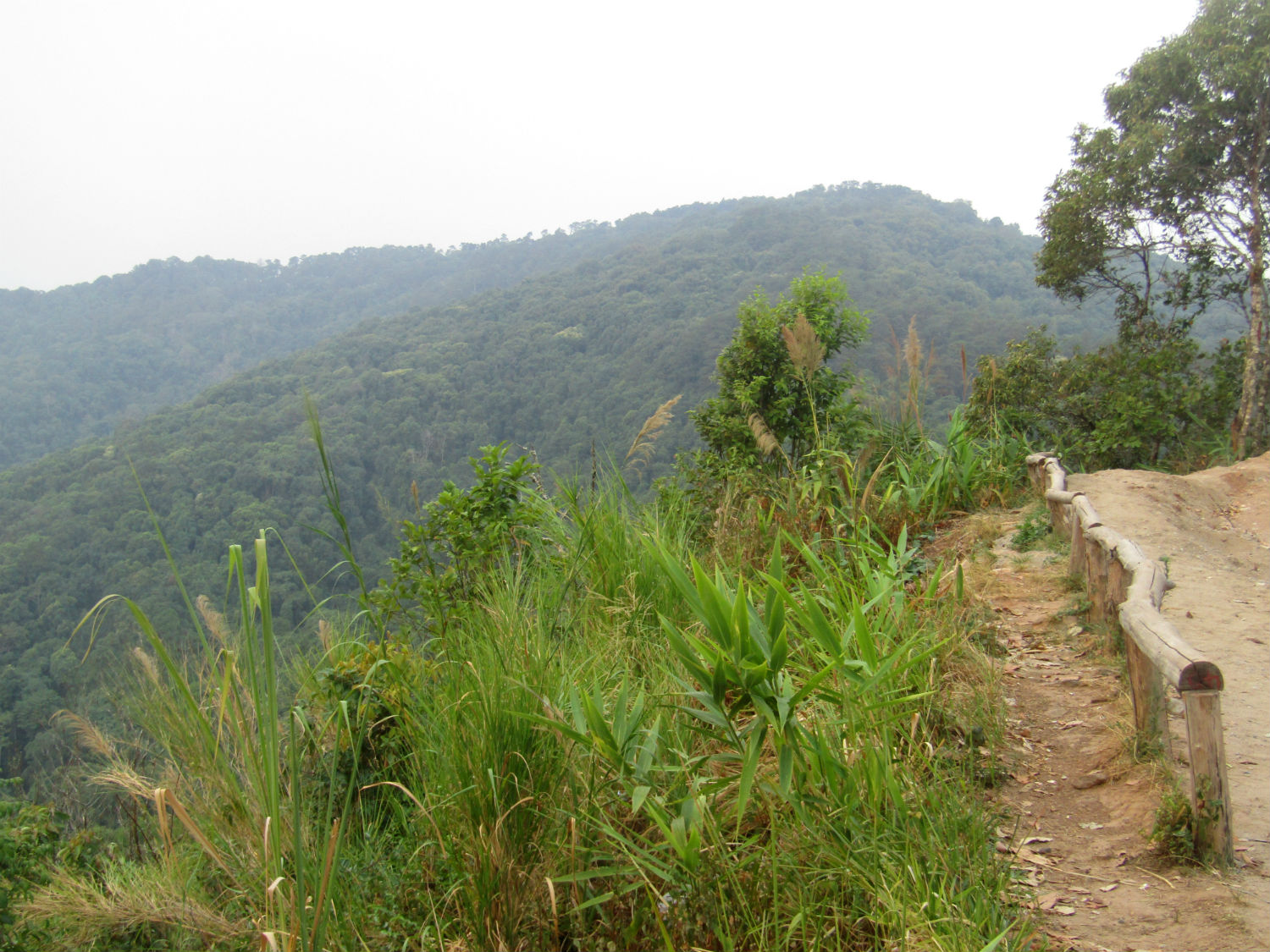 Doi Pui Viewpoint, Mueang Chaing Mai District, Chiang Mai Province
Doi Pui Viewpoint, Mueang Chaing Mai District, Chiang Mai Province
Hmong Village……..
Returning down the mountain, a 2 kilometre detour takes is into the Hmong village; I’m really stretching it out as much as I can. There's just enough time to take a few photographs. Heading back past the palace and Wat Phra That Doi Suthep we complete the decent just as darkness closes in.
Dinner is a more lavish affair than we've recently been used to, taken near Wat Suan Dok. Back at B2 I’m shattered and cannot concentrate on writing up my blog. That’s going to be difficult now tomorrow while trying to cram in as much as we can before returning to Bangkok. Next Page.
Dinner is a more lavish affair than we've recently been used to, taken near Wat Suan Dok. Back at B2 I’m shattered and cannot concentrate on writing up my blog. That’s going to be difficult now tomorrow while trying to cram in as much as we can before returning to Bangkok. Next Page.
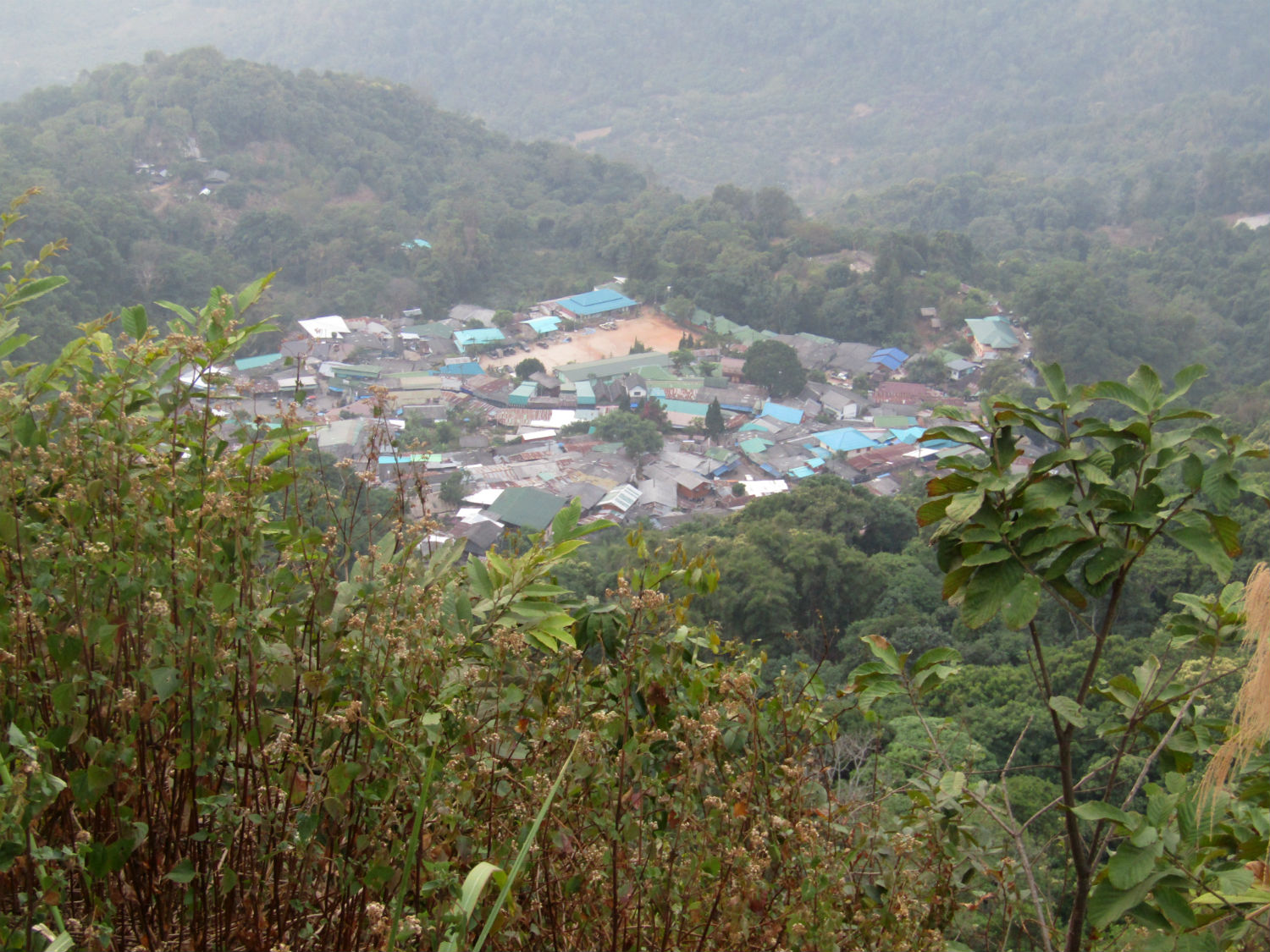

 Hmong Village, Mueang Chaing Mai District, Chiang Mai Province
Hmong Village, Mueang Chaing Mai District, Chiang Mai Province